

The EARCOS Triannual JOURNAL
A Link to Educational Excellence in East Asia FALL 2025

Featured in this Issue
Leadership Leading Together for a Stronger Community: Board Chair–Head of School Partnership
Curriculum
A Spoonful of Sugar: Sweetening Science with the STEAM Approach in Biology
Green & Sustainable Sustainability as a Transformative Practice: Connecting Art and Environmental Awareness
THE EARCOS JOURNAL
The ET Journal is a triannual publication of the East Asia Regional Council of Schools (EARCOS), a nonprofit 501(C)3, incorporated in the state of Delaware, USA, with a regional office in Manila, Philippines. Membership in EARCOS is open to elementary and secondary schools in East Asia which offer an educational program using English as the primary language of instruction, and to other organizations, institutions, and individuals.
OBJECTIVES AND PURPOSES
* To promote intercultural understanding and international friendship through the activities of member schools.
* To broaden the dimensions of education of all schools involved in the Council in the interest of a total program of education.
* To advance the professional growth and welfare of individuals belonging to the educational staff of member schools.
* To facilitate communication and cooperative action between and among all associated schools.
* To cooperate with other organizations and individuals pursuing the same objectives as the Council.
EARCOS BOARD OF TRUSTEES
Catriona Moran (Saigon South International School), President
James Dalziel (NIST International School), Vice President
Jim Gerhard (Seoul International School), Secretary
Rami Madani (The International School of Kuala Lumpur), Treasurer
Gregory Hedger (The International School Yangon), WASC Representative
Karrie Dietz (Australian International School Singapore)
Matthew Parr (Nagoya International School)
Marta Medved Krajnovic (Western Academy of Beijing)
Maya Nelson (Jakarta Intercultural School)
Kevin Baker (American International School Guangzhou), Past President
Margaret Alvarez (WASC), Ex-Officio
Andrew Hoover (Office of Overseas Schools, REO, East Asia Pacific)
EARCOS STAFF
Edward E. Greene, Executive Director
Cameron Janzen, Deputy Director
Bill Oldread, Assistant Director Emeritus
Kristine De Castro, Assistant to the Executive Director
Maica Cruz, Events Coordinator
Porntip (Joom) Rattanapetch, Administrative Assistant & Membership Coordinator
Edzel Drilo, Professional Learning Weekend, Sponsorship & Advertising Coordinator, Webmaster
RJ Macalalad, Accounting Staff
Rod Catubig Jr., Office Staff
East Asia Regional Council of Schools (EARCOS)
Brentville Subdivision, Barangay Mamplasan, Binan, Laguna, 4024 Philippines
Phone: +63 (02) 8779-5147 Mobile: +63 917 127 6460
Satellite Office
39/7 Soi Nichada Thani, Samakee Road, Bangtalad Sub-District, Pakkret District Nonthaburi 11120, Thailand
Breaking Bad... Habits in Science Education: Culturally Responsive Approaches to Teaching Chemistry By Dr. David Knuffke, Ms. Vivian Huang, and Mr. Paul Booth
50 An Action Research Study at an International High School to Improve AP Computer Science A Student Learning Through AI-Driven Feedback By Yohan (John) Kong
53 From Inquiry to Impact: How Action Research Can Transform Your School By Jon Nordmeyer
54 Developing the Professional: Investment in Teachers and Language Learners by South Korean EARCOS Members By Nate Kebbas
58 Embedding Purpose: How Service Learning is Transforming Our Sixth Form By Michael Browning
60 Timely Choices: Modeling Sustainability for Lifelong Learners By Mr. Anshu Verma 62
Sustainability as a Transformative Practice: Connecting Art and Environmental Awareness By Catherine Traicos
64 Moonlight: Looking for a Life-Changing Educational Adventure for Your Students?
66 Elementary Art Gallery
- Busan Foreign School
- International School Ulaanbaatar
- Mt. Zaagkam School
Global Citizenship Community Service
Rise & Thrive By Megan Wong (page 49)
Our New Chapter-Play it Forward By Shian Joo (page 57)


Executive Director’s Message
Greetings and welcome to the first issue of the EARCOS-Tri-annual Journal for the 2025-2026 year. By the time you receive this issue the ‘new’ school year won’t feel so ‘new,’ with memories of what I hope was a restful and productive ‘summer’ holiday now fading a bit too rapidly!
As wonderful as a long summer break may be, it is great to be back in school working together with one another and sharing our days with our students. The energy, happiness and hope one feels when walking past classrooms is something you just cannot find anywhere else. Being an international educator has many benefits, but the greatest gift of all is the remarkably diverse group of students with whom we spend our days. So often we talk about how our classrooms—and our international school communities—are microcosms of the world we strive to create for the future. The future we hope to create seems a very long away some days, I must say.
What we do as international educators all comes back to one simple truth—it is always and only about the students. Our students look to us for the guidance, the support, the understanding, the respect and, yes, the love, they need to step with confidence into tomorrow. Which leads me to ask you to consider the following.
The letters DEIB may be out of political favor in some corners, but there is nothing political about what they embrace. Diversity, equity, inclusion, and belonging remain quintessential to the mission of education—just as they were for decades before DEIB became a lightning rod. As educators, we need to go beyond fraught politics and double down on the commitment we made to our students when we became educators in the first place—the commitment to create learning communities where everyone is welcome, where everyone is included, and where all are nurtured and respected for who they are and who they can and will become. This is what it means to deliver on our promise to the young people whose futures have been entrusted to us. This is the heart and soul of an international school. This is what we at EARCOS strive to support.
In this regard, I’d like to remind you that what you do in your school setting resonates deeply with your colleagues all across this vast region. We all share a vision and purpose. So, please, use this journal, your journal, to share your ideas, your initiatives, and the solutions you have implemented to create the school your students need and deserve. We look forward to hearing from you.
Wishing you and your students a wonderful school year ahead.

Edward E. Greene, Ph.D. Executive Director
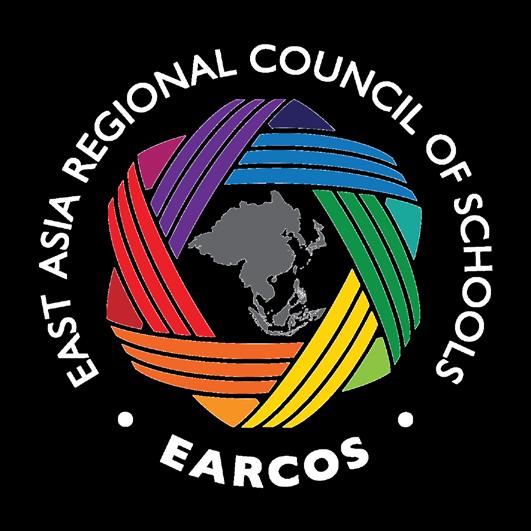




Dates, Deadlines, & UPCOMING EVENTS




GLOBAL CITIZENSHIP AWARD
APPLICATION DEADLINE: MAY 15, 2026
This award is presented to a student who embraces the qualities of a global citizen. This student is a proud representative of his/her nation while respectful of the diversity of other nations, has an open mind, is well informed, aware and empathetic, concerned and caring for others encouraging a sense of community and strongly committed to engagement and action to make the world a better place. Finally, this student is able to interact and communicate effectively with people from all walks of life while having a sense of collective responsibility for all who inhabit the globe.
GLOBAL CITIZENSHIP COMMUNITY SERVICE GRANT
APPLICATION DEADLINE: JULY 15, 2026
Students designated by their schools as a Global Citizen are eligible to apply for one of six $500 Community Service Grants. These grants are awarded to Global Citizens who are actively involved in a service project benefiting either children, adults, or the environment. The grant is intended to enhance and support the student’s continued efforts with the project during the final year of high school. Interested students are asked to work with their high school principal or designated faculty advisor to complete the application which is found below.
THE RICHARD T. KRAJCZAR HUMANITARIAN AWARD
APPLICATION DEADLINE: JUNE 1, 2026
The EARCOS Board of Trustees has established the Richard T. Krajczar Humanitarian Award to recognize, each year, the work of one not-for-profit organization with a proven record of philanthropy in the East Asia/Pacific Region.
For more information please visit the earcos.org website.
ELM MENTORSHIP
Those interested in joining the program as mentors or mentees are invited to complete the registration and preference ELM questionnaire. Registration for the program is ongoing at https://tinyurl. com/tae2jqz
SPONSORED WEEKEND WORKSHOPS
Teach Students to Be Better Writers by Teaching with Mentors
October 4- 5, 2025
The International School of Kuala Lumpur
Consultant: Carl Anderson
Format: In-Person
Coordinator: Azra Pathan, apathan@iskl.edu.my
Seeing the Whole Student: Data, Storytelling, and Wellbeing Equity
October 18- 19, 2025
Dulwich International High School Suzhou
Consultant: Matthew Savage
Format: In-Person
Coordinator: Murdoch Ian Mackay, murdoch.mackay@dulwich.org



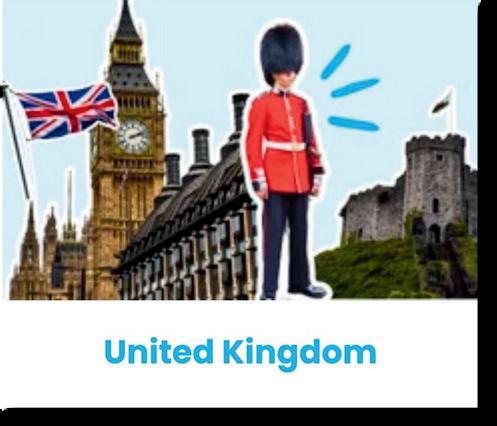
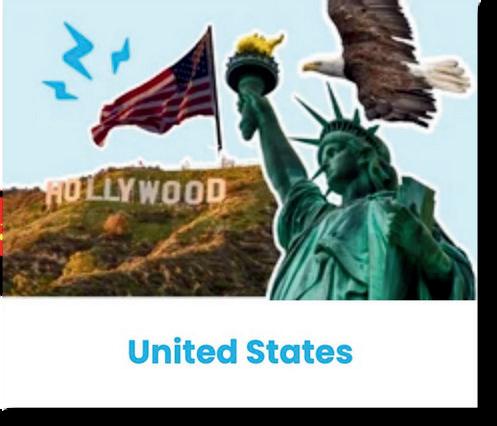


BASIS International School Bangkok
Changchun American International School
King Mongkuts Institute of Technology Ladkrabang Demonstration School
Le Jardin Academy
Welcome New Schools >> Welcome
New Heads >>
Australian International School Vietnam
Bali Island School
Beijing World Youth Academy
Forest City International School
Fukuoka International School
Georgia School Ningbo
Hanoi International School
Hillcrest International School
King Mongkuts Institute of Technology
Ladkrabang Demonstration School
Korea International School-JeJu Campus
Le Jardin Academy
Myanmar International School
Sekolah Pelita Harapan-Kemang Village
Jon Standen
Richard Reilly
Hong Wang
Fred Li
Matthew Kimber
Cavon Ahangarzadeh
Bradley Ringrose
Valerie Johnson
Marc Bourget
Patrick Carroll
Earl T. Kim
Linda Howe
Dale Wood
TH School, Hanoi
Thai International School
Myanmar International School Yangon
Shenzhen Foreign Languages GBA Academy
Shenzhen Shekou Int'l School
St. Mary’s International School
TH School, Hanoi
Thai International School
THINK Global School
True North International School
United Nations Int'l School of Hanoi
United World College of South East Asia
UWC Thailand International School
Wesley International School
Western Int'l School of Shanghai
Yokohama International School
Welcome New High School Principals >>
Ascot International School
Asia Pacific International School
Australian International School
Australian Int'l School Vietnam
Avenues Shenzhen
Bandung Alliance Intercultural School
Beijing World Youth Academy
Branksome Hall Asia
British School Manila
Canadian Int'l School - Vietnam
Canadian Int'l School Bangalore
Canadian Int'l School of Singapore
Canggu Community School
Chinese International School Manila
CIA FIRST International School
East-West International School
Ekamai International School
Forest City International School
Georgia School Ningbo
Gyeonggi Suwon Int'l School
Hanoi International School
Hillcrest International School
Hong Kong Academy
Hsinchu County American School
Hsinchu International School
International School Manila
International School of Busan
International School of Qingdao
Gary Craggs
Alix Kasmarick
Peter Ellis
Lee Childs
Corey Watlington
Elizabeth LaMertha
Robert Wang
Morgan Murphy
Mark Attwood
Tim Ward
Kevin Thomas
Peter Fremaux
Charlotte Hulks
Martin Frias
Jerome Banks
Evangeline Villagonzalo
Karl Snell
Fred Li
Daniel Viccars
Stuart Evans
Clare Gibbings
Steve Bilimek
Joanna Crimmins
Jeff Buscher
Samuel Livingston
Justin Alexander
Paul Horkan
Justin Crull & Julio Morales
International School Suva
King Mongkuts Institute of Technology
Ladkrabang Demonstration School
Korea Kent Foreign School
Nansha College Preparatory Academy
Oasis Int'l School - Kuala Lumpur
Saigon South International School
Sekolah Pelita Harapan Lippo Village
Shanghai Qibao Dwight High School
Shenzhen Foreign Languages GBA Academy
Singapore American School
St. Joseph’s Institution International
Stamford American Int'l School
Surabaya Intercultural School
Suzhou Singapore Int'l School
Terry Linton
Greg Smith
Andrew Davies
Tom Prado
Jen Buchanan
Gerald Schoen
Liz Gale
Nick Alchin
David Griffith
Hope Kim
Jeremy Williams
Carla Marschall
Olivia Ayes
Marc Bourget
Justin Barg
Jay Langkamp
Meganne Benger
Daniel Smith
Levi Bollinger
Michael Coury
Stuart Simpson
Darnell Fine
Oonagh McGarrity
Courtney Malone
George Santiago
Jason Lusby
The American School of Bangkok - Kyle Bilodeau
Green Valley Campus
The Sultan’s School
Tokyo West International School
True North International School
UWC Thailand International School
VERSO International School
Western Academy of Beijing
Western Int'l School of Shanghai
Yew Chung International School of Beijing
Yew Chung International School of Chongqing
Sarah Newton
Sockchong Han
Gerald Schoen
Alice Greenland
Giles Pinto
Jaime Pustis
Greg Peebles
Chris Jarrett
Garry James
Chayaphol Leeraphante
Welcome New Middle School Principals >>
American International School Hong Kong
American School in Taichung
American School of Bangkok, Sukhumvit (XCL)
Australian International School
Australian International School Vietnam
Avenues Shenzhen
Bandung Alliance Intercultural School
Beijing International Bilingual Academy
Branksome Hall Asia
Brent International School Subic
Canadian International School - Vietnam
Canadian International School of Singapore
Carmel School
Forest City International School
Georgia School Ningbo
German European School Singapore
Grace International School
Hanoi International School
Hsinchu County American School
International Christian School - Hong Kong
International School Dhaka
International School of Busan
International School of the Sacred Heart
Korea Kent Foreign School
Jennifer Betram
Sara Hall
Mechum Purnell
Peter Ellis
Lee Childs
Corey Watlington
Elizabeth LaMertha
Meredith Phinney
Matthew Johnson
Trevor Cory
Tim Ward
Peter Fremaux
Rachel Friedmann
Fred Li
Johann Schonken
Travis Klump
Martin Choi
Ms. Clare Gibbings
Jeff Buscher
William Schroeder
Steven Ellis
Paul Horkan
Karen Wilson
Justin Barg
Lanna International School Thailand
Nansha College Preparatory Academy
NIST International School
NIVA American International School
Oasis International School - Kuala Lumpur
Oberoi International School
Renaissance International School
Ruamrudee International School
Matthew Whitwel
Joseph Pomainville
Stuart Donnelly
Reuben Budayao
Travis Copus
Will Hurtado
Stephen Isaacs
Mark Dominguez
Sekolah Pelita Harapan Lippo Village Eseta McIntyr
Shenzhen Foreign Languages GBA Academy
Stamford American International School
Surabaya Intercultural School
Suzhou Singapore International School
Stuart Simpson
Jim Slaid
George Santiago
Jason Lusby
The American School of Bangkok - Kyle Bilodeau
Green Valley Campus
The International School of Kuala Lumpur
True North International School
UWC Thailand International School
VERSO International School
Kyle Martin
Gerald Schoen
Michael Sheridan
Giles Pinto
Yew Chung International School of Qingdao Ves Ivanov
Yew Chung International School of Shanghai Ian Lee
Welcome New Elementary School Principals >>
Ascot International School
Avenues Shenzhen
Beijing International Bilingual Academy
Beijing World Youth Academy
Brent International School Manila
Brent International School Subic
Canadian International School Bangalore
Canadian International School of Singapore
Canadian International School, Tokyo
Carmel School
Chatsworth International School
Cheongna Dalton School
Christian Academy in Japan
Dulwich College Suzhou
East-West International School
Forest City International School
Green Oasis School / Shenzhen Oasis Int'l School
Hanoi International School
Hillcrest International School
Hsinchu County American School
International School of Ulaanbaatar
K. International School Tokyo
Keystone Academy
Korea Kent Foreign School
Kunming International Academy
Nagoya International School
NIST International School
NIVA American International School
Panyaden International School
Renaissance International School
Sekolah Pelita Harapan Lippo Village
Shenzhen Foreign Languages GBA Academy
Lisa Thorpe
Corey Watlington
Lynne Morrin
Timothy Sharpe
Lenore Baldwin
Trevor Cory
Chris Mockrish
Johnathan Daniels
Matt Christie
Rachel Friedmann
Kelley Benjamin
Jason Baker
John Van Hofwegen
Nick Casey
Justin Bisiker
Undrea Conley
Carel West
Lara Johnston
Leanna Doran
Nathan Bryant
Regine De Blegiers
Matthew Archer
Marcelle van Leenen
Justin Barg
Rajan Chana
Mihoko Chida
Kimberley Connlin
Alexander de Guzman
Kathryn Mills
Rachel Mcleod
Yuniarti Kat
Leda Cedo
Shenzhen Shekou International School
Surabaya Intercultural School
Suzhou Singapore International School
Thai International School
Erin Threlfall
Yasoda Deva
Stacy Molnar
Maksymilian Crawford
The American School of Bangkok - Tanya Sweeney
Green Valley Campus
The British School New Delhi
The International School Yangon
The Sultan’s School
Tohoku International School
Vientiane International School
Yangon International School
Nicola Mary Matthews
Geoff Heney
Stephen Braithwaite
Tayla Morro
Elizabeth Overby
James Joubert
American School of Bangkok, Sukhumvit (XCL) Rebecca Carter
Australian International School
Australian International School Phnom Penh
Avenues Shenzhen
Brent International School Manila
Brent International School Subic
Canadian Academy
Concordia International School Shanghai
Dominican International School
Dulwich College Suzhou
German European School Singapore
Hong Kong International School
International School Manila
Welcome Early Childhood Principals >> Welcome
Stuart Armistead
Zoe Heggie
Corey Watlington
Lenore Baldwin
Trevor Cory
Heikki Soini
Shannon Keane
Nick Casey
Anna Ciezczyk
Elizabeth Elizardi
Anissa Eglington
International School of Dongguan
Lanna International School Thailand
Nagoya International School
Renaissance International School
Sekolah Pelita Harapan Lippo Village
Shanghai American School
Thai International School
Thalun Int'l School Learning Leader
Jamie Nelson
Amy Ramsey
Mihiko Chida
Sharmila Ramesar
Kathleen Yi
Sonia Barghani
Maksymilian Crawford
The American School of Bangkok - Tanya Sweeney
Green Valley Campus
True North International School
Vientiane International School
New Associate Institutions >>
ABRSM
www.abrsm.org
Service offered: Assessment (music exams), publishing (sheet music), Digital resources, Teacher & curriculum support.
Alma Student Information System
www.getalma.com
Service offered: Student Information System, School Management System.
ANZUK Education
https://anzuk.education/au/
Service offered: Education recruitment services.
AssessPrep
https://www.assessprep.com/
Service offered: Digital Assessment Platform for all Schools/Ed-tech SaaS.
Building Capacity Education Services
www.aubreycurran.com
Service offered: Customized consultancy and professional development opportunities.
Chapters International
www.chaptersinternational.com
Service offered: Professional Development.
Class Wizard
www.classwizard.ai
Service offered: Assessment automation fully integrated with leading LMS platforms.
Eblana Learning
www.eblanalearning.com
Service offered: Professional development.
Edusfere
https://edusfere.com/
Service offered: Curriculum Development, Mapping and Management Software Platform.
Flint
https://www.flintk12.com/
Serviced offered: AI software for students and teachers.
Global Philanthropic
https://globalphilanthropic.com/
Harvard Graduate School of Education
https://www.gse.harvard.edu/professionaleducation
Service offered: Professional development programs led by Harvard faculty on campus and online.
Instructure Australia Pty Ltd
www.instructure.com
Service offered: EdTech Provider/Software.
JUMP! Foundation
https://jumpfoundation.org/
Service offered: Experiential Education.
Leo Capital Corp (Hong Kong)
Limited https://leowealth.com/
Service offered: Wealth Management, Investments, Tax Planning & Preparation, Insurance, Retirement Planning Services.
Limewing Talents UK
https://www.limewing.co.uk/
Service offered: Recruitment a Service Provider.
Terri Pham
Elizabeth Overby
Macmillan Learning
www.macmillanlearning.co.uk
Service offered: Advanced Placement Qualification Textbook and Digital Resource Publisher.
Metrics China
www.metricschina.com
Service offered: MAP assessments supplier in China/K-12 English original audiobooks/English speech recognition technology.
Moreland University www.moreland.edu
OBELAS
https://obelas.com/
Service offered: EdTech, Publisher of K12 Curricula.
Otus
https://otus.com/
Service offered: Information Technology.
PowerSchool
www.powerschool.com
Service offered: K-12 Education technology.
Prevention Ed www.preventioned.org
Service offered: Alcohol and other drug prevention.
Progression
thailandclimbing.com
Service offered: Outdoor Education Programs and Executive coaching/team building.
Sr. Jean Bergado, O.P.
Ma. Zenaida R. De Guzman
Samsung Electronics (Southeast Asia & Oceania)
www.samsung.com
Service offered: Immersive learning experience via Samsung Tablets and Electronic Boards.
Schoolata
www.schoolata.com
Service offered: Market intelligence for schools.
SchoolSuite
schoolsuite.com.au
Service offered: Unlock limitless possibilities with SchoolSuite's headless Content Management System.
SMART Technologies ULC
smarttech.com
Service offered: Manufacturer of Interactive Flat Panels and Learning Software.
SmileTax
https://smile.tax
Service offered: US tax preparation and filing for expats.
TeachUp
www.teachup.org
Service offered: Child Safeguarding, Student Wellbeing and Professional Development.
Terralabz
https://www.kidzinkdesign.com/terralabz Service offered: Terralabz delivers bespoke lab design, manufacture, and installation.
University of Hawaii - West Oahu https://westoahu.hawaii.edu/
University of Saint Joseph https://www.usj.edu.mo/en
Veracross
www.veracross.com
Service offered: School Information System designed exclusively for K-12 independent schools.
Verkada
verkada.com
Service offered: Physical Security Manufacturer.
Virtually ConnectEd
www.virtuallyconnectedu.com
Service offered: Virtual Special Education and Support Services.
Wellio Education
https://www.wellioeducation.com/
Service offered: Customisable wellbeing program with 300+ editable lessons, interactive delivery, and real-time data to inform planning and parent reporting.
Wide Eyed Tours
www.wideeyedtours.com
Service offered: Tailor made educational trips for school and university groups in SE Asia
Widgit Software
widgit.com
Service offered: Symbols-based communication software and resources for education.
World Volunteer
http://world-volunteer.com/
Service offered: Outdoor/experiential education provider focused on service-learning
Yew Chung College of Early Childhood Education https://www.yccece.edu.hk/en
zenda Technologies Middle East Ltd. https://www.zenda.com/
Service offered: zenda is a specialist financial technology partner to schools, colleges & nurseries, building products exclusively for the education sector.
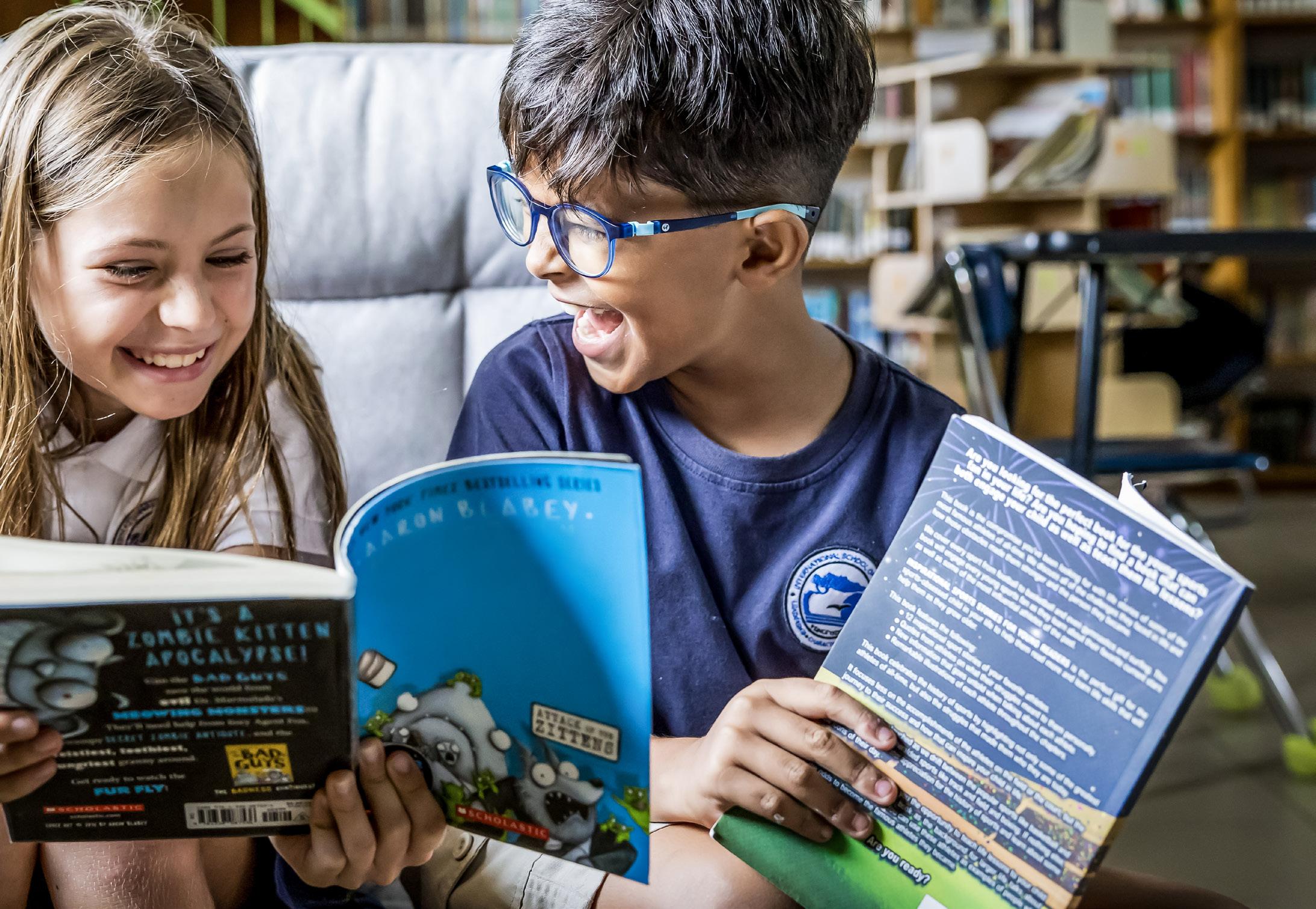
Seewhere ISScantake





Global Citizenship Awardees >> List of Global Citizenship Award 2025 Winners
This award is presented to a student who embraces the qualities of a global citizen. This student is a proud representative of his/her nation while respectful of the diversity of other nations, has an open mind, is well informed, aware and empathetic, concerned and caring for others encouraging a sense of community, and strongly committed to engagement and action to make the world a better place. Finally, this student is able to interact and communicate effectively with people from all walks of life while having a sense of collective responsibility for all who inhabit the globe.

Access International Academy Ningbo Huaizhou Zhang
American Int'l School Hong Kong
Keertidha Sundar Sundar
American Int'l School of Guangzhou Zhan Yi Willard Mou
American School Hong Kong Ngo Yan Valiant Leung
American School of Bangkok, Sukhumvit (XCL) Ravikarn Dechkerd
Ayeyarwaddy International School Kyi Phyu Ye Soe
Bali Island School
Bandung Alliance Intercultural School
Justine Soline Blanche
Angelique Kezia Chandra
Bandung Independent School Ardelle Yuditama
Bandung Independent School Rani Simanjuntak
Brent International School Manila Joshua Ethan Fulo
Brent International School Subic Seung Won "Andy" Min
British School Manila Beatrice Lim
Busan Foreign School
Canadian Academy
Jaeun Joy Cho
Aimi Kaarina Palmu
Canadian Int'l School Bangalore Haengbok Jang
Canadian Int'l School of Hong Kong
Canadian Int'l School of Singapore
Gabriella Pippa Chan
Deepanwita Agarwal
Canadian Int'l School, Tokyo Yuna Kanno
Canggu Community School Bo Beckman
Cebu International School Raya Leigh Besido
Chatsworth International School
Christian Academy in Japan
Akshit Govil
Daniel Shew
Concordia International School Hanoi HyeIn Jeon
Concordian International School Thanakorn (Burger) Sajjavarodom
Daegu International School Leanne Yoon
Dalian American International School Chih-Ming Chen
Dulwich Int'l High School Suzhou Charlotte Gou
Dwight School Seoul
Sara Ball
European Int'l School Ho Chi Minh City Vi Lam Dinh
Garden Int'l School Kuala Lumpur
Hanoi International School
Hokkaido International School
Thomas Lee
Bao Anh (Katy) Phan
Joohye Hwang
Hong Kong Academy Hailey Ho
Hong Kong International School Amber Ting
IGB International School Suhani Chhabra
Int'l Bilingual School of Hsinchu Jo-Yu Huang
Int'l Christian School - Hong Kong Gianna Yee Kwan Chung
Int'l Community School - Singapore Chiara Song
International School Bangkok Chinnapong Kulmanochwong
International School Dhaka Orthy Humaira Afia
Int'l School Eastern Seaboard (ISE) Nico Sakaguchi
International School Manila Manushri Khanderao Gaikwad
International School of Beijing
International School of Beijing
International School of Busan
Jia Lee
Brian Hwang
Jackleen Kim
International School of Dongguan Hoi Yan Yen
Int'l School of Nanshan Shenzhen Yuet Tung (Chloe) Wang
International School of Phnom Penh Mika Arief
International School of Tianjin You Yang Zhao
International School of Ulaanbaatar Binderiya Balgansuren
International School Suva Daniel Grammatico Di Tullio
ISS International School Yang Ye Aung
Jakarta Intercultural School Aditya Chandra
Kaohsiung American School Justyna Yang
KIS International School Kittiwara Seneewong na Ayudhaya
Korea Int'l School-JeJu Campus Hyunseo (Anthony) Kim
Korea Kent Foreign School Ria Jeong
Lanna International School Thailand Aswin Tantinipankul
Marist Brothers International School Michelle Ranni
Medan Independent School Sienna Gaetano
Mont'Kiara International School Thien Cat Van Nagoya International School Maya Bashore
Nanjing International School Kirsten Joyner
Nansha College Preparatory Academy Junrui "Ray" Deng
NIST International School Sento Ueoka
Osaka International School Lu He Rikuto Hong
Panyaden International School Olamide Phachara Lawal
Prem Tinsulanonda Int'l School Chue (Clio) Sandi
Ruamrudee International School Voranan Puengchanchaikul
Saigon South International School Aruzhan Zatayeva
Saint Maur International School Rosa Maekawa
Seisen International School Risako Tai
Sekolah Ciputra Ezekiel Wondo
Seoul Foreign School Kate Han
Seoul International School Dyne Kim
Shanghai American School - Pudong Campus Ziyue (Mackenzie) Zhu
Shanghai American School - Puxi Campus Sophia Qing'ao Li
Shanghai Community Int'ernationa School - Cho Yen (Audrey) Chiang Hongqiao Campus
Shanghai Community Int'l School - Hector He Pudong Campus
Shen Wai International School Katrina Wong
Shenzhen College of Int'l Education Cisy Tszhei Li
Shenzhen Shekou International School Shian Joo
Singapore Int'l School of Bangkok Proud Prompattanapakdee
St. Joseph’s Institution International Tripti Narula
St. Mary’s International School Yuchan Kim
St. Paul American School Hanoi Haeri Shin
Surabaya Intercultural School Dana Han
Taejon Christian International School Angela Juha Park
TEDA International School Liu Xuan Lin
Thai-Chinese International School
The American School in Japan
Alisa Janechokpinyo
Mirabel Lee
The American School of Bangkok - Su Myint Myat Aung
Green Valley Campus
The Int'l School of Kuala Lumpur
The International School Yangon
United Nations International School of Hanoi
Utahloy International School Guangzhou
UWC Thailand International School
Vientiane International School
Wells International School - On Nut Campus
Western Academy of Beijing
XCL World Academy
Yangon International School
Yew Chung International School of Shanghai
Tommaso Pariani
Pwint Lei Han Kyaw (Anna)
Khue Nguyen
Zijin Cheng
Peiqi Zou
Jiwoo Choi
Anne Fukuura
Chris Liu
Mia Adele Chapa
Ana Julia Schoolman
Angelique Caballero Yang



Global Citizenship Community Grant Recipients >>
All of us here at EARCOS wish to extend our sincere congratulations to the following Global Citizens who have been chosen to receive an EARCOS Global Citizen Community Service Grant of $500 to further their excellent community work during this upcoming academic year. The recipients are:
SCHOOL
Cebu International School
Concordia International School Shanghai
International Bilingual School of Hsinchu
International School Bangkok
International School Manila
NIST International School
Shenzhen Shekou International School
STUDENT NAME
Raya Leigh Besido
Megan Wong
Jo-Yu (Joy) Huang
Chinnapong Kulmanochwong (Tim)
Manushri Khanderao Gaikwad
Sento Ueoka
Shian Joo
PROJECT
Yellow Boat of Hope
Rise & Thrive
Chariate: Be Kind to Your Mind
KRU (Knowledge-Respect-Understanding)
Project Shree Shakti (transl. Divine Empowerment)
From Hair to Health: Multidirectional Approach to Cancer Patient Support
Play it Forward
Leading Together for a Stronger Community: Board Chair–Head of School
Partnership
By Rami Madani, Head of School
The
International School of Kuala Lumpur

The relationship between a school’s Board Chair and Head of School is one of the most pivotal in shaping effective governance and effective leadership. When the relationship is built on mutual trust, open communication, and shared purpose, it enables both strategic alignment and resilience. Yet even the most seasoned professionals can encounter subtle relational dynamics, often unspoken and sometimes unintended, that may prevent this partnership from reaching its potential.
A strong, trusting relationship between the Board Chair and the Head of School is not just desirable, it is foundational to effective governance and institutional health. Research on nonprofit and educational leadership consistently shows that clarity of roles, psychological safety, and mutual trust among senior leaders are critical to strategic alignment and long-term success (Carver, 2006; Kouzes & Posner, 2017; NAIS, 2020). A 2019 NAIS Governance Study found that schools with high-performing Boards were significantly more likely to report strong Chair–Head partnerships, which in turn correlated with increased Head longevity, strategic progress, and positive school climate.
This article assumes a mutual interest and willingness on the part of both the Chair and the Head to reflect, learn, and strengthen their partnership with intention. The Chair–Head relationship is not only a matter of mutual trust but also of shared stewardship of the school’s identity and purpose. Both serve as ambassadors of the school’s guiding statements. While the two roles are closely linked, each operates within a distinct ecosystem shaped by different responsibilities, expectations, and sources of pressure. Every Chair–Head relationship has an overall tone, whether strong, moderate, or strained, yet it can shift temporarily with changes in context, personalities, or circumstances, creating moments that either reinforce or challenge the foundation of trust. Recognizing these shifts helps both leaders navigate challenges without overreacting and focus on the long-term health of the relationship.
Below are some dynamics that tend to impact each role in different ways.
From the Chair’s Perspective:
Board Chairs often carry the weight of representing the collective voice of a diverse Board, while also maintaining a productive and respectful partnership with the Head. They may face pressure to appear firm, independent, or even critical, particularly when other trustees expect them to “hold leadership accountable.” This can at times create an internal conflict when the Chair personally trusts the Head but senses that visible alignment may be misinterpreted as bias. With limited proximity to school life and occasional engagement, Chairs are also expected to quickly grasp complex issues and provide strategic input without overstepping into operations. These dynamics can push the Chair to filter or modulate their communication with the Head, particularly when Board politics or stakeholder expectations are at play.
Unlike Heads, many Chairs receive little formal preparation for the relational demands of the role, relying instead on personal experience and informal guidance. The emotional labor involved in holding the Board–Head relationship with integrity can be significant, especially during times of change or challenge.
From the Head’s Perspective:
Heads of School operate in the daily rhythm of the institution, surrounded by students, staff, parents, and a leadership team that looks to them for immediate clarity and emotional steadiness grounded in educational research and the school’s Guiding Statements. They are expected to inspire, protect, and uphold the school’s values while also advancing strategic goals set by the Board. When difficult Board-level issues arise, Heads may at times weigh the value of full transparency with the Chair against the need to maintain a consistent message and leadership stance with their team, particularly when Board pressure could result in changes the Head would not otherwise advocate.
They may also worry that disclosing uncertainty or missteps could undermine their credibility or create unnecessary concern. As both leaders and bridges between operations and governance, Heads often experience the tension of dual accountability, which naturally influences what they choose to disclose, postpone, or frame carefully.
The following tools are designed as reflective resources to foster personal insight, mutual trust, and growth in the Chair–Head partnership.
Part 1: A Starting Point: The Chair–Head Relationship Continuum
This first tool invites you to reflect on the current quality and nature of your working relationship. The goal is not to label the relationship, but to ask: Where are we today, and what is one shift we can make to move toward a more trusting, strategic partnership?

While this table appears at the start of the article, it may not always be the easiest entry point for conversation between the Chair and Head. The usefulness of the continuum depends on the level of comfort in the relationship. Below are some suggested guidelines for using the continuum based on levels of comfort:
• High comfort: Use the continuum openly in conversation. Reflect on strengths and vulnerabilities with candor.
• Moderate comfort: Begin with individual reflections and then share only the aspects that would lead to the most meaningful transformation. Over time, build greater trust in the partnership.
• Low comfort: This may reflect the early stages of a relationship, a setting where more trust is needed, cultural differences in communication, or a preference for more structured dialogue. Low comfort does not necessarily indicate a problematic relationship. In these cases, it may be best to focus on shared goals without explicitly naming the current dynamic or to work with an external coach or consultant to help shape norms and direction.
In many cases, it may be more helpful to begin by individually reflecting on Part 2 (for the Chair) and Part 3 (for the Head) before debriefing together and identifying next steps.
Common Biases That Erode Trust:
In my training experience and conversations with Chairs and Heads, certain cognitive or cultural biases appear frequently and can subtly undermine trust and clarity in the relationship. Here are a few of the most common:
• Confirmation bias: One or both parties notice only the behaviors that support a pre-existing concern or narrative, reinforcing mistrust or skepticism.
• Cultural bias: Assumptions are made based on one’s own cultural norms around hierarchy, authority, communication, or emo-
tional expression, leading to misinterpretation of tone, intent, or boundaries.
• Egocentric bias: Either party assumes that the other has access to the same context or information, and therefore should fully understand their perspective.
• Attribution error: The Head may interpret the Chair’s questioning as a sign of personal mistrust, when it may instead reflect the Chair’s governance role, concerns raised by other Board members, or even a misunderstanding that could be clarified through dialogue.
Part 2: Chair Reflection Tool: Relational Trust
This table invites Board Chairs to reflect on factors that might influence how open, transparent, and constructive their communication is with the Head of School. It offers a framework for self-awareness and growth, including a self-rating column to assess the influence of each factor and suggested strategies to strengthen trust and partnership over time.
What might diminish candor between the Head of School and the Board Chair?
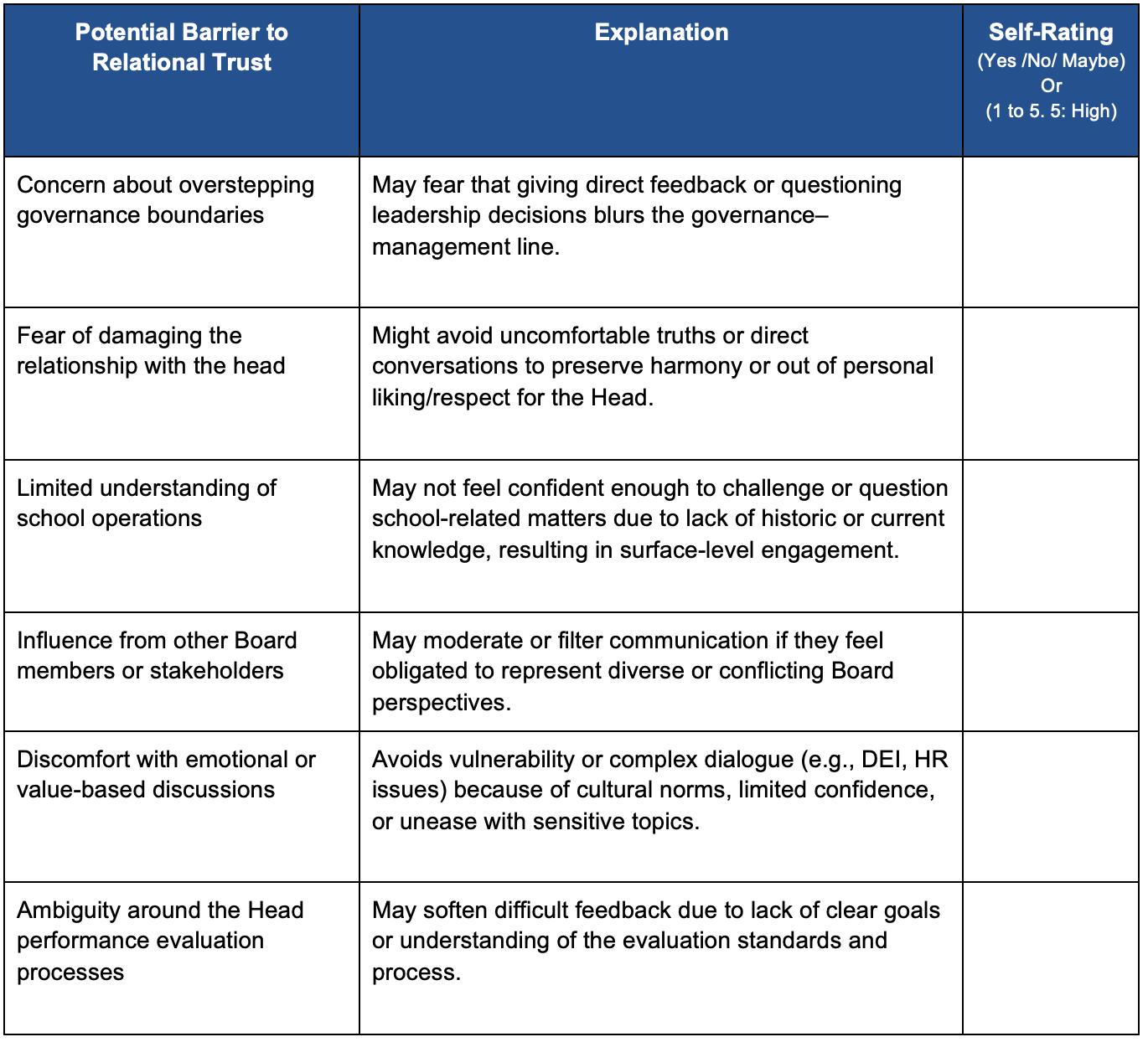
Development Strategies for Board Chairs
Below is a list of strategies that may help address areas with lower ratings in the self-reflection above.
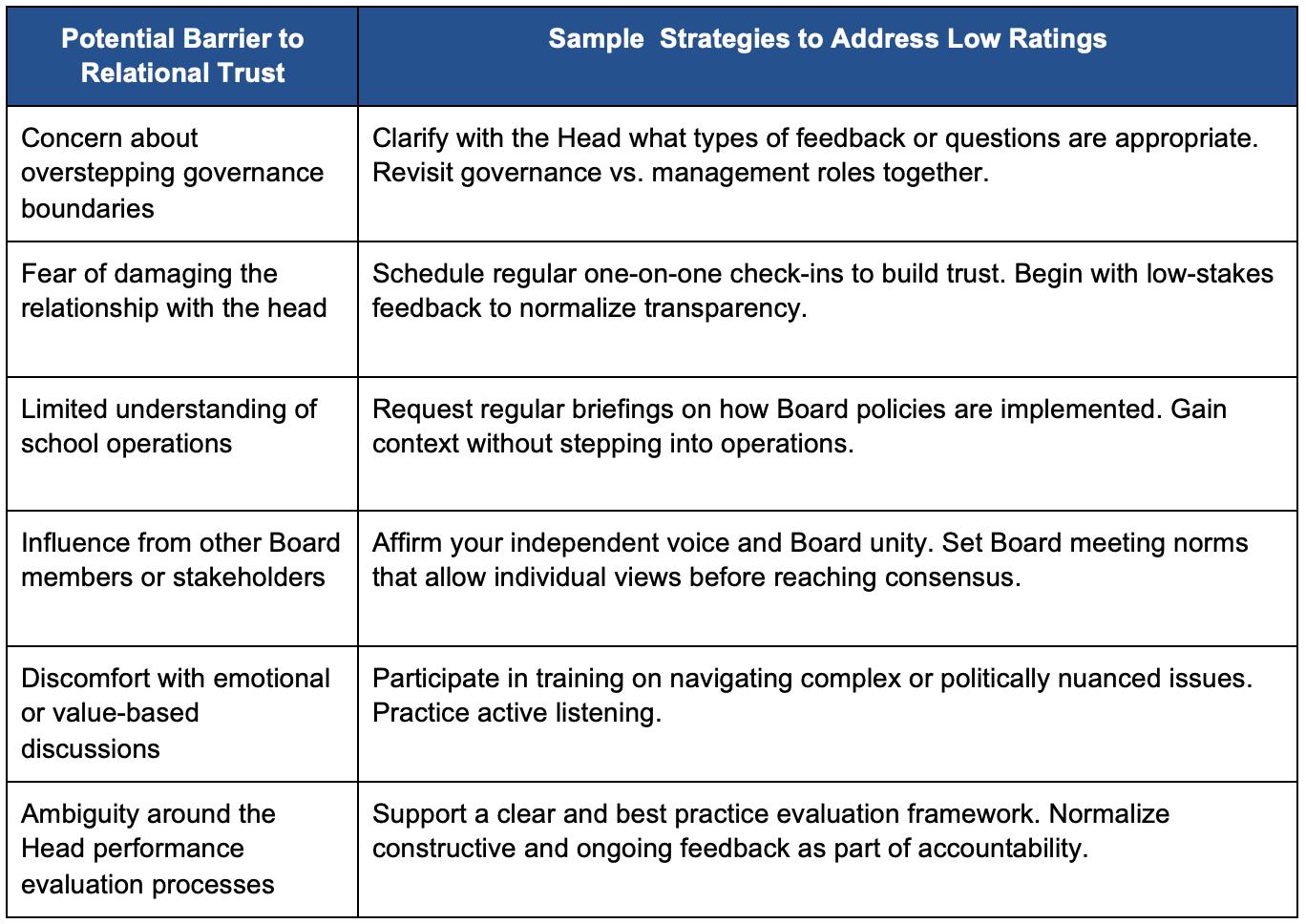

The above strategies are not exhaustive. Their effectiveness depends on context, the Chair’s individual preferences, and level of experience. What matters most is choosing approaches that feel both authentic and sustainable.
To move forward, consider reflecting on the following:
• Which barrier resonates most with me at this time?
• What is one behavior or habit I could shift to build more trust in the relationship?
• Who or what might support me in developing this shift; direct conversation, coaching, structure?
• What signalswould indicate that trust and transparencyare improving?
Even small adjustments in awareness or communication can positively influence the Chair–Head partnership. What matters is being intentional and reflective about your next step.
Part 3: Head of School Reflection Tool: Relational Trust
This table invites Heads of School to reflect on factors that may influence how open, confident, and transparent they are in their communication with the Board Chair. It provides a framework for self-awareness and professional growth, including a self-rating column to assess the influence of each factor and suggested strategies to support trust-building and relational clarity over time.
What might diminish candor between the Head of School and the Board Chair?

Development Strategies for Heads of School
Below is a list of strategies that may help address areas with lower ratings in the self-reflection above.
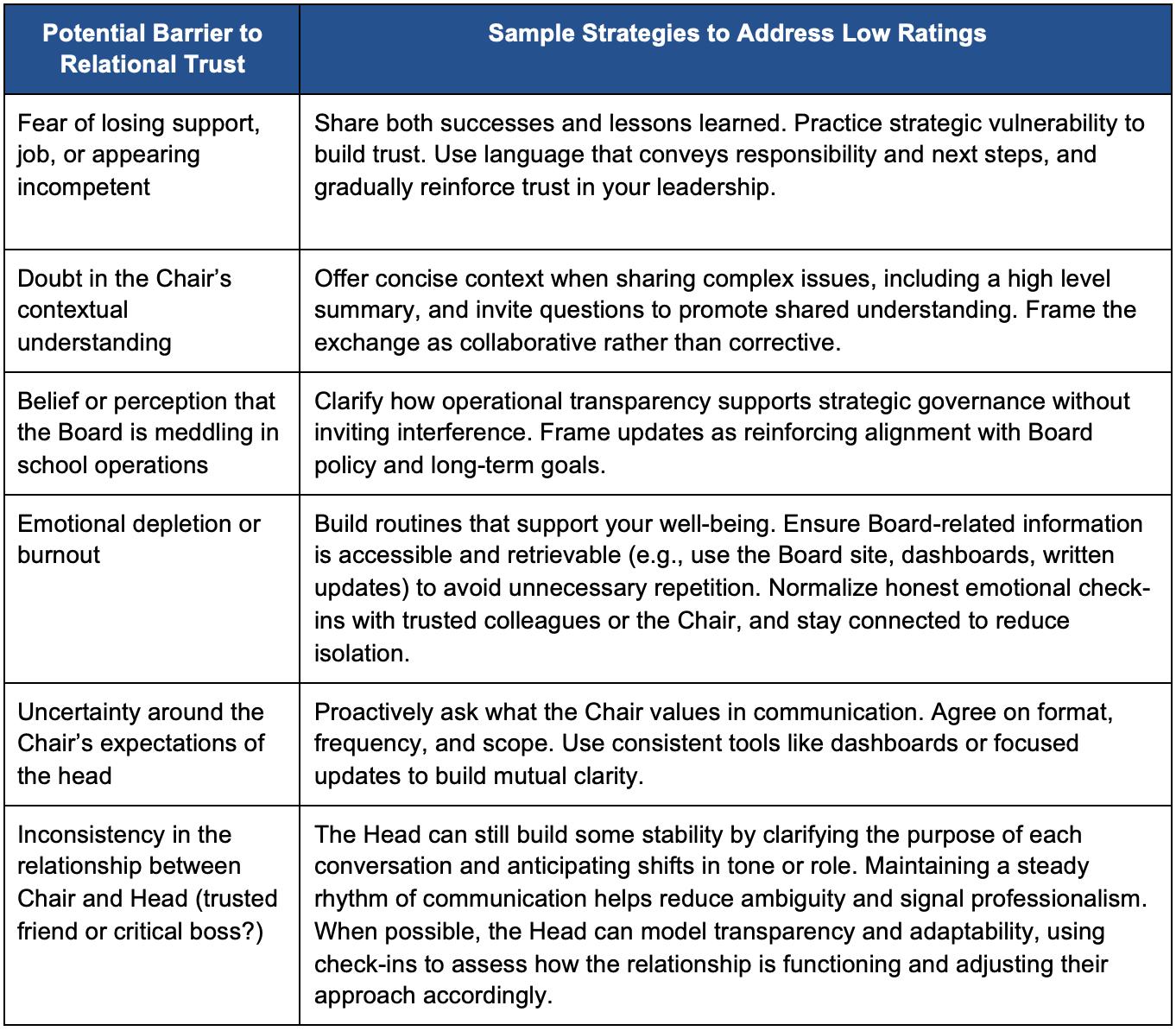
Similarly to Part 2, the strategies above are sample approaches. Each Head may find others that better suit their leadership style, context, or school culture. Given the nature of the relationship, it can be especially challenging for the Head to offer feedback to their supervisor, the Chair. Offering upward feedback can be challenging, especially in governance relationships. While some approaches may require courage, others may begin with small but intentional shifts in communication and mindset. It is always important to consider the impact of the approaches, not just the intent.
To move forward, consider reflecting on the following:
• Which barrier is currently most present in how I interact with the Chair?
• What assumptions or habits might I need to re-examine?
• How can I remain transparent while also protecting the integrity of my team and role?
• What routines or practices could support more consistent and open communication?
• How will I know if trust in the relationship is growing, what will feel different? E.g. less guarded, less misunderstandings, increased willingness to share, or deeper collective thinking.
Building a stronger Chair–Head partnership begins with small moments of clarity, consistency, and ongoing reflection. At the same time, it is important for the Head to remember that a candid and supportive relationship with the Chair does not lessen accountability. The Head’s professional responsibilities, as outlined in the school governance documents, must continue to guide decision-making and communication.
Part 4: A Final Reflection: Trust is Built Intentionally
Trust between a Board Chair and a Head of School does not necessarily emerge through goodwill or time alone. It is cultivated through intentional actions, thoughtful reflection, and honest communication. The relationship grows stronger when both individuals make space to examine their assumptions, acknowledge the pressures they each carry, and remain open to learning with and from one another while maintaining clarity about the reporting line and the purpose of the relationship.
As introduced earlier, it helps to remember that the Chair and Head relationship rests on a baseline tone, whether strong, moderate, or strained,
that can temporarily shift in either direction with changes in context, personalities, or circumstances. Even the most trusting relationships may pass through challenging seasons, just as strained ones may enjoy brief periods of ease. Navigating these shifts with perspective, avoiding overinterpretation, and assuming positive intent can be instrumental in moving through difficult moments.
Each leader operates within a distinct ecosystem. The Chair represents a group that engages with the school intermittently and brings varied external perspectives, while the Head leads within a close-knit educational environment shaped by daily complexities and the emotional rhythm of school life. These contrasting settings influence how each person communicates and what they choose to share.
The tools in this article are designed to encourage reflection, not judgment. They invite both the Chair and the Head to surface what may be unspoken in their relationship and to develop the courage and clarity needed to strengthen their partnership.
Whether used for personal journaling, during a retreat, or in a coaching setting, these resources offer a shared language to support honest dialogue, clarify expectations, and build trust. When this relationship is tended to with care and intention, it can profoundly influence the school’s leadership culture and the health of the broader community.
References
Bryk, A. S., & Schneider, B. (2002). Trust in schools: A core resource for improvement. Russell Sage Foundation.
Carver, J. (2006). Boards that make a difference:Anewdesign for leadership in nonprofit and public organizations (3rd ed.). Jossey-Bass.
Chait, R. P., Ryan, W. P., & Taylor, B. E. (2005). Governance as leadership: Reframing the work of nonprofit boards. Wiley.
Edmondson, A. C. (1999). Psychological safety and learning behavior in work teams. Administrative Science Quarterly, 44(2), 350–383.
Graen, G. B., & Uhl-Bien, M. (1995). Relationship-based approach to leadership: Development of leader–member exchange (LMX) theory of leadership over 25 years. The Leadership Quarterly, 6(2), 219–247.
Kahneman, D. (2011). Thinking, fast and slow. Farrar, Straus and Giroux.
Kouzes, J. M., & Posner, B. Z. (2017). The leadership challenge: How to make extraordinary things happen in organizations (6th ed.). JosseyBass.
Leithwood, K., & Jantzi, D. (2006). Transformational school leadership for large-scale reform: Effects on students, teachers, and their classroom practices. School Effectiveness and School Improvement, 17(2), 201–227.
National Association of Independent Schools. (2019). Effective governance: Findings from the NAIS governance survey. Washington, DC: NAIS.
National Association of Independent Schools. (2020). The state of independent school leadership 2020: Insights from NAIS governance research. Washington, DC: NAIS.
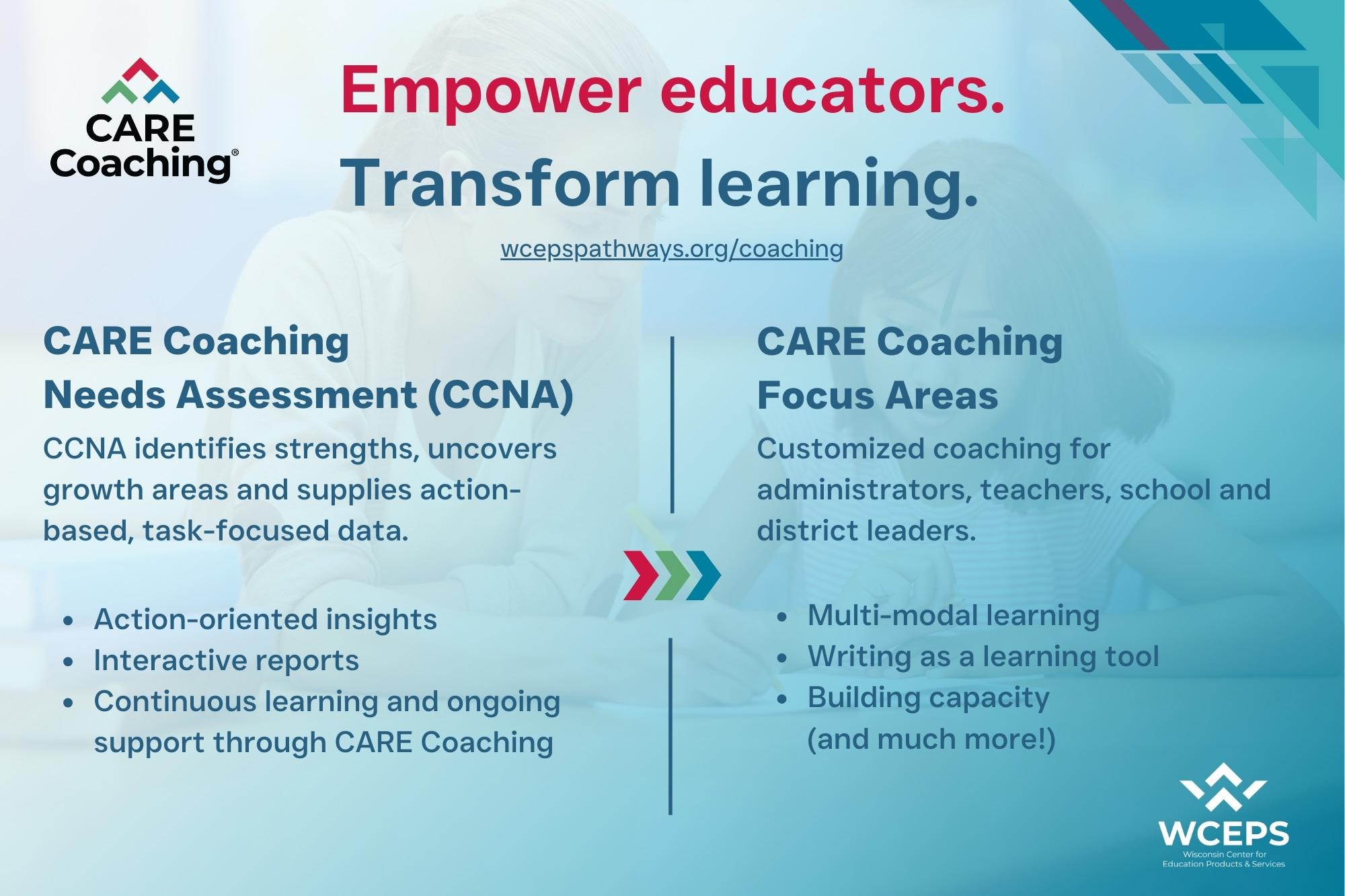
The Guardian Project From Vision to Action: Protecting What Matters Most
By Robert Landau, Aaron Moniz, and Lauren Jones

In a world increasingly shaped by complexity, uncertainty, and accelerating change, our duty as educators extends beyond preparing students for the future; we must protect the future itself. The Guardian Project emerged from this conviction: that schools and organizations must evolve into places where young people are not only equipped to thrive but empowered to serve, heal, and lead in a world that needs them now more than ever.
Founded in 2025 by a network of global educators, The Guardian Project is a bold, grassroots movement that supports schools in reimagining their purpose through a future-ready framework rooted in real-world relevance, belonging, and courageous leadership.
This article examines how The Guardian Project supports schools and organizations in fostering a sense of belonging, driving change, and empowering students to become guardians of a healthier planet, a more just society, and a more equitable future
Introduction: Education in an Age of Acceleration
We are living in an age of overlapping disruptions. Climate change, social division, threats to public health, and rapid technological shifts are reshaping every aspect of society. As educators, parents, grandparents, and leaders, we must ask: Are our schools keeping pace with the challenges and opportunities our students will face?
For decades, the dominant narrative in education has emphasized preparation, helping students build skills for future college and career success. But what if the real work of school is not only to prepare students for the future but to protect it? What if schools became sanctuaries of stewardship, citizenship, and innovation, not just places of academic development but of purpose, courage, and contribution?
The Guardian Project was founded in response to this question. It is both a call to action and a structured, scalable framework for schools ready to reimagine their purpose and align learning with the most pressing needs of our time. The Guardian Project offers a model of educational transformation rooted in shared values, local agency, and international solidarity.


In Loco Parentis
At the foundation of The Guardian Project is the deeply held human belief that schools are not just institutions of learning; they should be sanctuaries of safety and security. The legal and moral concept of in loco parentis, “in the place of a parent,” has long been a guiding principle of schooling. It reminds us that educators have a sacred duty to protect, nurture, and advocate for the children in their care, especially the most vulnerable. In many communities, school is the safest and most stable environment a child will encounter during the day. It is where they are seen, heard, fed, protected, and loved. The Guardian Project acknowledges this reality by prioritizing student well-being, emotional safety, and a sense of belonging at its core. To be a guardian is not only to educate, but to shield, support, and serve the youngest citizens of our society as they grow into their full potential.
The Guardian Framework: Five Promises for Meeting a Vision
At the heart of The Guardian Project is a learning framework that integrates relevance, responsibility, and resilience. It is built around five core Pillars:
1. Culture & Identity: Helping students understand who they are and how their stories shape how they see and serve the world

2. Civics & Social Justice: Understanding how things work and mentoring students to engage meaningfully in community life and equity-focused action.
3. Stewardship & Global Issues: Inspiring students to care for people and the planet, and to solve global challenges from climate to conflict.
4. Innovation & Entrepreneurship: Encouraging creative problem-solving, design thinking, and new approaches to sustainable impact.
5. Engaged Change-Making: Activating students as leaders, advocates, and builders of a better world—right now, not someday.
These promises are anchored in The Vision that guides project direction and purpose:
• ●Healthy Society
• Healthy Environment
• Healthy Economy
• Healthy Living Things
Rather than being another initiative layered on top of existing priorities, the Guardian Framework acts as a connective tissue that aligns student learning with the real world. It invites every subject, teacher, and student into a purposeful ecosystem of learning that is interdisciplinary, experiential, and grounded in local context.
Building Guiding Coalitions: Transformation from the Inside Out
The journey toward becoming a Guardian Project School begins not with a workshop or a program, but with a commitment to purpose. The first stage is simple yet profound: a school or organization formally joins as a Guardian Member, signifying a
shared commitment to the project’s mission of educating in service of a healthier, more just world. This initial step represents more than affiliation; it reflects a collective understanding that the current trajectory of education must evolve to confront the challenges of our time. Membership opens the door to a growing global network of like-minded schools, educators, and organizations dedicated to transforming learning through the Guardian Framework.
From this foundation, members can begin participating in professional learning, collaborating with consultants and experts who can help them reach the stages of recognition.
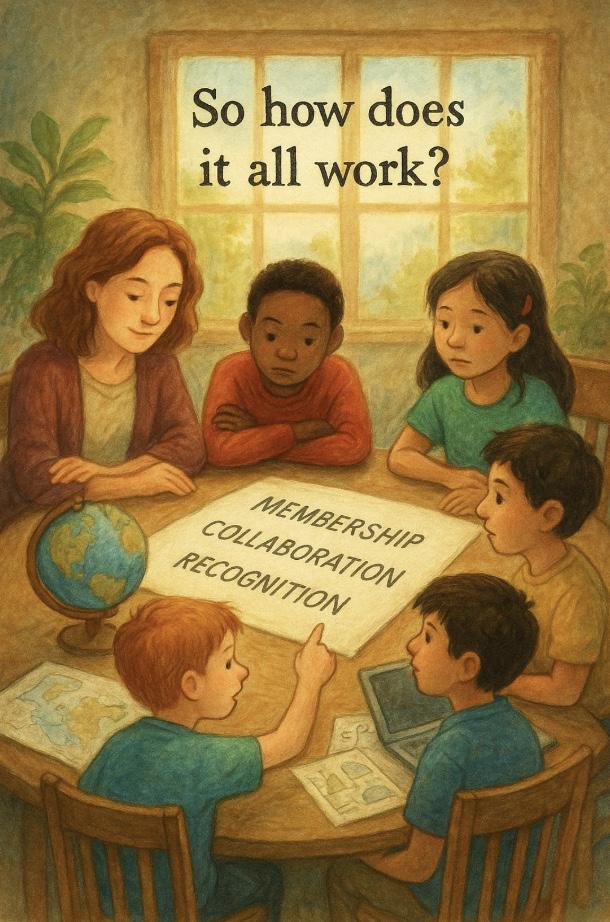
However, it all begins with the belief that young people can and must be empowered to protect their future.
This approach to transformation, organic, community-rooted, and human-first, is a deliberate departure from traditional topdown models of reform. Rather than compliance or uniformity, The Guardian Project cultivates creativity and context. Every coalition adapts the framework to fit its own culture, curriculum, and challenges. As a result, implementation looks different in every setting, ranging from large international schools to small rural programs, and from early years to upper secondary education.
Schools are supported by facilitators, coaches, and other Guardian schools who have been through the journey. Coalition teams regularly reconvene to share prototypes, celebrate progress, and refine their designs. Over time, schools begin to see their practices, such as assessment, scheduling, student voice, and community partnerships, shift toward alignment with their renewed purpose.
Recognition: Elevating Purpose Through Evidence of Impact
Recognition within The Guardian Project is not about compliance or ranking; it is about honoring commitment, growth, and contribution. Schools that join as members are invited to embark on a transformative journey, with the opportunity to be recognized across four levels: Emerging, Committed, Exemplary, and Model. These tiers reflect a school’s depth of engagement with the Guardian mission and its demonstrated impact on student learning and community well-being.
Progression is based on authentic evidence, including student projects that address real-world challenges, public exhibitions of learning that engage community stakeholders, and systemic changes within the school that

reflect alignment with the Guardian Pillars and the four futuristic imperatives: health, environment, economy, and living systems. Recognition is not the end goal; it is a reflection of a school’s evolving identity and its courage to lead with purpose.
At the highest level, Model Schools not only embody the Guardian ethos but also serve as mentors to others. They become “Guardians of Guardians,” offering support to schools with fewer resources, both locally and globally, so that the movement for equity and sustainability spreads outward in spirit and action. Recognition becomes a catalyst for deeper partnerships, stronger coalitions, and bolder student leadership. It is both an affirmation and a call to continue the work.
• Emerging: Schools that have formed a coalition and begun aligning practices with the framework.
• Committed: Schools that have implemented at least one full-cycle project or exhibition.
• Exemplary: Schools that have integrated Guardian principles across levels or divisions and demonstrate consistent student engagement.
• Model: Schools that not only embody Guardian values internally but also serve as mentors and partners to other schools, especially those in less-resourced contexts.
Emotional Intelligence and the Inner Life of Schools
True transformation requires more than strategy; it requires emotional intelligence, trust, and a culture of shared purpose. That’s why The Guardian Project invests deeply in coaching, relational leadership development, and strengths-based practices to help educators build self-awareness, resilience, and collaboration.
Workshops often include restorative practices and team-building protocols to ensure that guiding coalitions become not only design teams but communities of care. These efforts ripple outward, shaping faculty culture, student well-being, and family engagement. The result is a school climate where learning is not only rigorous but joyful and humane.
In this way, The Guardian Project embraces change not through pressure or fear, but through connection, storytelling, and the reclaiming of hope.
What Guardian Project Schools and Organizations DO!
At the heart of the Guardian Project lies a belief that knowledge alone is not enough; we must equip and inspire young people to become engaged changemakers Once schools align with a pillar, the next imperative is action. Guardian Schools are called to design learning experiences that go beyond awareness and lead to meaningful, sustained engagement. This involves creating opportunities for students to explore authentic challenges in their communities, collaborate with stakeholders, and propose solutions that are grounded in empathy, innovation, and civic responsibility.
These experiences may begin with small acts of stewardship or advocacy, but should evolve into a scope and sequence of increasingly complex and impactful projects throughout a student’s educational journey. Engaged changemaking is not an add-on; it is the living expression of the Guardian ethos, where students don’t just learn about the world, they learn to protect, serve, and shape it.
But we are doing it already!
Some schools or organizations might ask, “Why the Guardian Project? We’re already doing this work.” That’s excellent news, and precisely the point. The Guardian Project isn’t about claiming originality; it’s about creating connection. There is strength in numbers, and our collective impact will be significantly greater than the sum of our singular efforts. The Guardian network exists to bring together schools, students, and educators who are already engaged in transformative, values-driven education, inviting them to share, support, and amplify each other’s work.
Exemplary schools and organizations have much to contribute, offering mentorship, models, and momentum. Suppose we are to raise a generation of good ancestors and courageous guardians. In that case, we will need many working together, across borders, across systems, and across generations, to make the difference our world truly needs.
Looking Forward: A Movement, Not a Moment
The Guardian Project is not intended to be “one more thing,” but rather a way to bring greater coherence and purpose to what schools already value. Many schools already articulate missions rooted in global citizenship, character development, service, innovation, or social justice.
The Guardian framework helps translate those mission statements into lived experiences by offering a structure for designing authentic, community-connected, and purpose-driven learning. Rather than replacing existing programs, it amplifies them—infusing curriculum with relevance, reigniting student engagement, and helping educators connect what students learn with its significance. When students see themselves as changemakers, and when schools align teaching and learning with values they already espouse, the result is deeper meaning, greater motivation, and a more resilient school culture.
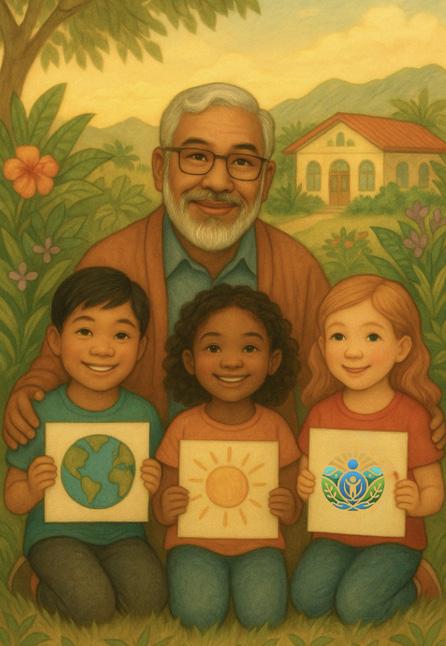
The Guardian Project is still young, but its roots are growing. In an era when educational debates often become polarized or paralyzed, the project offers a hopeful, actionable path forward - one that transcends ideology and centers the learner, the world, and the urgent call of our time.
We cannot predict the future that our students will inherit. But we can prepare them to protect it, with courage, compassion, and creativity. That is the work of a Guardian.
And it starts with us.
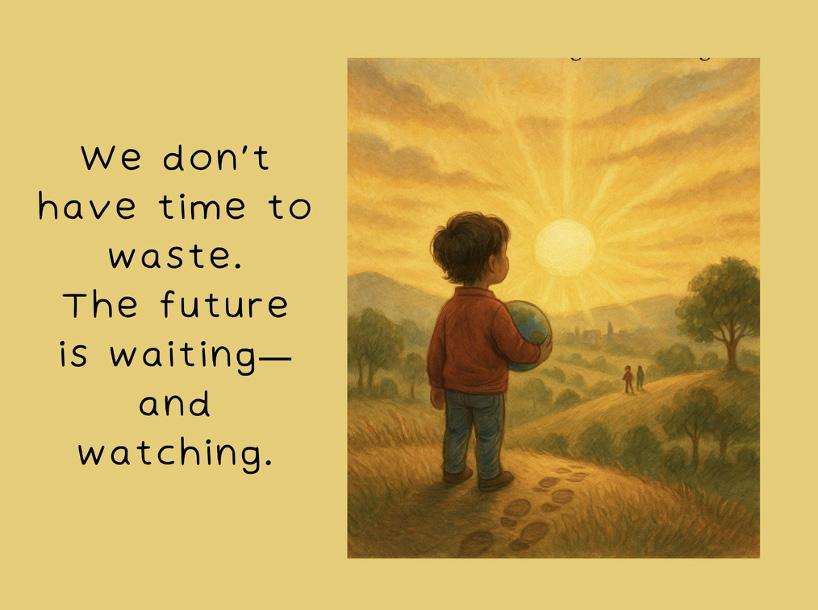
For further information about membership, collaboration, and recognition, please go to: https://thegardianproject.net or write to: robertlandau@theguardianproject.net

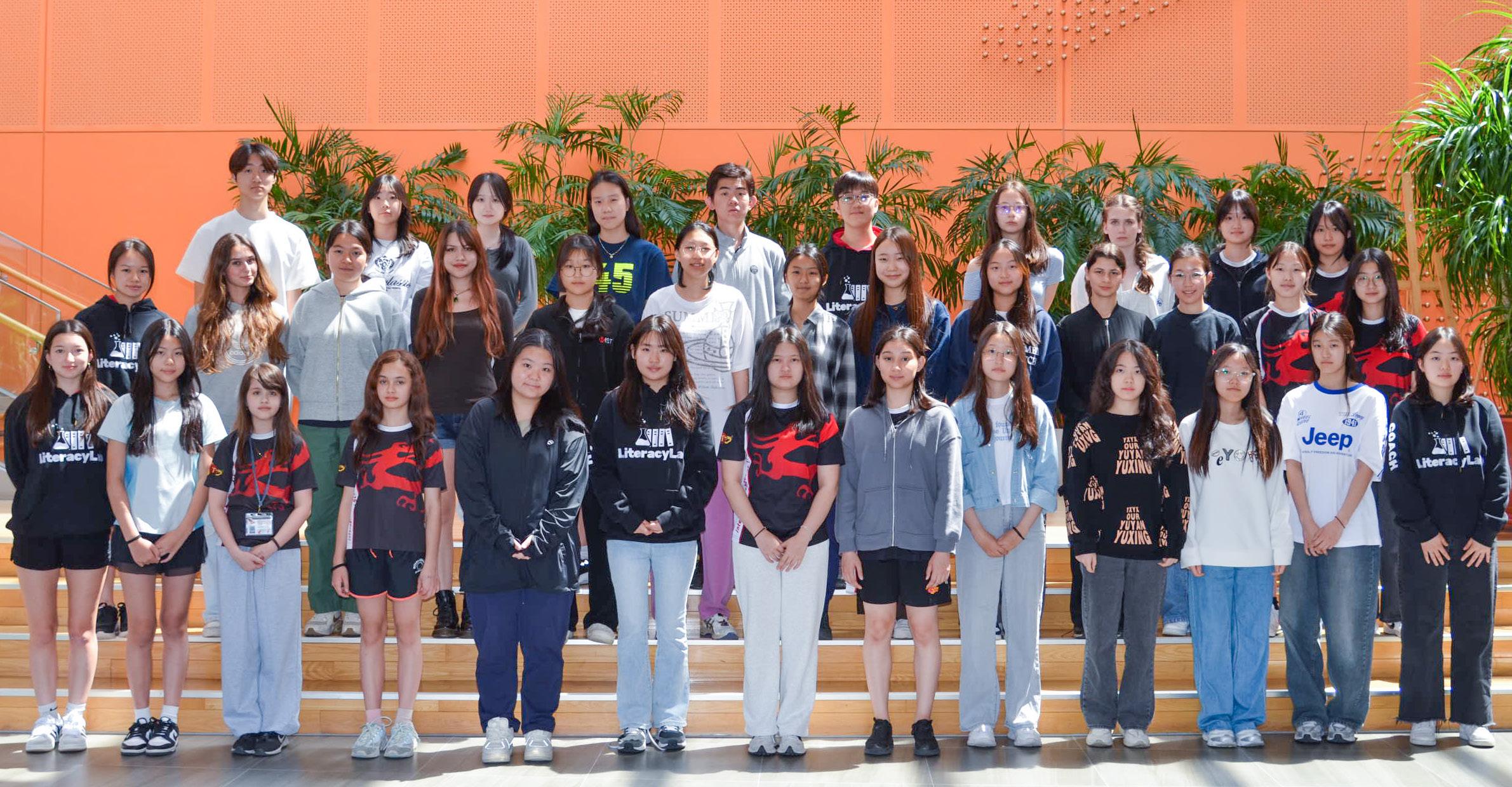
Academic
Support
Student-Powered Literacy Labs: Building Well-being and Agency Through Peer Coaching
By Joe Schaaf
The International School of Tianjin
Celebrating its 11th year and more than 1300 annual visits in a school with just over 200 secondary students, the Literacy Lab at the International School of Tianjin is more than an academic support center—it’s a student-powered movement focused on well-being, agency, and a culture of collaborative inquiry. Students visit the Lab for support with writing, reading, note-making, listening, speaking, and presenting—building essential communication skills across disciplines.
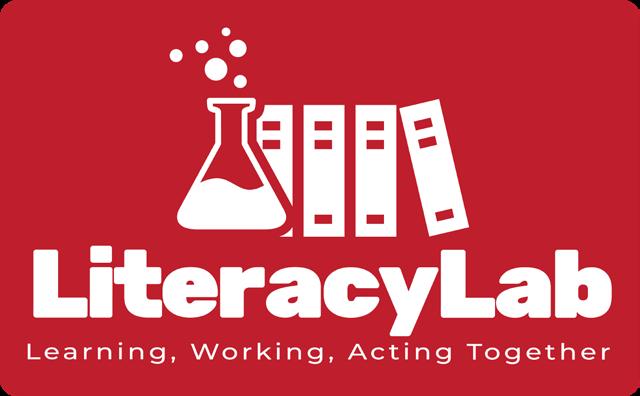
Q&A With the Literacy Lab Team
Q: How did the Literacy Lab begin, and what motivated the shift to a student-staffed model?
The Literacy Lab began as a humble writing center in our school library, initially staffed by teachers who volunteered their time to help students. Early on, we recognized that authentic growth happens when students are given ownership and agency in their learning. To make this happen, we shifted toward a peer coaching model inspired by the work of Peter Elbow and Pat Belanoff—one that emphasizes students guiding one another through inquiry and dialogue. This shift brought the Lab to life, transforming it from a drop-in support service into a dynamic hub of student leadership and learning.
Q: How does the Literacy Lab differ from traditional tutoring or writing centers?
Unlike conventional tutoring centers, the Literacy Lab is entirely student-staffed and managed. We do not focus on giving answers or correcting work. Instead, our peer coaches are trained in cognitive coaching and a suite of conferring strategies that focus on process, metacognition, and self-regulation. Our role is to help students ask better questions, listen deeply, and develop the tools to move forward independently. This emphasis on guiding—not advising—supports both literacy development and emotional well-being.
Q: What are the guiding principles that anchor the Literacy Lab’s work?
Our principles are simple but non-negotiable:
• Guide—don’t advise. We never give answers. Instead, we help students discover their own solutions.
• Coach the learner—not the task. Our focus is always on the person and where they are in the learning process, not just the product.
• Make it concrete. We keep discussions grounded in specific, actionable examples—not abstract advice.
• Find the next step. We don’t aim for perfection. We help students find and take their next step.
As coaches, our role is to support learners through the creative process—helping them confront doubt, recognize progress, and take action. Every conversation is a chance to build confidence and capacity.
Q: How does the Literacy Lab actually work during a typical session?
When students arrive, they first choose the conferring strategy they feel comfortable with, which range from low-risk (Listening—No Response) to higher-risk strategies (Criteria-based Feedback). Coaches then guide each session using a structured cognitive coaching approach:
1. Pause – Coaches deliberately pause after the student speaks, giving the student time to think and reducing anxiety.
2. Paraphrase – Coaches briefly restate the student’s words, validating their feelings and clarifying understanding.
3. Probe – Coaches ask open-ended questions (e.g., "What do you think would help you move forward?"), encouraging deeper reflection.
The session ends with the student identifying one actionable next step—ensuring they leave feeling clearer, more confident, and ready to move forward.
Q: How do your conferring strategies build well-being, selfregulation, and agency?
At the heart of our model are ten distinct conferring strategies, each with a different level of emotional risk and metacogitive challenge (see table below). Students always choose which strategy they’re comfortable using—a decisions that empowers them to take only the emotional and cognitive risks they’re ready for. This sense of agency is foundational. Many strategies explicitly prompt students to notice their feelings, confront negative self-talk, and practice positive reframing. Our process helps students name their emotions, reflect on challenges, and develop self-awareness—key aspects of emotional and cognitive wellbeing.
Q: Who’s involved in the Literacy Lab?
We believe anyone can participate in the Literacy Lab—as a coach or a visitor—as long as they can have a genuine conversation with another student. There are no special requirements. If you’re willing to listen, ask questions, and engage sincerely with a peer, you’re welcome in our community. This keeps the Lab open, accessible, and true to our core belief that learning is a shared journey.
Q: What’s involved in training student coaches and leaders? Training is ongoing and community-driven. All coaches participate in workshops on cognitive coaching, focusing on active listening, paraphrasing, and open-ended questioning two times a year. We provide regular skill-building sessions, ongoing feedback, and leadership opportunities for students who take on supervisory and managerial roles. Inclusion is central—any student can participate as a coach or visitor, regardless of background or skill level. We keep barriers low so everyone can contribute, learn, and grow—together.
Q: How does the Literacy Lab help address issues of student health and well-being?
Student well-being is at the heart of everything we do. The Lab gives students meaningful choice—every visitor decides which conferring strategy to use, allowing them to select the level of risk and type of support they feel comfortable with. This autonomy, paired with a supportive peer environment, helps students manage anxiety, build self-trust, and approach challenges with greater resilience. We intentionally design our process to help students name their feelings, practice positive self-talk, and reframe negative thinking through structured peer interactions. Coaches are trained to validate emotions and encourage next-step thinking—not perfection. We also measure impact: after every visit, students complete an anonymous survey. Over 92% consistently rate their sessions at four or five stars. The most common feedback is that students leave feeling more confident, less stressed, and better able to move forward.
Q: What kinds of changes have you seen—in literacy, wellbeing, and student culture?
The impact has been profound. Students report increased confidence, greater autonomy in their work, and a stronger sense of belonging. We see students taking more risks, speaking openly about struggles, and practicing positive self-talk when facing challenges. The Lab’s high usage—over 1300 annual visits in a school with just over 200 students—reflects not just academic need, but a desire for authentic connection. Many former coaches credit their Lab experience for growth in leadership, empathy, and resilience.
Q: How do we know the Literacy Lab helps?
We listen to students and measure outcomes. After every visit, students complete an anonymous survey rating their experience. Over 92% consistently give four or five stars. This year we recorded over 1300 visits—nearly six times the number of students enrolled—a new record. Teachers have also adopted cognitive coaching and workshop strategies in class, with some even visiting the Lab themselves. We’ve also had parents attend our training workshops to help use our strategies to support their students at home. Ultimately, it’s students who tell us if it works—they leave feeling heard, supported, and empowered.
Q: What impact has the Literacy Lab had beyond your own school?
The Literacy Lab has had broad regional impact, presenting at schools and professional workshops across Asia—from Ulaanbaatar to Bangkok. We've hosted two annual regional workshops at the International School of Tianjin and will hold our next one at Shekou International School in Shenzhen September 2025, inviting schools from across the region to engage with our model. We're also developing a comprehensive handbook to help schools start their own student-powered learning centers. Our goal is to make this model rooted in agency, process, and wellbeing accessible to all.
Q: Why is the Literacy Lab especially relevant for the future?
In an age increasingly dominated by artificial intelligence and automated content generation, the Literacy Lab anchors students in what remains distinctly human: process, interaction, and ownership of learning. As AI accelerates the production of polished products, it's easy to lose sight of the deeper, slower work of inquiry, reflection, and iteration. The Lab keeps this process visible. By cultivating dialogue, metacognition, and peer support, it develops the very qualities—empathy, critical thinking, and creative adaptability—that the World Economic Forum identifies as essential for the future of work. In short, the Lab doesn’t just prepare students to create better products; it prepares them to thrive in an unpredictable future.
Q: What practical advice would you offer to schools looking to build a student-powered learning center?
Start small and grow organically. Use a clear process model and simple ground rules: prioritize dialogue, guide rather than advise, and celebrate every step forward. Keep participation open. Avoid excessive requirements. Train students but let them lead. Trust them—they will exceed your expectations.
Table: Ten Conferring Strategies for Well-being & Self-Regulation
These ten strategies—arranged from low to high risk—allow students to take the emotional and cognitive risks they’re ready for. They choose. The agency is theirs.
Strategy Description
1. Listening—No Response
2. Talking It Out
3. Strengths
4. Paraphrasing
5. What’s Almost Said
6. Highlighting
7. Organizing
8. Identifying Problems
9. Doubting
10. Criteria-Based Feedback
Self-Regulation Focus
Share work aloud without feedback. Reduces anxiety, promotes self-reflection.
Talk through ideas while peers ask openended questions. Builds metacognitive awareness.
Peers identify what’s working well. Reinforces confidence and positive selftalk.
Listeners restate what they hear. Validates feelings, clarifies thinking.
Peers identify what's implied or underdeveloped.
Encourages openness and growth mindset.
Peers point out unclear parts. Builds clarity and tolerance for critique.
Feedback on structure and flow. Strengthens planning and flexibility.
Pinpoint areas needing revision. Develops resilience and goal-setting.
Peers challenge weak areas.
Builds critical thinking and emotional tolerance.
Evaluate work using a rubric. Supports acceptance of standards and next steps.
For more information, contact Joe Schaaf at the International School of Tianjin: joe_schaaf@istianjin.org.cn.
About the Author
Joe is the Head of Learning and Teaching at IST and has over 20 years of experience researching, developing, and implementing literacy-based programs. He is responsible for transforming IST’s Literacy Lab from a small, teacher-led writing center into a fully developed, student-staffed and managed learning center. Joe has worked with a wide range of students and professionals across elementary, secondary, and post-secondary settings. He is the author of Exploring Texts: A Guide to Inquiry and leads workshops throughout Asia, with a focus on student agency, process-based learning, and collaborative school culture.
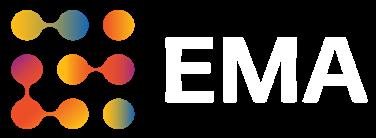
“At a time when we are trying to reduce barriers, create access, and alleviate unnecessary stress on families, the value of the SAO has never been more evident.” QUENTIN MCDOWELL, HEAD OF

Standard Application Online (SAO)
• 55% of parents say applying to independent schools is too stressful.
• 49% say it’s more work than they expected.
• 49% Indicated essays are the most stressful aspect for students.
A New Approach to Supporting Creativity in Early Elementary Classrooms
By Ciara Dudley Seoul International School

As you begin to read this article, I would like to invite you to take a moment to pause and consider what creativity means to you. What does it look like when a child is being creative? What does it feel like? How do we know when we are seeing it in our classrooms?
In early childhood education, creativity is not just a desirable trait. It is essential. For young learners, creative exploration supports problem-solving, communication, emotional development, and self-confidence (Isbell & Yoshizawa, 2016). When working with a group of students, I noticed their hesitation to express their own ideas during artistic activities. They often looked to the teacher for the "right" way to do something or to copy an example without experimenting. This observation became the seed for both a presentation at the EARCOS Teachers’ Conference and an action research project in my graduate studies, leading to insights and strategies that help support creative risk-taking in the early years classroom.
In this article, we will look at ideas from said research and work, exploring how open-ended prompts, non-evaluative language, and intentionally designed environments can help nurture creative confidence. You’ll also find practical strategies you can use in your own classroom, especially if you are looking to encourage student voice, choice, and imagination.


Educators exploring materials at EARCOS 2025

What is Creativity in the Early Years?
Creativity in early childhood education goes beyond art projects. It is a way of thinking, trying, exploring, and making meaning. It is the ability to express thoughts or feelings through many different forms, what Malaguzzi called the "hundred languages of children" (Mphahlele, 2019). In young children, creativity can be seen when a child uses materials in unexpected ways, invents a story, or confidently shares a drawing that represents a personal idea.
While presenting at the EARCOS Teachers’ Conference, I opened by asking educators to reflect on what creativity looks and feels like in their context. Teachers shared a variety of powerful responses:
• "Creativity is more than just thinking outside the box— it's thinking what you can do with the box."
• "It looks like kids making stuff, flying, chaos, and personal expression."
• "It feels like excitement, energy, joy, or even intimidation."
• "Creativity is defined by uniqueness, innovation, freedom, and self-driven ideas."
• "It’s the force driving innovation! The ability to imagine something that doesn’t exist and manifest it."
These reflections mirror what we often see in early childhood classrooms and echo the fact that creativity is, at its core, personal, messy, expressive, and powerful.
Building a Creative Environment
A creative classroom is not just about having art supplies on hand. It’s about creating the conditions where creativity can thrive. That means making intentional choices about the physical setup, the materials, and the routines that shape our learning spaces.
Materials: Offer a variety of materials such as paper, paint, clay, fabric, loose parts, recycled items, and natural objects. Children need multiple opportunities to explore different textures and mediums to unlock their imagination (Anggraini & Yuwono, 2022).
Accessibility: Organize your materials in a way that allows children to independently choose and return them. This supports autonomy, responsibility, and creativity (Bae, 2004).
Collaboration: Invite children to co-create shared murals, sculptures, or storybooks. These experiences help them see that creativity can be both individual and communal.
Connection to nature: Bring natural materials into the classroom or take art projects outdoors. Interacting with the environment invites sensory exploration and often inspires new creative directions (Gilmore, 2011).
Open-ended activities: Avoid projects with a single correct outcome. Instead, offer a theme or provocation. Instead of an activity such as “everyone will make the same ladybug by gluing red circles onto black paper and drawing black spots”, an activity focused on following specific steps to achieve a uniform result. A prompt like “Create a creature that lives in your imaginary world. What does it look like? What can it do?” encourages personal interpretation, storytelling, and a variety of creative responses. The students have the choice to use collage, drawing, or con-
struction materials in unique ways.
Reflection and sharing: Provide opportunities for children to talk about their work. Simple routines like a mini art show or a gallery walk help children reflect, take pride, and be inspired by one another.
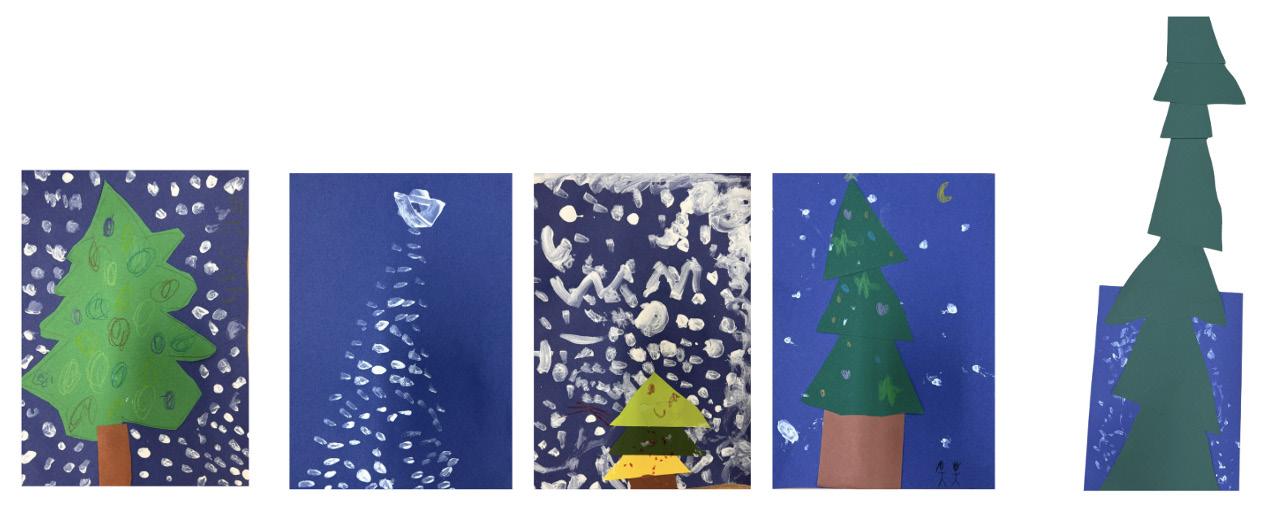
From Mystery Bag to Masterpiece: Process Over Product
One of the most important shifts we can make as educators is to prioritize the process over the product. During a recent workshop, I introduced a "Mystery Bag Challenge" where teachers received a random set of materials and a creative prompt. Each group produced very different outcomes, showing the participants’ unique ways of thinking and working. The real value was not in what was made but in how it was made.
In the classroom, children experience the same thing. When we focus too much on steps, rules, and examples, children begin to fear “getting it wrong.” When we make space for trial and error, celebrate unexpected ideas, and show curiosity about their choices, children learn to take creative risks (Kim, Wee, & Gilbert, 2017).
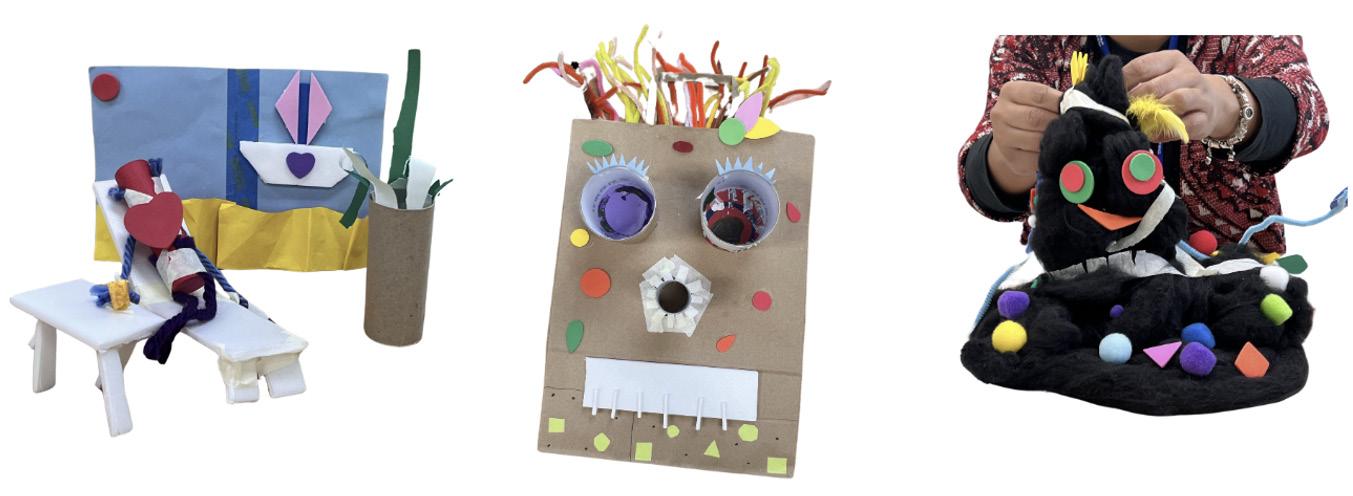
Action Research: Supporting Creative Risk-Taking
On a breezy autumn day, after reading ‘Leaf Man’ by Lois Ehlert, I invited my students to create their own leaf characters using natural materials. As I moved around the room, one child held up a leaf and asked, “Where should I put this?” I replied, “It can go anywhere. What do you want it to be?” He pressed again for a right answer, so I gently asked, “Whose artwork is it?”. “Yours!” he replied. It took me a moment to respond as I was not expecting that response. “Who is making it?” I asked. In that moment his eyes lit up as the realization dawned, it was his own creation. This moment reflected a broader trend I had observed, that many students lacked confidence in their creative choices and looked to adults for approval or direction.
My action research explored how open-ended prompts and non-evaluative language influenced student confidence and creativity. I wanted to understand how to help students feel more willing to try their own ideas.
4/5 years old student artwork inspired by Christmas Trees
Educator’s Artworks from Mystery Bag Challenge - KORCOS 2024

To address this, I began using more open-ended prompts like “What else could this be?”, “How could we expand our work?” and shifted my language to be more curious and non-evaluative, asking things like “Tell me about your picture.” This marked a conscious step away from questions such as “What is that?”, “Is that supposed to be a cat?”, or “Did you follow the steps?”. Which were questions or phrases which tended to imply there is a correct answer or predetermined outcome. I also avoided overpraising comments like “Good job!” or “That’s so pretty!” which have good intentions, but can often lead students to seek external approval rather than develop intrinsic motivation or ownership of their work. As a result of these changes, students started to take more control of their work. They experimented more, stuck with their ideas longer, and proudly shared their outcomes. Even students who had been hesitant at the beginning began to show increased confidence and creativity over time (Reeve, 2016).
Teachers who participated in the research reported similar changes. They observed that when students were given time, choice, and open-ended materials, they engaged more deeply and expressed themselves more freely (Yates & Twigg, 2016).
Practical Strategies for Fostering Creativity
Building on these findings, here are some strategies you can use to support creative confidence in your classroom:
• Use open-ended prompts: Instead of saying “Draw a house like this”, “Color inside the lines”, or “Follow these steps”, try asking, “What does your dream house look like?”, “What else could you make with this?, “How would you change it?”, or “What else could you add to your picture?”
• Use non-evaluative language: Instead of saying “Good job”, “That’s right”, try saying, “That color combination is interesting. What made you choose it?”, “I notice you used lots of bright colors, what inspired you?”, “Tell me more about how you made this”, or “That part of your work do you like best?” (Reeve, 2016).
• Allow time: Creativity needs time to unfold. Make space in your schedule for children to return to projects, revise, and reflect.
• Offer structure with freedom: Use themes or materials to guide, but not limit, creative exploration.
• Create choice-based centers: Let students decide if they want to work with drawing, sculpture, painting, or collage. Autonomy leads to motivation and personal expression.
Conclusion
Fostering creativity in early childhood requires more than just encouragement. It asks us to rethink how we set up our spaces, how we talk to children, and how we measure success. When we shift from product to process, and from evaluation to explora-
tion, we open the door for children to become confident, expressive, and imaginative learners.
As you step into your classroom, I invite you to notice the small moments of creativity: when a child mixes unexpected materials, invents a new story, or proudly shares their own idea. These are the seeds of lifelong confidence and curiosity. And they grow best when we trust children to be the authors of their own creative journey.
References
Anggraini, L., & Yuwono, H. (2022). Improve Creativity of Early Children Age with Art Activities. EarlyChildhood ResearchJournal (ECRJ)
Bae, N. J.-H. (2004). Learning to Teach Visual Arts in an Early Childhood Classroom: The Teacher’s Role as a Guide. Early Childhood EducationJournal, 31(4), 247–254.
Gilmore, Z. (2011). A holistic, international approach to early childhood education: the International Curriculum for Languages and Creative Arts (ICLCA). International Schools Journal, 30(2), 58–64.
Isbell, R., & Yoshizawa, S. A. (2016). Nurturing creativity: An essential mindset for young children’s learning. National Association for the Education of Young Children. https://www.naeyc.org/resources/pubs/books/excerpt-from-nurturing-creativity
Kim, K. H. (2011). Cultural influence on creativity: The relationship between Asian culture (Confucianism) and creativity among Korean educators. The Journal of Creative Behavior , 43(2), 73–93. https://doi.org/10.1002/j.2162-6057.2009.tb01307.x
Kim, K. J., Wee, S.-J., & Gilbert, B. B. (2017). Opening a Window to Foster Children’s Self-Confidence through Creative Art Activities. DimensionsofEarlyChildhood , 45(2), 4–12.
Mphahlele, R. S. S. (2019). Exploring the role of Malaguzzi’s ‘Hundred Languages of Children’ in early childhood education. South African Journal of Childhood Education , 9(1), a728. https://doi. org/10.4102/sajce.v9i1.728
Reeve, J. (2016). Autonomy-supportive teaching: What it is, how to do it. In Building autonomous learners: Perspectives from research and practice using self-determination theory (pp. 129152). Singapore: Springer Singapore.
Yates, E., & Twigg, E. (2016). Developing creativity in early childhood studies students. Thinking Skills and Creativity , 23, 42–57. https://doi.org/10.1016/j.tsc.2016.11.001






International Offices to Support All Timezones
Our team includes 80+ professionals worldwide, across Asia and the U.S. — dedicated teams offering local, real-time support across all timezones.
Comprehensive Services for Educators
Hired by schools worldwide to support with retirement, financial planning, pre/post-arrival planning, insurance, tax advice & employee benefit programs.
Price Competitive with Transparent Fees
As a fiduciary, we are always transparent with fees. We offer bundled services and some of the lowest fees in the industry.
Retirement, Tax & Benefits Specialists
Our qualified retirement specialists have expertise in U.S., UK and international pensions. Our tax advisers operate across multiple jurisdictions, supporting globally mobile educators and their families.

Curriculum
Retrieval Practices Boost Student Learning
By John Helgeson
Korea International School - Pangyo Campus

“Retrieval practice is a strategy in which calling information to mind subsequently enhances and boosts learning. Deliberately recalling information forces us to pull our knowledge ‘out’ and examine what we know” (Agarwal, Roediger, III, et al., p.2, 2020).
Throughout an activity, lesson, and unit, educators use a variety of techniques to engage students in the learning process. Whether teachers are planning utilizing Bloom’s Taxonomy, Krathwohl’s Taxonomy, Higher-Order Thinking Questions, Depths of Knowledge Levels, or Critical Thinking structures, it is vital that students are able to consider what they know, how they know it, and reflect on their learning. The utilization of retrieval practices helps to solidify a foundation students use in order to provide them with space to extend their thinking beyond basic levels of understanding. Retrieval practices vary in levels consisting of “fact-based, concept-based, and complex questions” (p.10).
Retrieval practices, when used purposefully, are appropriate for all levels of learners stemming from the primary grades to middle school to upper school to adult learners. Incorporating them into daily lessons can ensure the success of all students in a classroom. The effect size of retrieval practices varies, but many studies indicate a medium (>.5) to large (>.8) effect size reinforcing frequent use in the classroom (Agarwal, Nunes, et al., 2021). Retrieval practices can be used as bell ringers, exit tickets, and in the middle of a lesson. While conducting these types of practices is important in any setting, it is beneficial in an international school as classrooms consist of diverse experiences including multilingual learners, students from the local community, third culture kids, those receiving special services, and transient learners. Retrieval practices provide a scaffold for educators to move students forward and expand differentiation opportunities to push the thinking of all learners regardless of background.
While frequent retrieval practice helps students academically, students also benefit emotionally. Fear of failure, high-stakes assessments, and the pressure between what is correct and incorrect, increase the anxiety levels in students. Common use of retrieval activities without the penalization of incorrect answers helps to decrease anxiety students face when asked questions or directed to recall information (Agarwal and Baines, 2025, p.207). Regular use of retrieval activities helps reduce student anxiety because students become aware of their learning, how they learn, and what they need to study for future assessments (p.215). Furthermore, regular use of retrieval strategies helps students develop a learning routine allowing them to have more accurate metacognition of their learning abilities in regards to specific content and skills (Carpenter, et al., 2022).
The use of retrieval practices is quite common, but being purposeful and using them more frequently increases the benefits for students. Using backwards design, there are five steps that increase the effectiveness of retrieval practices.
1. Analyze questions of the assessment for question type and content.
2. Analyze standards addressed during the unit.
3. Create a checklist identifying content and standards addressed throughout the unit.
4. Develop and introduce common retrieval practices structures.
5. Weave retrieval practices into daily lessons ensuring identified content is highlighted.
The first two steps may be combined depending on the course
or grade level. Analyzing the questions on an assessment is good practice that guides instructional decisions. When considering the types of retrieval practices to use, gathering data on the types of questions, the number of questions on specific content, and the cognitive load needed for the types of questions, can determine the emphasis educators place on reviewing and retrieving unit content.
For example, if there is only one question covering a certain topic, and it is a low-level question, then it may not be necessary for a teacher to pinpoint a specific retrieval practice for that particular term or topic. Instead, that topic may be integrated into a more substantial one requiring more of a focus.
When planning the unit, creating a spreadsheet of the unit’s key points and assessed content and when they are covered throughout the unit can assist retrieval practices design. For example, if one knows that Content A is covered in three assessment questions, one can determine where Content A is introduced and extended during the unit. If Content A is addressed on Days 2, 4, and 7, then retrieval practices may be designed for use on one or more of these days. The spreadsheet helps to determine to what extent content is covered and how it is recalled. It also helps teachers ensure each item on the assessment ,or each standard, is appropriately addressed based on question type and cognitive load.
Four Easy-to-Implement Retrieval Practices
As with any teaching practice, introducing a format or protocol for the practice and then repeating the practice provides teachers and students with moves to help build efficiency. There are many ways retrieval practices can be used in the classroom. The following four activities are easy to implement and adapt. Additionally, adding physical movement opportunities leads to increased alertness, concentration, and reduced anxiety (Peiris et al., 2021). Similarly, physical activity can assist with self-confidence and self-efficacy (Campos, et al., 2023). Combining retrieval practices with physical movement may further contribute to the overall classroom environment as a supportive place reducing anxiety allowing for increased growth in academic progress.
Brain Dump
A Brain Dump is a simple strategy to use at any point during a lesson. At the beginning of class, it may be used to recall information from a previous lesson or unit. The concept is to have students write down everything they can remember. This can last for one minute or several minutes. After the allotted time, students may share what they have written down with a partner or small group. Information may then be shared with the whole class or the instructional flow just continues. At the end of the class, this activity may be used to recall the day’s lesson.
Movement Alternative for Brain Dump
To add movement to this activity, blank sheets of paper are hung around the classroom. There should be enough for one per student. Students are provided with one-minute to write down as much as they can remember. After a minute, students rotate counterclockwise to the next paper. Students scan the information and then take another minute to add to this new list. After a minute, students rotate to a new list and repeat the process. This can be done for as long as desired. The activity is done in silence, but it allows students to recall, review content, and extend thinking.
Take 2: Sketch + Write
In this simple strategy, at any point in the lesson, students write
down one thing they have learned and sketch another thing they have learned. At the beginning of class, this can be used to recall the previous lesson. During the class period, it can be used after the introduction of new content. At the end, it can be used to review the entire day’s lesson. As only two items are captured in the activity, it takes very little time to complete. One can simply move on or students can share what they learned in small groups.
Movement Alternative for Take 2: Sketch + Write
Simple movement can be added to this activity to get students out of their seats. Students can be directed to find a partner, stand next to the partner, and have each person share what they wrote. Then, students can find a second partner, stand next to the partner, and have each person share what they drew. The movement can end there or it can be repeated. A whole class share can be added, or students can return to their seats and the lesson can continue.
Shape Template
This activity can vary in its design. Students can recall information based on specific graphic organizer templates available for them to choose from such as a concept/mind map template, web diagram, venn diagram, timeline, cause and effect, and any other template students are familiar with. Provided with choice, students are able to select how they want to capture the information from previous lessons or the current lesson. Alternatively, students can be provided with various shapes or combinations of shapes they can use to organize or brainstorm the contents they are being asked to retrieve. This variation is more open to interpretation allowing for the potential of more creative responses or organization.
Movement Alternative for Shape Template
To add a twist to this activity, multiple shapes can be placed in a large bin, bucket, or bag. Students go to the bin and select three random shapes. Students return to their seats and use two or more shapes to complete their recall task. When students have finished, they find a person with the same or similar shape and share their responses. This can be repeated as desired.
Quizzes
Non-graded quizzes are a way to add retrieval practice at any point in a lesson. Online formats such as Gimkit, Kahoot, Quizizz, Quizlet, and Blooket add a level of fun and gamification to a lesson. Quizzes are easy to design especially if study guides or flashcards are already created. Additionally, with AI features, quizzes are easy to create with class materials. Of course, traditional quiz formats not utilizing technology may also be used.
In conclusion, adding retrieval activities to a lesson is simple to do and does not require a lot of additional time. The benefits of regular integration outweigh occasional use and reliance on retrieving material for the first time on high-stakes assessments. Creating a space where students can make errors without judgment and analyze their understanding helps them build confidence allowing them to progress to higher-level thinking activities and extensions in learning.
References
Agarwal, P.K., & Bain, P.M. (2025). Powerful teaching: Unleash the science of learning. Jossey-Bass.
Agarwal, P.K., Nunes, L.D., & Blunt, J.R. (2021). Retrieval practice consistently benefits student learning: A systematic review of applied research in schools and classrooms. Educational Psychology Review. https://doi.org/10.1007/s10648-02109595-9
Agarwal, P.K., Roediger, III, H.L., McDaniel, M. A., & McDermott, K. B., (2020). How to use retrieval practice to improve learning Retrievalpractice.org. https://pdf.retrievalpractice.org/RetrievalPracticeGuide.pdf
Campos, A. R., Zapata-Lamana, R., Gutiérrez, M. A., Cigarroa, I., Nazar, G., Bravo, C. S., ... & Molina, D. R. (2023). Psychological outcomes of classroom-based physical activity interventions in children 6-to 12-year-olds: A scoping review. Retos: nuevas tendencias en educación física, deporte y recreación, (48), 388400.
Carpenter, S. K., Pan, S. C., & Butler, A. C. (2022). The science of effective learning with spacing and retrieval practice. Nature Reviews Psychology, 1(9), 496-511.
Peiris C.L., O’Donoghue G., Rippon L., Meyers D., Hahne A., De Noronha M., Lynch J., & Hanson L.C. (2021). Classroom movement breaks reduce sedentary behavior and increase concentration, alertness and enjoyment during university classes: A mixed-methods feasibility study. International Journal of Environmental Research and Public Health, 18(11). https://doi. org/10.3390/ijerph18115589
SPONSORED WEEKEND WORKSHOP
PeerSphere: Leading Effective Teams for Secondary Middle Leaders
October 18- 19, 2025
CIA FIRST International School, Chbar Ampov
Consultant: PeerSphere
Format: In-Person
Coordinator: Landon Seigler



Stuart Smith
Owen Pescod Senior Account Manager
Curriculum
A Spoonful of Sugar: Sweetening Science with the STEAM Approach in Biology
By Anshu Saksena
The British School in New Delhi
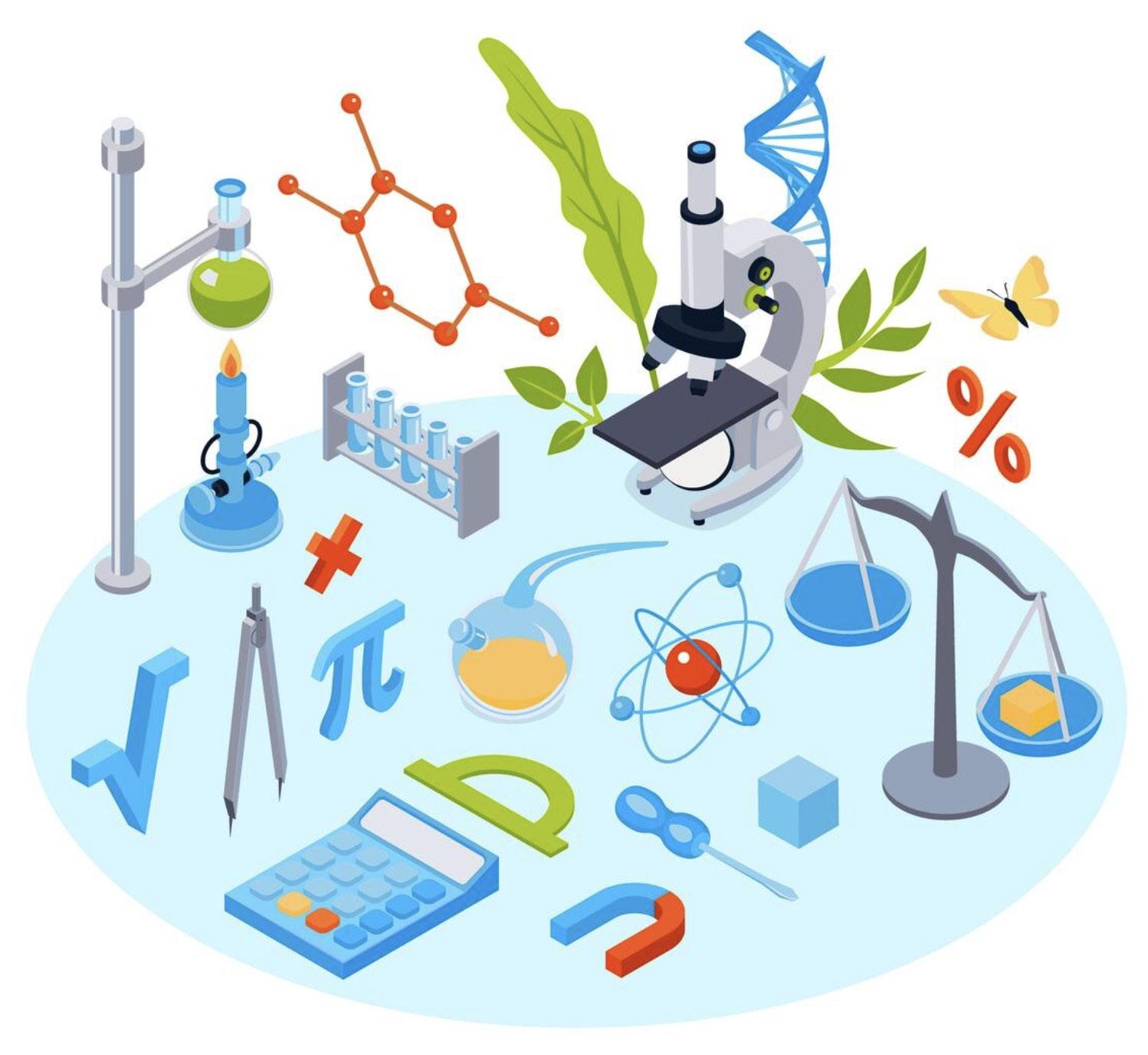
Teaching science is inherently rewarding, but it truly becomes meaningful when we go beyond imparting facts to nurturing skills and curiosity. Early in my teaching journey, I realized that although my students could recite information, they were not becoming curious or inquisitive—qualities essential for lifelong learning and scientific thinking.
Long before the acronyms STEM or STEAM entered the educational mainstream, I began experimenting with integrating storytelling, art, drama, and music into my biology lessons. At the time, it was a process of trial and error, but it proved transformative. When I later encountered the STEAM approach formally, it resonated deeply with my own classroom experiences. I knew I had to share my reflections.
Much like a spoonful of sugar helps the medicine go down, STEAM methods turn complex scientific concepts into digestible, engaging learning experiences. The key is not to overload with “sugar”—the creative elements should enhance the science, not overshadow it. Here’s how each component of STEAM has helped me bring biology to life.
S-Storytelling: Science as a Narrative
Storytelling is a powerful entry point into complex biological concepts. The tales behind the discovery of Vitamin C, the structure of DNA, penicillin, or cells offer rich, human-centered ways to introduce scientific content. These stories spark curiosity, build context, and make abstract ideas more relatable.
In middle school, for example, Mendel’s law of inheritance was introduced through a dramatized story of Gregor Mendel and his pea plant experiments. As the story unfolded, Punnett squares were built and terminologies discussed, from traits to genotype, phenotype, alleles, and chromosomes. This seamless integration of narrative and content strengthened comprehension and retention.
Stories can also be used for review and assessment. Students might retell the journey of water through a plant using terms like osmosis, diffusion, active transport, and transpiration. This can take the form of oral storytelling, poster-making, or fill-inthe-blank activities. Even in the digital age, nothing replaces the magic of sitting in a circle, modulating your voice, and watching young learners lean in.
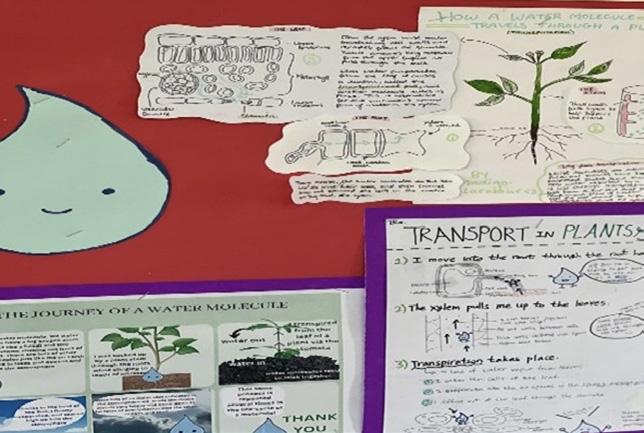
T – Tools (Visual): Picture This
1-
While storytelling has long been a part of education, visual tools—whether digital, physical, or hand-drawn—are indispensable in science learning. Diagrams, animations, videos, and even simple sketches help demystify complex or abstract concepts, making them more accessible to learners.
In biology, instruments like microscopes unveil the microscopic world, while techniques such as gel electrophoresis expose the molecular makeup of life. These tools transform the invisible into the observable, making biology not only comprehensible but captivating. Today, digital simulations—such as virtual dissections and interactive lab experiments further enhance engagement and comprehension, avoiding ethical dilemma of animal testing. Whether through hands-on methods or digital platforms, visual representations in science are powerful aids for reinforcing memory and deepening understanding.
E – Engineering with Models: Building Understanding
Constructing models helps students see and touch what they’re learning. Whether it’s a pipe cleaner chromosome, a walkthrough heart, or a 3D DNA model, hands-on creation makes science concrete and accessible. This is normally done as a group project which encourages the students to think interdependently. Students collaborate, listen actively, consider diverse perspectives, and refine their understanding through dialogue. In the process, they develop essential interpersonal skills such as empathy, compromise, leadership, and collective problemsolving. These experiences not only deepen scientific understanding but also promote learner agency.
During the lessons students are often asked to design models that demonstrate proportionality such as organelles scaled within a giant cell to reinforce both structure and function. These activities also introduce important scientific skills: measurement, precision, and observation. Modeling transcription and translation, for example, breaks down these complex processes into manageable steps that are easier to grasp. Effective modelbuilding requires clear, scaffolded instructions and purposeful alignment with learning objectives. Not every model has to be elaborate; even simple cut-outs can spark insight.
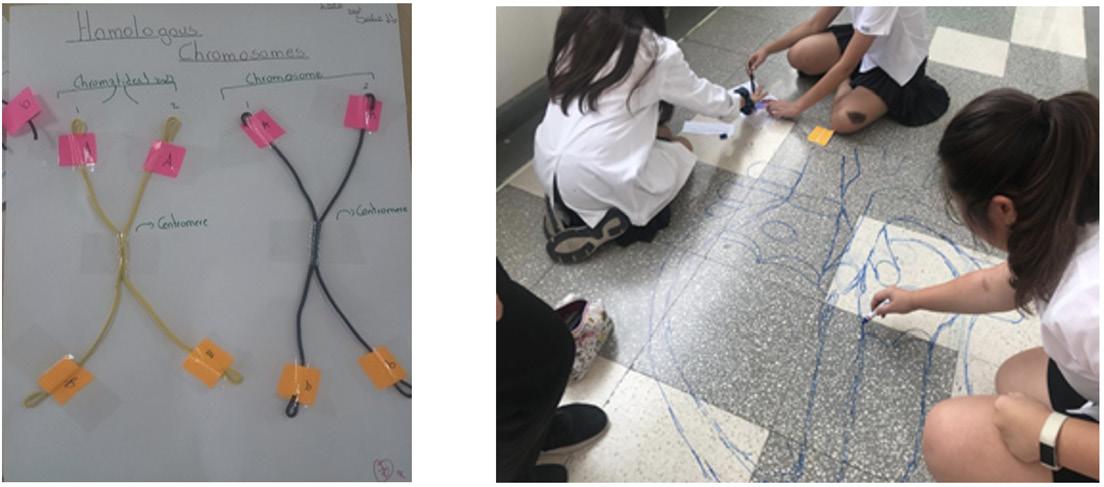
The journey from crafting simple molecular models of glucose or amino acids using wire and beads to exploring intricate structures through online tools like BioTopics and Avogadro reflects a remarkable transition in science education. This shift from tactile, hands-on modeling to interactive digital simulations continues to reinforce the importance of using models to make sense of the often-abstract world of molecular science.
A – Art: Drawing in Science
Biology and art are natural allies. Sketching plant structures, illustrating food webs, or designing infographics can be both enjoyable and educational. Art builds focus and attention to detail while also enhancing visual literacy—an essential skill in today’s data-driven world.
Encouraging students to maintain neat, labeled scientific diagrams reinforces both accuracy and communication. Artistic expression also increases engagement for visual and kinesthetic learners who may struggle with purely textual content.
Asking students to create a cartoon strip illustrating Darwin’s theory of evolution by natural selection resulted in a delightful blend of humor and insight. From finches debating their beak sizes on the Galápagos Islands to giraffes hosting “stretching contests” in a race for survival, students used storytelling to unpack scientific principles in ways that were both accurate and memorable. One group even titled their comic "The Beak Speaks", cleverly narrating adaptation through dialogue between birds.
To help students consolidate their learning, they are encouraged to create illustrative mind maps—either individually or in pairs— using traditional drawing methods or digital tools like Canva (https://www.canva.com/graphs/mind-maps/). This process allows them to visualize and organize complex concepts more effectively. Once completed, the mind maps are displayed around the classroom, transforming the space into a gallery of student thinking. Peers are then invited to engage in a constructive critique, using sticky notes to highlight strengths or point out inaccuracies, always supporting their feedback with clear reasoning. This not only promotes critical thinking and reflection but also fosters a collaborative learning environment.

M – Music and Drama: Performing Science
Drama and music offer joyful alternatives to traditional instruction. Role play transforms the teacher from lecturer to facilitator and gives students an active role in their own learning. For example, “hot-seating” Gregor Mendel—where a student plays Mendel and answers questions from peers—turns a biology class into an interactive research space.
Figure
Poster of journey of a drop of water in plant
Figure 2- Model of chromosome Figure 3 Walk through the heart
Figure 4 Drawing the digestive system
Using everyday items like pots and pans to simulate digestion or encouraging students to act out the body’s immune response, transforms science lessons into dynamic, engaging experiences. These creative methods promote deep understanding, collaboration, and imaginative thinking. To effectively bring these biological processes to life, students must first master the underlying concepts—only then can they convincingly dramatise them. What adds an extra layer of fun is allowing students to give a name to the skit that they are going to perform. The results are often hilarious and inventive, with labels ranging from “Gum to Bum” and “Plot to Clot” to countless other quirky, clever titles. To guide their creativity and keep the focus on learning, students work with a clear rubric that outlines expectations and keeps their performance aligned with scientific accuracy.
ACTIVITY
Use props, models, or role-play to bring these concepts to life:
• The process of Phagocytosis
• Antigen-Antibody interaction
• The mechanism of Blood Clotting
• The story of Edward Jenner and the invention of Vaccination
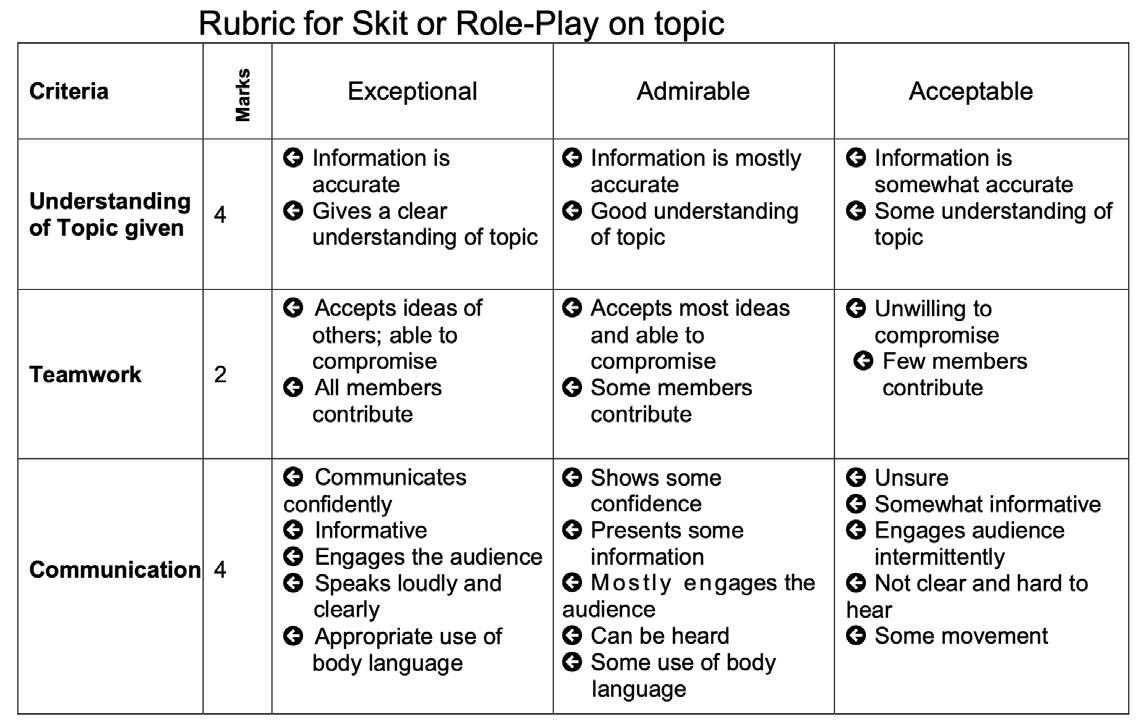
Writing raps or songs about biological processes—such as mitosis, photosynthesis, or the circulatory system can help students recall key content and terminology. These performances also build confidence and communication skills.
Final Thoughts: Integrating STEAM with Intention Incorporating the arts into science education, particularly biology, opens doors to both deeper understanding and broader career pathways for students. Fields such as medical illustration, architectural design, biomedical engineering, and even game development exemplify how the precision of science can harmonize with artistic creativity. Imagination and creativity are not just add-ons they are essential tools for inquiry, helping students visualize, connect, and communicate complex biological ideas. While science offers the structure of facts, the arts bring those facts to life, encouraging students to question assumptions and explore new perspectives. This interdisciplinary approach nurtures critical thinking and innovation, empowering students to develop fresh solutions to scientific challenges. In this light, the "A" in STEAM is not an accessory but a vital element in cultivating scientific literacy and inspiring the next generation of learners.
With abundant STEAM-based resources available online— songs, project guides, model templates, it’s tempting to use
them all. But intentionality is key. Teachers must consider the relevance to curriculum goals, the timing within units, and the developmental readiness of students. A well-placed story or model can transform a lesson, while a poorly timed activity can cause confusion.
When used thoughtfully, the STEAM approach doesn't dilute scientific rigor; it enhances it. It helps students connect the dots between disciplines, express their learning in diverse ways, and—most importantly—see themselves as scientists.
After all, a spoonful of sugar not only helps the medicine go down—it makes the whole experience memorable.
References
American University of Beirut. (n.d.). Integrating art in STEM education. https://aub.edu.lb.libguides.com/c. php?g=1057440&p=7683853
Asmawi, M. A., & Samsudin, M. A. (2022). Integrating arts-based activities in teaching biology. ResearchGate. https://www.researchgate.net/publication/362056501_INTEGRATING_ARTSBASED_ACTIVITIES_IN_TEACHING_BIOLOGY
BioKatalyst. (n.d.). Interactive learning tools for online biology classes: Enhancing student engagement. https://biokatalyst.in/ interactive-learning-tools-online-biology-classes-enhancingstudent-engagement/
Edutopia. (2022, July 11). Integrating the arts in high school science. https://www.edutopia.org/article/integrating-arts-highschool-science/
Getting Smart. (2018, February 4). Top 10 online tools that can bring science to life for your students. https://www.gettingsmart.com/2018/02/04/top-10-online-tools-that-canbring-science-to-life-for-your-students/
Habits of Mind Institute. (n.d.). What are habits of mind? https:// www.habitsofmindinstitute.org/what-are-habits-of-mind/
Merkel, S. M., & Bruckner, J. (2012). 3D molecular design using paper models. Journal of Microbiology & Biology Education, 13(1), 62–63. https://pmc.ncbi.nlm.nih.gov/articles/instance/3577301/bin/jmbe-sm-13-1-62.pdf
RCSB Protein Data Bank. (n.d.-a). 3D printing. https://pdb101. rcsb.org/learn/3d-printing
RCSB Protein Data Bank. (n.d.-b). HIV capsid. https://pdb101. rcsb.org/learn/paper-models/hiv-capsid
Teacher Magazine. (n.d.). Teacher India contributor guide [PDF]. https://www.teachermagazine.com/assets/images/teacher/ Teacher-India-Contributor-guide.pdf
MLRC RESEARCH SYMPOSIUM

$525 USD until October 3
$625 USD until November 22
The Multilingual Learning Research Center (MLRC) Research Symposium is a unique two-day workshop for international educators to engage deeply in research, inquire together about shared problems of practice, discuss innovative strategies for serving multilingual learners and connect with global education scholars. Educators will create an Action Research plan during the symposium to be implemented within their school context, over the remainder of the school year. They will be supported virtually throughout their action research, culminating in a Capstone report
Goal
School-based teams will identify a problem of practice, draw on relevant research to consider strengths and goals for improvement, and design an action research plan.

Objectives
Connect research on teaching multilingual learners to your classroom and school
Learn together with other researchers and practitioners to improve outcomes for multilingual learners
Build capacity for school-based inquiry through action research

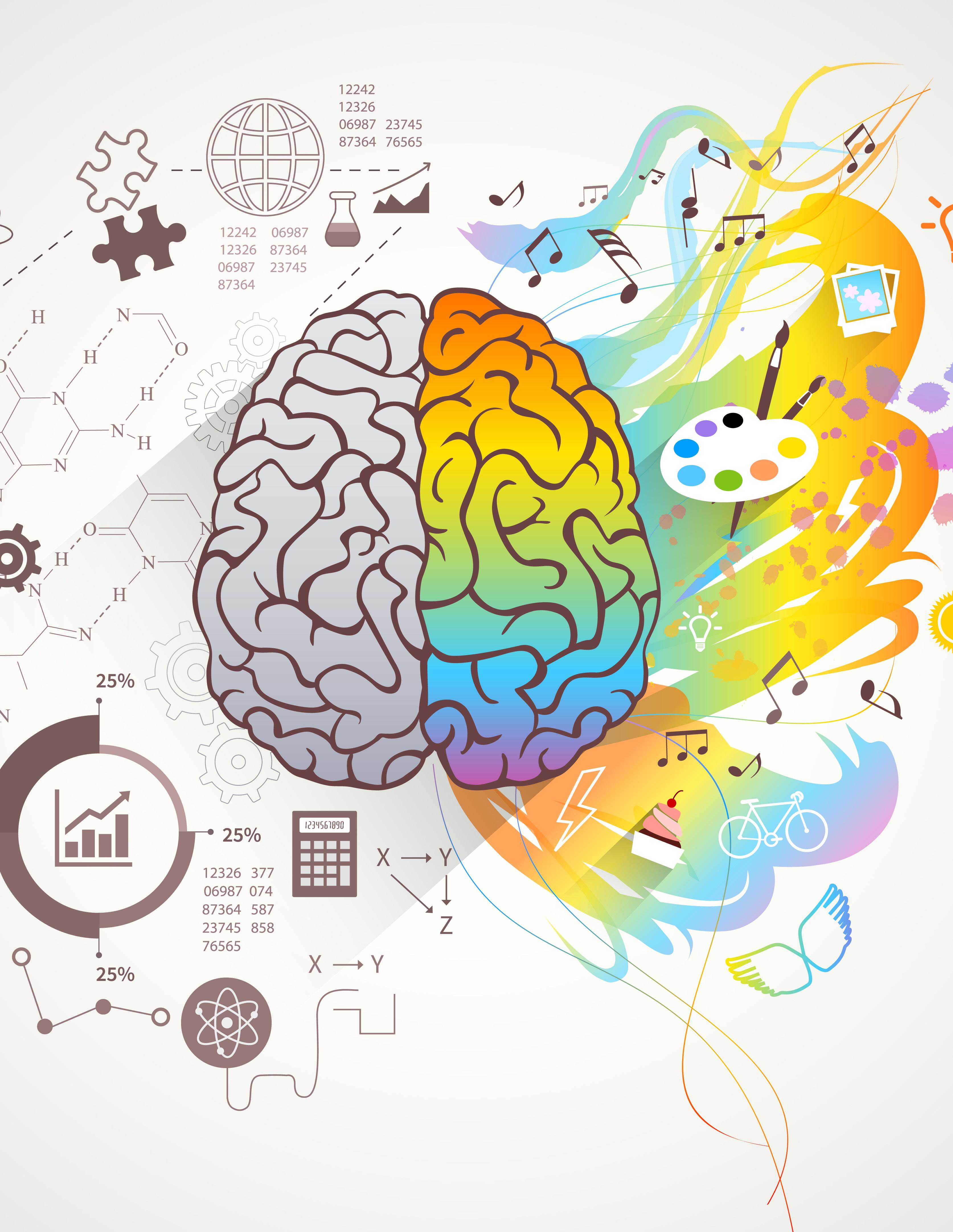
Curriculum
Coaching Cognition and Culture: What Reggio Emilia and Brain Science Reveal
About Deep Learning
By Lola Alvarez Shanghai American School
How do we design learning environments where every child is seen, heard, and intellectually challenged?
At the intersection of neuroscience, culturally responsive pedagogy, and the Reggio Emilia approach lies a roadmap for classrooms where connection fuels cognition—and every learner can thrive.
Educators today are navigating far more than curriculum. We’re shaping how students process the world, build identity, and grow their brains. And we’re learning that equity and neuroscience are not separate lanes—they’re deeply intertwined.
Culture is the Brain’s Software
Zaretta Hammond’s research in Culturally Responsive Teaching and the Brain reframes how we understand equity in education. It's not about adding cultural celebrations to the calendar—it's about recognizing that students' cultural backgrounds directly affect how their brains process, store, and retrieve information. Culture provides the schema their brains use to make sense of the world (Hammond, 2015).
This is echoed in Reggio Emilia's foundation: that children arrive already rich with potential, capable of constructing knowledge when given the chance to explore and express themselves in multiple ways—what Reggio calls the "hundred languages of children."
But recognizing the role of culture is just the beginning. To truly support student learning, Hammond urges educators to understand how culture interacts with the brain’s learning processes. In her words, “Culturally responsive teaching is not just about building relationships—it’s about becoming the personal trainer of students’ cognition.”
That means understanding what the brain needs in order to learn:
• emotional safety,
• trust and connection,
• opportunities for social interaction,
• emotionally engaging content, and
• appropriately challenging tasks.
Each of these needs corresponds to a “brain rule”—a biological truth about how learning happens. Culture acts as the filter through which students experience these conditions. When culture is affirmed and these brain rules are respected, students’ cognitive capacity expands. When culture is ignored and brain rules are violated—through stress, disconnection, or irrelevance—learning is blocked.
Brain Rule #1: Safety Before Learning
The brain is constantly scanning for threat. When students feel unsafe, cortisol—the stress hormone—floods the system and shuts down access to the prefrontal cortex, where reasoning and problem-solving happen.
Practices like family photo displays, emotional check-ins, and calm-down spaces help regulate students’ nervous systems and signal safety. These routines communicate belonging and trust—and make learning possible.
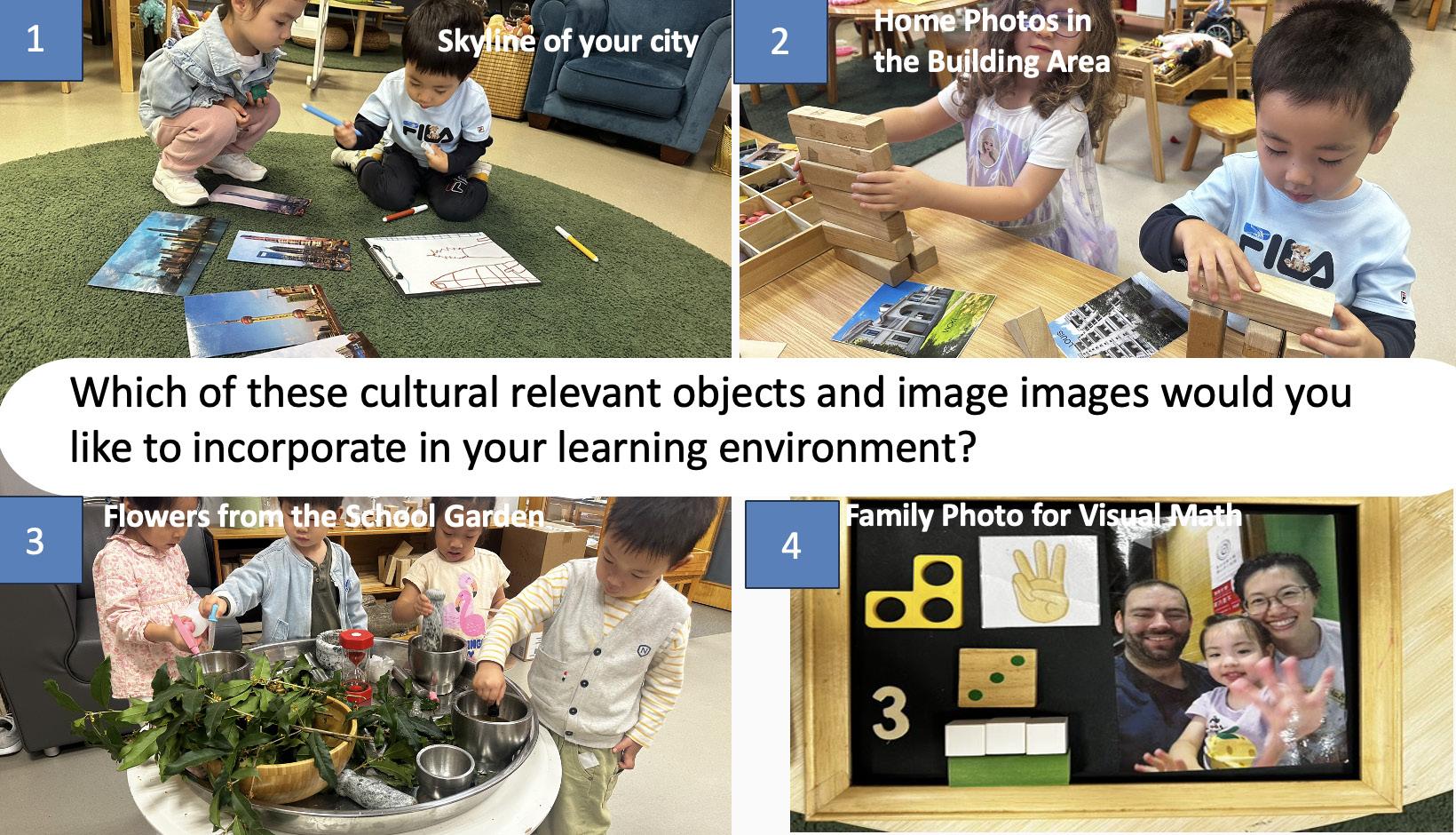
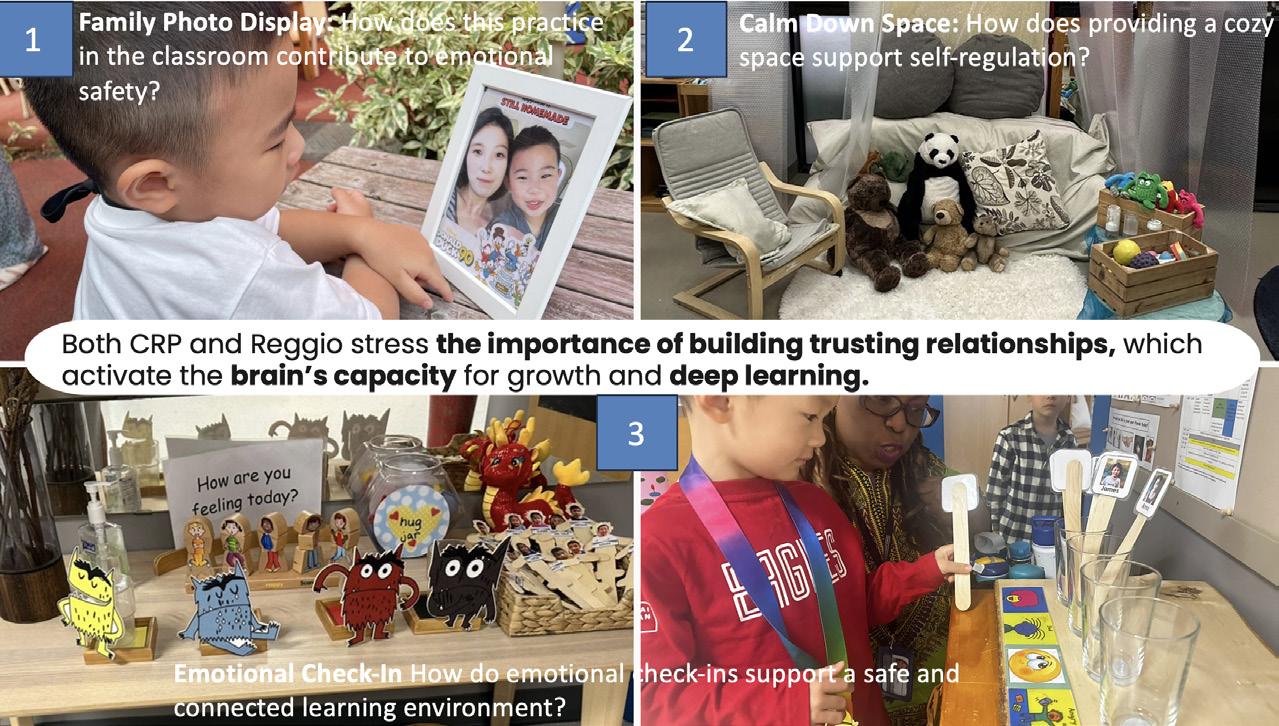
Pedagogy of Listening
Reggio Emilia’s “pedagogy of listening” aligns beautifully with what we know from neuroscience: the most powerful way to activate the brain is through meaningful human connection. Conversations, even nonverbal ones, strengthen synaptic connections. They invite collaboration, build self-worth, and grow reasoning skills. As Hammond puts it, strong teacher-student relationships lower stress and build the trust required for risktaking in learning.
Brain Rule #2: Connection Builds Learning
Oxytocin—the trust hormone—is released during warm, emotionally supportive interactions. It's foundational to learning. When students feel connected to teachers and peers, their brains literally function better.
Reggio environments are intentionally relational. Trust develops through everyday acts: shared projects, personal stories, and knowing glances.
Brain Rule #3: Learning is Social
The brain is a social organ. Mirror neurons help us learn through observation, modeling, and group interaction. That’s why cooperative learning and peer discussion aren’t just engagement strategies—they’re cognitive tools.
Reggio classrooms rely on collaboration. Project work is co-constructed. Ideas are tested through conversation. Exploration is often communal.

Strongteacher-studentrelationshipsreducecortisol(stress hormones),allowingstudentstotakemorerisksinlearning.
Brain Rule #4: Attention is Emotional
The amygdala, the brain’s emotional center, plays a key role in forming memories. If learning is emotionally flat, it fades. If it’s joyful, personal, or novel, it sticks.
Storytelling, music, hands-on work, and choice-driven projects stimulate dopamine, the brain’s reward chemical. This is why family books, identity projects, and student-led inquiry have such staying power.
This mirrors the African philosophy of Ubuntu, which teaches that “I am because we are.” Ubuntu is deeply rooted in the belief that all beings are interconnected and that one’s humanity is only realized through relationships with others. It honors the idea that our growth is bound up in one another’s, and that community—not competition—is the foundation of learning. When classrooms embrace collectivism and Ubuntu, they become places where students thrive not just cognitively, but emotionally and socially. It’s about building a culture where students lift each other, learn from one another, and succeed together.
Final Word: Coach the Brain, Nurture the Heart
We’re not just delivering instruction—we’re coaching cognition. We’re curating environments where students are stretched, supported, and seen.
When we teach with neuroscience and culture in mind, we move beyond engagement—we reach transformation. By blending Reggio principles with culturally responsive brain-based strategies, we create classrooms where joy, rigor, and belonging coexist.
As Hammond writes, we become “personal trainers of students’ cognition.” And like the best coaches, we believe deeply in every learner—and build the space where they believe in themselves. Teacher Implications: From Research to Practice
To bring these insights to life in the classroom, here are five key practices:
1. Design for Emotional Safety
2. Make Culture Central
3. Build Deep Relationships
Brain Rule #5: The Brain Grows Through Challenge
By Haley Osbourne, MEd & Leah Holliday Brent International School Manila
Neuroplasticity means the brain rewires itself when stretched. But challenge must come with support. Hammond’s concept of the “warm demander” describes teachers who combine high expectations with deep care.
Reggio educators do this too. They offer complex, open-ended provocations—and scaffold as children wrestle with them. The goal is not quick answers but lasting thinking.
The Power of Collectivism and Ubuntu
Zaretta Hammond also challenges educators to rethink how we structure relationships in the classroom—not just through one-on-one rapport, but by embracing collectivist cultural orientations. In many communities, learning is not an individual pursuit but a shared journey. The focus shifts from me to we, where individual success is meaningful only in the context of group progress. Hammond invites educators to ask: How do we restore natural confidence by creating spaces where students see themselves as interdependent members of a learning community, not isolated achievers? This is more than a classroom strategy; it’s a cultural stance.
4. Promote Inquiry and Collaboration
5. Balance Challenge with Support
References
Hammond, Z. (2015). *Culturally responsive teaching and the brain: Promoting authentic engagement and rigor among culturally and linguistically diverse students*. Corwin Press.
Edwards, C., Gandini, L., & Forman, G. (1998). *The hundred languages of children: The Reggio Emilia approach—Advanced reflections*. Ablex Publishing.
Alexander, N. (2009). Education and Ubuntu: Towards a philosophy of education for South Africa. *Studies in Philosophy and Education, 28*(2), 149–160.
Willis, J. (2007). The neuroscience of joyful education. *Educational Leadership, 64*(9), 80–85.


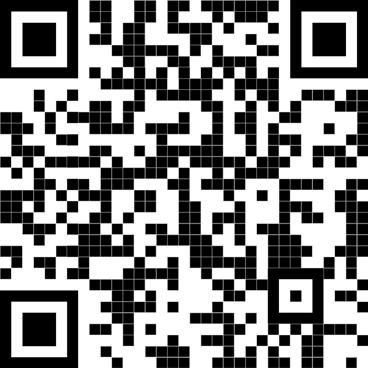

Curriculum
A PYPx Journey
By Kelsey Sumner, Jen Hardie, Tom Evans, Pat Rogers, and Harry Dalzell
United Nations International School of Hanoi

The PYP Exhibition (PYPx) marks the culmination of the International Baccalaureate (IB) Primary Years Program, often serving as one of the most impactful experiences of elementary school. Recognizing its demanding nature, the Grade 5 (G5) team at UNIS Hanoi has consistently refined their approach to ensure students are thoroughly prepared. Their innovations prioritize agentic, student-centered learning, aiming to enhance the authenticity of inquiry and action, deepen learning, and develop transferable skills.
Year-Long Strategic Planning: Mapping Transferrable Skills
Preparation for PYPx is a year-long endeavor, focusing on a cohesive program that gradually builds the necessary skills and understanding to ensure that by the end of the year, students are well prepared for the exhibition unit. This comprehensive approach alleviates pressure by distributing the learning load throughout the year. The G5 team maps out skills and conceptual understandings to be nurtured in specific units, adjusting the program as needed. Last year, for example, a new unit was introduced to explore artificial intelligence (AI), and a traditional writing unit on "discussion texts" evolved into an inquiry on persuasive emails. This foresight also allows for the strategic placement of MISO research skills, (Media, Interview, Survey, and Observation), across different units. The team also ensures a balanced spread of presentation opportunities for students to practice sharing their learning with various audiences.
Personal Inquiry: Agentic, Student-Centered Learning
A significant shift has been the G5 team's commitment to dedicating one lesson per week to Personal Inquiry. These sessions empower students to pursue inquiries of their own choosing, fostering curiosity and inquiry skills. Mini-lessons for these sessions unpack complex aspects of PYPx including the stages of inquiry, research types and lenses of action. This consistent practice embeds important systems, expectations, and assessment routines across the year, while also supporting students in building relationships with support teachers and mentors. Personal Inquiry not only develops knowledge, self-management and hones PYPx skills, it also champions student voice, agency and the possibilities offered by self-directed learning.
A key innovation in personal inquiry has been the introduction of AI chatbots. While traditional research methods remain valued, AI provides significant support, especially for less common projects where age-appropriate media can be scarce. Accessing basic understanding early through AI allows students to delve deeper into their inquiries sooner, providing more time to consider complex aspects such as differing perspectives, global needs, and societal challenges. AI chatbots are strategically programmed to provide further articles and video resources, freeing up student time and cognitive space for more diverse research methods like interviews, surveys, and observations. Furthermore, upskilling students in AI scaffolds such as translation, speech-to-text, simplification, and elaboration aligns with Universal Design for Learning (UDL) principles to make inquiries more accessible.
"Self-Management Day": Cultivating Independence
Developing and reflecting on self-management skills is crucial for PYPx readiness. Every Friday, the G5 team dedicates four periods to a "Self-Management Day", where students create their own schedules, deciding how, when, and where they will learn. A slide deck provided the day before outlines expectations and
mini-lesson options, allowing students to plan their day. Based on their self-assessment, students choose to attend lessons, work independently, or pursue deeper understanding.
Each teacher plans learning opportunities for a specific curriculum area, delivering corresponding mini-lessons three times throughout the day, offering scheduling flexibility. Beyond lessons, teachers use this time for individual student conferences, focusing on self-management and other Approaches to Learning skills (AtL) . Consistent AtL conferring systems provide concrete strategies and next steps tailored to individual student needs, with the day always concluding with reflections on AtL growth and successful strategies. This sustained yearlong opportunity allows students to meaningfully develop their AtLs, supported by goal strategy cards and conferring routines that ensure consistent adult support. Embedding these strategies year-round builds autonomous agency, providing a strong foundation for the independence and organizational skills required for PYPx.
Community Engagement: Maximizing Mentor Support
UNIS Hanoi leverages its supportive community to maximize adult involvement in PYPx. A creative recruitment drive, additional support, and the shift to individual student projects resulted in an impressive 1:1 student-to-mentor ratio. This unparalleled level of individual attention benefits mentors too, who can offer more focused support to a single inquiry.
The involvement of the Library Teacher throughout the process provides expert knowledge of library resources, research databases, and media subscriptions. Her accessibility near the G5 classrooms allows for drop-in support and individualized assistance. MUN Mentors (Grade 10 student volunteers), also support G5 students with research and AtL skills throughout the year during Personal Inquiry time.
The team also encourages students to tap into the broader student body for expertise. Middle and High School Service Learning groups, students with particular interests, and even former PYPx inquirers are enlisted for interviews or research support. Early in the process, G6 students share their PYPx journeys, offering valuable insights and tips to the G5s. These "experts" complement the numerous adults who contribute interviews, information, and opinions to support successful PYPx projects.
Creativity and Engagement: Removing Barriers to Learning
Recent years have seen the G5 team actively remove barriers to student creativity and engagement. One significant change was the evolution of collaborative groupings. Previously, students were grouped by Sustainable Development Goals (SDGs), often leading to a lack of engagement as chosen inquiries were tweaked to fit in with the group. This also resulted in inconsistent ownership and unbalanced contributions. The team transitioned to individual projects with higher accountability, empowering students to explore their unique interests without the constraints of group dynamics, fostering a more personalized and focused approach.
While valuing collaboration, the team adopted a more authentic and organic model, providing intentionally-planned, purposeful collaborative opportunities at key points. Examples include regular work with MUN Mentors, G6 visits, peer feedback sessions, collaborative research, ad hoc resource sharing, action-planning and organic groupings for the share days. This adjustment al-
lowed for the benefits of purposeful collaboration without the emotional challenges of high-stakes group work.
Furthermore, moving away from aligning projects solely with SDGs has empowered students to delve into topics that resonate personally, enhancing intrinsic motivation and engagement, and leading to deeper, more personal learning. Pressure was also relieved by replacing a traditional musical performance with a process documentary, which captures the PYPx journey. This new format prioritizes the inquiry process over rehearsal time, emphasizing PYPx as a journey rather than a single event.
Honoring the Process: Reframing ‘Action’ and the Share Day
A common misconception about PYPx is that "The Exhibition" is merely the two days of sharing at the end. UNIS Hanoi has actively worked to shift this perception, emphasizing the entire PYPx process and the broader PYP journey. This shift not only highlights process learning and reflection on student growth but also reduces pressure on the share days, which previously risked becoming overly rehearsed or product-focused. Students sometimes struggled to differentiate between "action" and "sharing," leading to more superficial action projects. Reframing the share days benefits students, parents, and the wider community. The emphasis on process over product is evident through concrete PYPx Learning Goals, thorough documentation of the inquiry, continuous assessment and feedback through robust conferring systems, abbreviated preparation time for share days, and flexibility at year-end for ongoing action projects. Historically, common actions like posters or fundraisers often distanced students from the actual change they sought. The program now highlights diverse action types—lifestyle choices, advocacy, teaching, forming groups, or creating—encouraging students to take action in varied, meaningful ways.
To further support diverse and meaningful action, the "How We Organize Ourselves" unit was tweaked to encourage a broader range of action. Students chose community issues and took immediate, applicable action, fostering a sense of accomplishment and inspiring more authentic, sustainable action projects.
Moving Forward: Sustaining Innovation and Impact
The journey of refining the PYPx experience at UNIS Hanoi is an ongoing testament to the G5 team's dedication to student success. While immensely proud of the advancements made—from year-long strategic planning and the integration of AI in personal inquiry to the cultivation of self-management and the maximization of mentor support—the team continually seeks opportunities for further growth. There's a clear vision for enhanced vertical alignment within the Elementary School and seamless integration with the Middle School curriculum, ensuring a cohesive and progressive learning journey for students. The aim is to champion these innovative practices—such as personal inquiry, AtL conferring, self-management opportunities, and authentic action—across the entire school. Within G5, our reflections on this year’s process have encouraged us to provide more scaffolding to personal inquiry and to alter the format of MUN mentor sessions to increase their impact.
By consistently observing and reflecting on student progress throughout PYPx and beyond, the UNIS Hanoi G5 team is committed to continuously tweaking their program and practices, ensuring that the PYPx remains a truly transformative experience that maximizes student growth and prepares them for future challenges.
SPONSORED WEEKEND WORKSHOPS
PeerSphere: Leading Effective Teams for New Middle Leaders
November 1-2, 2025
American School of Japan
Consultant: PeerSphere
Format: In-Person
Coordinator: Kathryn Handy
Building a Cohesive K–12 Curriculum through Vertical and Horizontal Alignment
November 7-8, 2025
North Jakarta Intercultural School
Consultant: Joseph Chong
Format: In-Person
Coordinator: Ezra Alexander, ealexander@njis.org

Curriculum
Building Bright Futures: Scaffolding Learning for Every Child’s Success
By Arushi Mehta
The British School, New Delhi
Think of a time when your students experienced pure joy in their learning. The kind of moment where they persevered through a challenge and emerged victorious. What made that happen?
As educators, we design those moments. We set challenges, provide guidance, and create an environment where students feel both motivated and capable. But we also know that deep learning doesn’t happen by accident. It requires careful planning, structured interventions, and the right support at the right time.
This is where scaffolding becomes a game-changer. It’s the temporary framework we provide to help students climb higher, push further, and achieve more than they thought possible. Just like the scaffolding used in construction, it is never meant to stay forever. It holds learners steady until they can stand confidently on their own.
The
Heart of Scaffolding: Finding the Right Balance
But what exactly does effective scaffolding look like? The key lies in striking the right balance between challenge and support, which Mary Myatt (an education adviser, writer and speaker) describes in her book Highchallenge,Lowthreat:
"Wewanttomakesurethatourclassroomshaveanatmosphere of high challenge and low threat. The high challenge takes the form of demanding work; the low threat comes from reassuringpupilsthattheydon’tneedtoknowalltheanswersbecause wearegoingtoscaffoldthewaysinandsupportthem,primarily throughtalk."
When students feel secure, they are more willing to take risks in their learning. If the challenge is too low, they disengage. If the pressure is too high, they shut down. Our job is to create an environment where students struggle productively, challenged enough to stretch their thinking but supported enough to keep moving forward.
The
Theory Behind Scaffolding: Learning in Layers
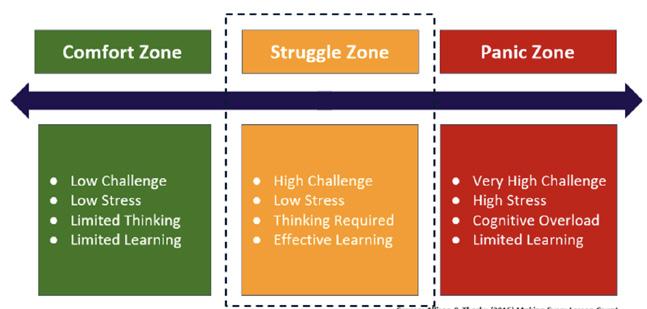
This idea of gradual release of support isn’t new. It’s deeply rooted in the work of two influential psychologists, Jerome Bruner and Lev Vygotsky. They believed that learning happens best when it is layered on top of prior understanding, with structured support that gradually fades away as learners gain confidence.
to help them succeed.
Some of the ways I scaffold reading in my classroom include:
• Guided reading sessions that model fluency and comprehension
• Chunking information into smaller, manageable parts so students aren’t overwhelmed
• Providing sentence stems and discussion prompts to scaffold responses
• Encouraging peer collaboration so students can learn from one another
• Using engaging visuals and storytelling to make reading come alive
Each of these strategies ensures that students don’t just decode words but truly engage with the meaning behind them.
From Support to Independence: Knowing When to Let Go
But here’s the key—scaffolding is not meant to be permanent. It’s not about keeping students dependent on us; it’s about equipping them with the skills and confidence to stand on their own. Think about learning to ride a bike. At first, we hold the seat, ensuring balance. We run alongside as they pedal, offering encouragement. Eventually, we let go, and before they realise it, they are riding on their own.

Building on their work, Andy Tharby, co-author of Making Every Lesson Count , describes scaffolding as the bridge between challenge and success. In essence, scaffolding ensures students stay in what we call the ‘struggle zone’, where they are challenged just enough to engage deeply but not so much that they feel overwhelmed. Too little challenge leads to disengagement. Too much, leads to frustration. Our role is to keep them in the right space where learning includes high challenges but achievable. Tom Sherrington, education consultant, author and the blogger of teacherhead.com drawing from Barak Rosenshine’s research on principles of instruction, has taken these ideas even further, breaking them down into his WALKTHRUs—a 5-step guide that makes scaffolding more practical for teachers.
Scaffolding in Action: Supporting Readers in Year 1
This balance is something I have been deeply focused on this year, particularly in my approach to reading with my Year 1 students. Reading is one of the most powerful gifts we can give young learners. It builds confidence, opens doors, and fuels curiosity.
But here’s the reality: a love for reading doesn’t happen by accident. It requires deliberate, thoughtful scaffolding at every step. When a child picks up a book and tackles tricky words with enthusiasm, it’s because they have been given structured support

Maximum to minimum scaffolding provided for scientific diagramsinYear1Sciencelessons
The same principle applies in the classroom. The art of scaffolding lies in knowing when and how to step back. If we hold on too long, we create learned helplessness. If we remove support too soon, we risk frustration and failure. The transition from supported learning to independent learning is where true growth happens.
Why This Matters: Every Child’s Journey
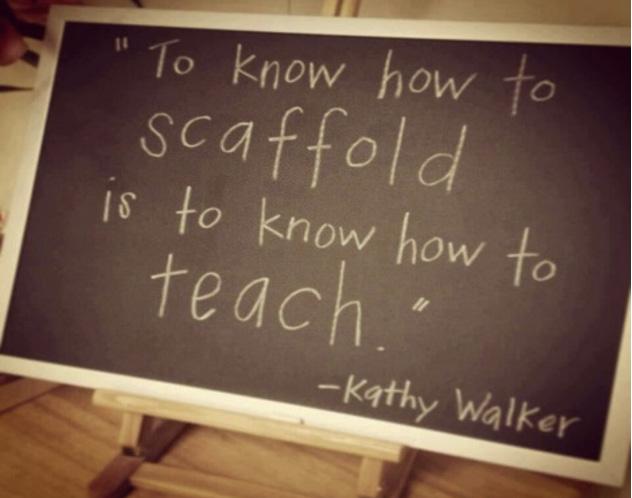
Ultimately, scaffolding is about more than just academic success. It’s about building students’ confidence, resilience, and sense of agency.
Our promise to our school community is that learning is for all. We believe in every child’s potential, and it is our responsibility to give them the tools to thrive.
The magic of learning happens when students struggle, persist, and succeed. When we scaffold effectively, we create classrooms where students feel challenged but not threatened, where they grow in independence, and where they experience the joy of learning—one scaffold at a time.
Thriving Couples in Leadership
By Dee & Kevin Baker, American International School of Guangzhou and Lyn & Chris Jansen, Leadership Lab Global

Heads and Principals in international schools, along with their partners, often balance intense leadership demands with the challenges of international life. Many face frequent transitions, intense community visibility, and a range of competing personal and professional roles; unfortunately, the impact on these relationships can be brutal.
“The bottom line – in our international school leadership journey, we have seen too much separation and divorce, too much loneliness, too much isolation, nowhere to turn to as couples, and no acknowledgment ofthe importance of “us” as a couple (a leader and spouse). We talk about the importance of relationships in our personal wellbeing and in our school communities, we talk about embracing people’s lives, but we do not talk or provide space for a conversation about the wellbeing of our most important relationship – that with our spouse or partner. There is no place or safe space to get support as a couple, to share challenges as a couple”. Dee and Kevin Baker.
It can be argued that the loneliness school principals experience is compounded for leaders of international schools, who are often isolated from the normal physical and psychosocial support systems that heads are able to rely upon in their home countries. (Dr Helen Kelly, 17th March 2019, link to post, https://drhelenkelly.com/article. php?id=31)
At the Bangkok EARCOS Leadership Conference in October 2024, Dee and Kevin Baker (American International School of Guangzhou) and Lyn and Chris Jansen (Leadership Lab Global) hosted a workshop on this topic, and over 40 people attended, sharing both the challenges and also the successes that they had experienced as leaders and couples.
In response, a new EARCOS weekend workshop, called the Thriving Couples in Leadership Retreat is being piloted in Bintan, Indonesia (near Singapore), from March 6th to 8th, 2026. This retreat supports these couples in a relaxed and collegial manner.
“We talk about the importance of relationships in our personal well being, we talk about embracing people’s lives, but we do not talk or provide space for a conversation about the wellbeing of our most important relationshipthat with our spouse or partner”. There is no place or safe space to get support as a couple, to share challenges as a couple” Kevin and Dee Baker.
This initiative is not a retreat for broken relationships or any sort of marriage enrichment programme. Nor is it just for couples where both partners are in leadership or even work at the same school. Instead, it is an opportunity for leaders and their partners in their highly visible roles to invest into their relationship and for their schools to recognise the importance of prioritising this relationship.
We have observed and experienced many of the issues, dilemmas and tensions that couples experience in these international contexts. (i.e., role, place, importance, significance, public demands and expectations, lack of support, mental and physical well-being, disconnection, clashing of values, safety & trust, confidentiality, juggling time for children and extended family abroad, etc.)
This retreat offers leaders and their partners a chance to take a break together in a serene and beautiful setting, far removed from the distractions and pressures of their workplace. At the retreat, we will acknowledge and explore various issues, dilemmas, and tensions that couples in similar roles may experience, which are unique to the International School Leadership context. We will also explore options and ideas that other couples have intentionally used to help their relationships flourish.
The essence of the retreat is that we believe the #1 contributor to the performance of our school senior leaders is their wellbeing. For leaders who have a partner or spouse (of the same sex or opposite sex), the quality of this relationship is the most significant factor impacting the leader’s wellbeing and performance. We have encountered many friends who have experienced broken relationships, and this has had a severe impact on their work. Through this retreat, we hope to support ‘Thriving couples in Leadership’.
“Too often, the partner or spouse of an international school leader is ‘the invisible person’. They are often not included in the life of the school or community. Yet, this person is the most important person and support in the life of the leader”. Dee and Kevin Baker.
More information;
• ●We are focused on Heads and Principals and their partners because there are specific dilemmas, pressures, and scenarios that are unique to these senior roles, beyond what all leaders can experience.
• We will be facilitating another workshop at the EARCOS Leadership Conference in October 2025 so please come along and share your thoughts
• For more information or to register your interest in the retreat, please explore the Thriving Couples in Leadership Retreat
• Any queries, please email Dee dbaker@aisgz.org or Kevin kbaker@aisgz.org or Lyn lynjansennz@gmail.com or Chris chris@leadershiplab.co.nz
Action Research
Breaking Bad... Habits in Science Education: Culturally Responsive Approaches to Teaching Chemistry
By Dr. David Knuffke, Ms. Vivian Huang, and Mr. Paul Booth High School Division, Singapore American School
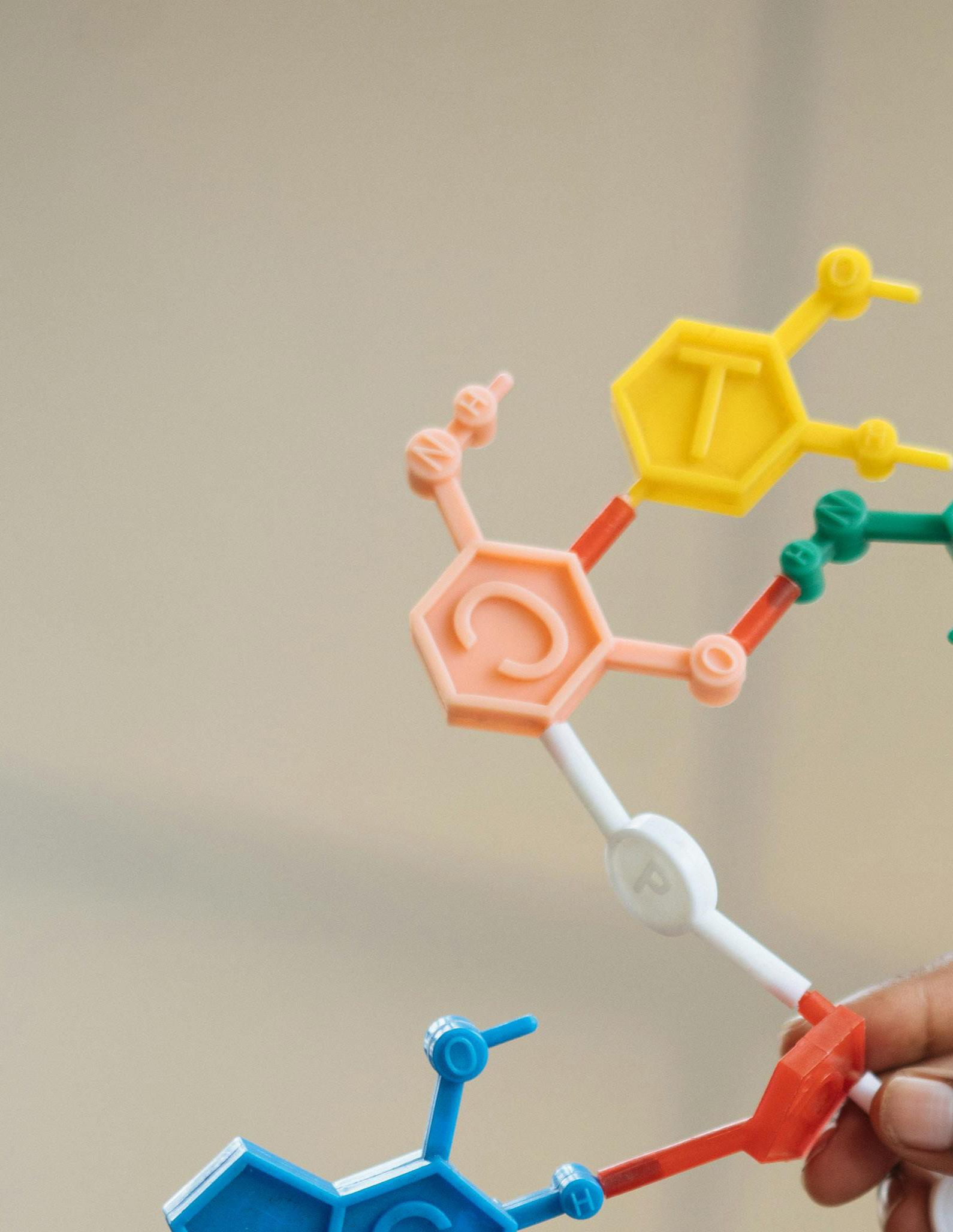
Introduction
How can we create a chemistry classroom that reflects the diversity of our students and connects abstract scientific concepts to their lived experiences? At Singapore American School (SAS), our general chemistry professional learning community (PLC) embraced this challenge through an action research project focused on integrating culturally responsive pedagogy (CRP) and student-centered learning approaches into our high school chemistry curriculum. Our work aligned with our institutional priorities around CRP and the Next Generation Science Standards (NGSS) while also prioritizing student engagement, cultural competence, and equity in science education.
Reimagining Chemistry Education
Traditional chemistry instruction often centers abstract concepts disconnected from students' lives and cultural backgrounds. This approach can marginalize diverse learners and reinforce the perception that science is inaccessible (Bang & Medin, 2010). Our PLC sought to disrupt this pattern by anchoring each unit in culturally relevant phenomena and fostering classroom environments where students could actively construct knowledge while seeing their identities reflected in their work (Ladson-Billings, 1995). We were guided by our institution's internally-developed CRP Look-Fors document, which provided practical applications of CRP principles within our specific context (Singapore American School, 2023).
The project unfolded over three units during the first semester of the 2024-2025 school year, each employing a different culturally responsive anchoring phenomenon:
1. Water Pollution and the Periodic Table: We examined Singapore's dependence on water imports and local contamination issues, connecting chemistry concepts to environmental concerns that directly impact our local community.
2. Nuclear Chemistry and Cultural Perspectives: Students shared family and cultural stories about stars and the universe as the framing for exploring nuclear fusion and stellar evolution, seeking to connect the diversity of cultural cosmological narratives to scientific understanding.
3. Chemistry of Cooking and Baking: Students investigated family food traditions and local Singaporean cuisine, using cooking and baking as accessible entry points to understand chemical bonding and reaction mechanisms.
Student-Centering of Instruction & Assessment
The literature on CRP cautions that simply integrating students' home cultures is insufficient for truly responsive pedagogy (Gay, 2002; Paris, 2012; Rodriguez, 2015). To address this challenge, the PLC worked to fundamentally restructure our assessment and instructional approaches to align with culturally responsive principles, embracing Imad et al.'s (2023) call to rehumanize STEM education through holistic critical practices. This comprehensive approach included three key shifts:
• Student-Centered Instructional Design: We repositioned teachers as facilitators rather than information deliverers, implementing structured peer collaboration with rotating group memberships and anchoring each unit in phenomena that students could investigate and question. Multiple feedback mechanisms directly informed real-time instructional adjustments, while emphasizing student sense-making through discourse. Students gained choice in project topics and expression formats, creating authentic opportunities to integrate their cultural knowledge and experiences into scientific inquiry.
• Diversified Assessment Practices: Moving beyond traditional in-class summative exams, we incorporated longerterm projects that honored student identity and choice. For example, students selected elements with personal cultural significance and created presentations connecting atomic properties to cultural and practical applications. In-class assessments were restructured around each unit's anchoring phenomena—such as analyzing chemical processes in culturally significant recipes during our cooking and baking unit, culminating in a class potluck that celebrated students' diverse culinary traditions.
• Standards-Based Grading Framework: We transitioned from traditional point-based systems to standards-based grading that emphasized mastery and growth over singlepoint performance measures, providing multiple opportunities for students to demonstrate understanding while aligning with our equity-focused goals.
What We Learned
Our mid-semester and end-of-semester surveys provided sources of data on the project's impact. Students reported high levels of care and support across four key domains, as shown in Table 1.
Care and Support “My teacher considers my feelings, values my feedback, and cares about my success"
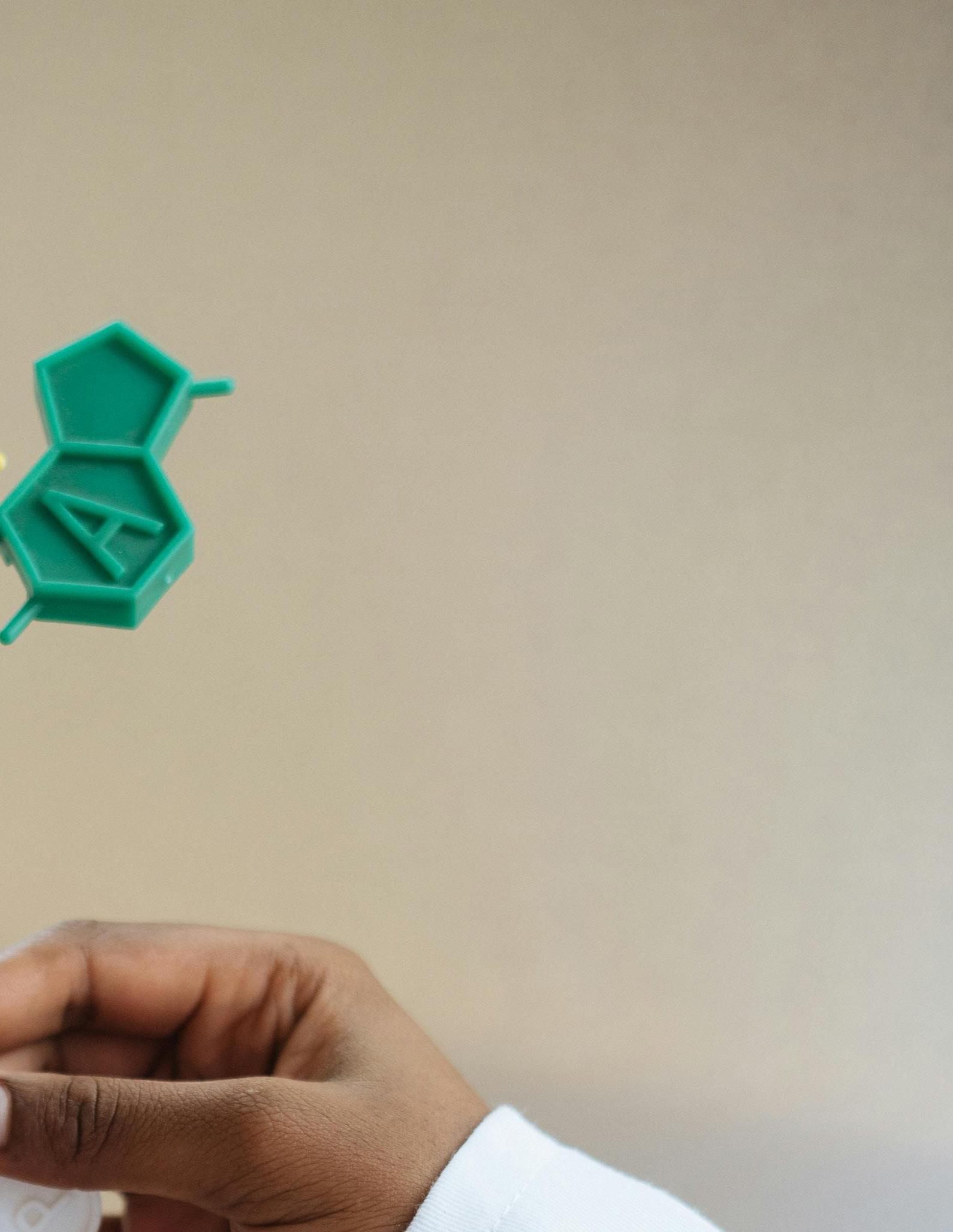
“The topics we discuss in class feel relevant to my life and the real world”
materials we use in class reflect a variety of cultures and perspectives”
Student voices also provided qualitative insights into their experiences:
“I think the current system for learning is the perfect combination of teaching from the teacher and learning/collaborating with our peers.”
“I understand why we are learning chemistry as it applies to stuff we see everyday. For example, before learning about unit 2, I thought stars were just big fireballs in space. However after unit 2, I got to learn what stars are made of and how they work.”
“It would be great to see examples from more countries or cultures, not just the same ones all the time.”
These findings align with Hammond's (2015) emphasis on creating "high-trust, low-stakes" environments that foster academic and social growth. Representation and inclusivity emerged as both a strength and an area for growth. The most persistent challenge was ensuring broad cultural representation in curricular materials—achieving this required deliberate, sustained effort beyond a single semester. While students appreciated opportunities to incorporate their cultural backgrounds into projects, they also called for more diverse examples. This feedback echoes Rodriguez's (2015) critique of insufficient attention to equity within science education frameworks.
Ongoing Iteration
The iterative nature of our action research proved invaluable. Each cycle of planning, action, observation, and reflection revealed new insights and opportunities for growth. In particular, our PLC structure provided the main way in which we worked through the course of the project in a spirit of collaborative reflection. This process allowed us to make thoughtful midpoint adjustments, such as incorporating more global examples and refining collaboration strategies. The PLC structure provided accountability and a dedicated space for professional growth.
Implications for Practice
For educators interested in pursuing similar goals, our experience suggests several actionable steps:
Table 1: Sample Student Survey Results (N = 94, 5-point Likert scale)
1. Center Relational Teaching: Strong teacher-student relationships create the foundation for culturally responsive classrooms.
2. Anchor Science in Real-World Phenomena: Connect abstract concepts to issues that matter in students' lives and communities.
3. Amplify Student Voice: Create opportunities for students to share their cultural knowledge and experiences as valuable contributions to scientific understanding.
4. Embrace Iteration: View the integration of CRP as an ongoing journey rather than a destination, continuously refining approaches based on student feedback and classroom observations.
Conclusion
The work of integrating CRP and student-centered approaches is not merely an educational endeavor; it is an authentic commitment to the humanity of students and teachers. By reimagining chemistry education as a space where diverse cultural perspectives are not only welcomed but celebrated, we can create classrooms where every student sees their potential reflected in the content and practices of science. Our journey continues as we develop and refine our approach. Through this ongoing work, we hope to contribute to a vision of science education that is truly democratic, inclusive, and culturally sustaining.
References
Bang, M., & Medin, D. (2010). Cultural processes in science education: Supporting the navigation of multiple epistemologies. Science Education , 94(6), 1008–1026. https://doi.org/10.1002/ sce.20392
Hammond, Z. (2015). Culturallyresponsiveteachingandthe brain:Promotingauthenticengagementandrigoramongculturallyandlinguisticallydiversestudents . Corwin.

Gay, G. (2002). Preparing for culturally responsive teaching. Journal ofTeacher Education , 53(2), 106–116. https://doi.org/10. 1177/0022487102053002003
Imad, M., Reder, M., & Rose, M. (2023). Recasting the agreements to re-humanize STEM education. Frontiers in Education https://doi.org/10.3389/feduc.2023.1193477
Ladson-Billings, G. (1995). But that's just good teaching! The case for culturally relevant pedagogy. TheoryIntoPractice , 34(3), 159–165. https://doi.org/10.1080/00405849509543675
Paris, D. (2012). Culturally sustaining pedagogy: A needed change in stance, terminology, and practice. Educational Researcher , 41(3), 93–97. https://doi. org/10.3102/0013189X12441244
Rodriguez, A. (2015). What about a dimension of engagement, equity, and diversity practices? A critique of the Next Generation Science Standards. Journal of Research in Science Teaching , 52. https://doi.org/10.1002/tea.21232
Singapore American School. (2023). HS unpacked CRP lookfors. Singapore American School.
Global Citizenship Community Service Grant Rise & Thrive
By Megan Wong
Concordia International School Shanghai
Puberty has always been shrouded in mystery and discomfort as a stigmatized topic despite it being natural and occurring in every body. The body experiences natural changes and develops into a new person. Some people may undergo small changes, while others undergo bigger ones. Some may change as early as 8 years old, while others may not experience them until 15. Puberty is different for everyone, and it is crucial to demystify the topic and destigmatize puberty for adolescents to gain the necessary resources to thrive and navigate through this period. Conversations and resources are important for the wellbeing, confidence, and health of young people as they transition into adulthood.
It is so important to break the silence about puberty. With the right resources, we can create a community of knowledge and understanding. Puberty inflicts rapid changes, and many are unprepared or uninformed, creating feelings of fright and isolation. With clear, age-appropriate education, we can help demystify bodily and emotional changes. Education is necessary to help children and teens recognize what is normal, when to seek help, and how to care for their changing bodies.
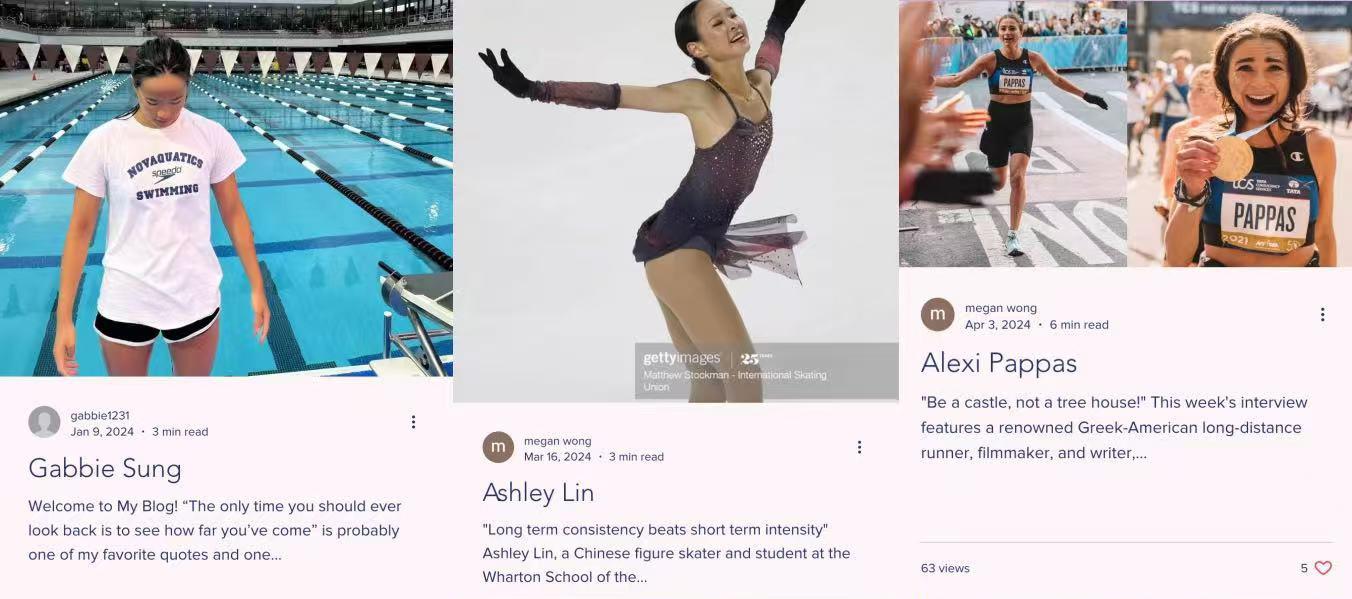
For generations, topics like menstruation and sexual development have been treated as taboo. This secrecy creates shame and stigma, creating long-lasting psychological effects. By normalizing these discussions, we can reduce the social pressure and embarrassment associated with puberty-related experiences. With more young people talking openly about what they are going through, they are less likely to internalize shame or suffer in silence. We founded Risenthrive to demystify puberty and foster a positive understanding of this natural process. Our goal is to strive to empower young female athletes with accurate information, support, and guidance during the transformative journey of puberty. We believe that by promoting knowledge, self-acceptance, and open communication, we can help young individuals embrace their development with confidence, resilience, and a sense of empowerment. Producing blogs, podcasts, Instagram posts, interviews with famous athletes, and more, we share our safe and reliable resources across all platforms to reach the suitable audience and create a change in our society. We've been through it ourselves, and we're here to give firsthand advice, conquer difficulties together, and create a community of unstoppable girls!



Our blogs include information about the biology of periods, how it affects mental and physical health, and what changes it brings upon in the body. Our podcasts include interviews with athletes such as Alexi Pappas, Olympic long distance runner; Ashley Lin, Chinese National Bronze medalist; Beverly Zhu, Olympic figure skater; YangYang, Olympic speed skater; and Xiangyi An, twotime national champion. Our Instagram posts provide weekly updates of puberty information and resources.
Demystifying puberty is not just about giving “the talk.” It's about creating a culture of openness, respect, and informed guidance. When adults create safe spaces for these conversations, young people gain the tools they need to navigate adolescence with confidence, dignity, and health. The earlier and more honestly we engage with these topics, the better equipped the next generation will be to grow, thrive, and support others in doing the same.

An Action Research Study at an International High School to Improve AP Computer Science A Student Learning Through AI-Driven Feedback
By Yohan (John) Kong Stamford American International School of Singapore
I. Setting and Goal
This action research examined the function of AI-generated feedback, particularly via ChatGPT, in improving student comprehension, engagement, and self-regulation in an AP Computer Science A (CSA) course. At a demanding international high school, students frequently encounter challenges in obtaining prompt, individualised feedback during solo studies. A delay in clarification might cause misunderstanding, annoyance, or disengagement, especially when it comes to abstract topics like arrays, recursion, and object-oriented programming.
Acknowledging this, the project sought to investigate the potential of AI tools to serve as scalable, real-time feedback partners to facilitate more profound learning. The research was based on fundamental educational theories:
• Formative Assessment Theory (Hattie & Timperley, 2007): Feedback must bridge the disparity between actual and targeted performance.
• Constructivist Theory (Vygotsky, 1978): Learning transpires by facilitated exploration and contextual assistance.
• Self-Regulated Learning (Zimmerman, 1989): Learners advance by overseeing, assessing, and modifying their tactics.
• Cognitive burden Theory (Zawacki-Richter et al., 2019): Tailored feedback diminishes superfluous burden and improves relevant processing.
II. The Question for Research
What impact does AI-driven feedback have on students comprehension, involvement, and achievement in AP Computer Science A at an international high school?
III. The Action Research Design Cycle
The project used an action research spiral that went in circles:

Identify: Students in AP Computer Science A had trouble getting personalised feedback on time for individual studies.
Research Question: In what ways does AI-driven feedback influence student comprehension, involvement, and achievement in AP CSA?
Plan: A pre-survey was given to find out how students felt about feedback, engagement, and their habits of studying on their own. ChatGPT was chosen as the AI tool, and guided prompts were included in the weekly assignments.
Implement: AI-assisted feedback was used using brief questionnaires that were repeated to get early input and find usability problems. Because the sample size was limited, a detailed qualitative survey was done at the end of the cycle to look into stu-
dents' experiences, the quality of their comments, and how well they could control themselves. A thematic analysis, bolstered by descriptive statistics, was employed.
Collect: Changes to data collection and instruction were linked. Feedback in the middle of the cycle helped make the prompts clearer, the modelling of instruction better, and the feedback scaffold stronger. This cycle of implementation and adjustment made students more interested in studying and improved their results.
Reflect: The final analysis showed that people felt more independent, understood AI feedback better, and had a better opinion of it. The results showed how important it is to be able to read comments and how essential it is to have guided AI integration.
IV. Results
A. Results of the Quantitative Survey (N = 22) Survey Item % Agree/Strongly Yes
• "I felt more in charge of my own learning after using perso alised AI assistance. " 77%
• "AI-generated suggestions fit the way I like to learn." 82%
• "AI feedback helped me do better on my FRQ or assignment scores." 86.4%
• "I plan to keep using AI tools like ChatGPT in my computer science classes." 86%
Before AI was added:
• Half of the people said they were "somewhat unconfident" in Java.
• People said that recursion, inheritance, and debugging were the hardest topics.
After using AI:
• Students said they were more clear, motivated, and independent when they were doing coding homework.
• People who didn't want to ask for help at started to take more action to fix their mistakes.
B. Qualitative Themes and Responses from Students Theme 1: More freedom
• "Yes, definitely! The feedback helps right away, and I don't have to wait for a teacher to respond. It is also focused on my specific mistake, not just a general review.”
• “Yes I think so. It’s faster than waiting for teacher and it knows what I did wrong most times."
Theme 2: Support that is personalised and nonjudgmental
• "It explained how Java checks the number and types of parameters, which directly connected to what I was confused about. That made it feel more like a response to my specific misunderstanding, not just a generic lesson.”
Theme 3: Fluency in Feedback
"After reading the AI feedback, I went back and reviewed the constructor rules in Java, especially how method overloading works. I revised my answer to the question and made sure I understood why option E was wrong. I also tried writing a few constructors in my own code to test what combinations would
or wouldn’t cause a compilation error. It helped me apply the concept and remember it better.”
Theme 4: Works well with human feedback
"I didn't understand chat gpt's explanation for most of the part. I still need to ask my classmate to help me understand.”
“I prefer ask real person to help me. because real person can understand my confusion part and adjust their explanations in real time.”
Theme 5: Restrictions
The AI solution can still confuse you if you don't already know the basics. It needs better context at times.
These answers show that people are becoming more conscious of their metacognition and taking charge of their learning. Students not only followed AI feedback, but they also learned how to improve their prompting, which is an important part of being AI literate.
V. What This Means for Practice
This study supports the incorporation of AI feedback technologies such as ChatGPT into advanced computer science courses for high school students to:
• Give self-regulated learners power,
• Increase motivation and determination, and
• Give help that can grow when people solve problems on their own.
But to work well, you need
• Teachers should model quickly.
• Teaching students how to provide and get feedback, and
• Prior to relying on AI, teachers should focus on building up basic knowledge.
• AI technologies should be considered collaborators in learning, not as replacements for teachers ' knowledge. When employed on purpose, they let pupils learn, think, change, and grow.
VI. Suggestions and What to Do Next
• Add a ChatGPT Prompt Checklist to help students figure out how clear and relevant their AI enquiries and answers are.
• Combine Human and AI Feedback—Use teacher remarks to add to AI ideas to help students think more deeply about the concepts.
• Increase the sample size so that inferential analysis can be done in future cycles.
• Follow up on long-term results, like how well students do on tests and how well they study on their own.
• The next step in this study might be to look at the differences in performance between students who got AI feedback and those who only got traditional evaluation.
VII. Conclusion
This action research demonstrates that AI-driven feedback, when contextualised and supported, can significantly enhance the learning experience at AP Computer Science A. It gives you not only answers but also ways to ponder, evaluate, and get bet-
ter. In a world where quick, useful feedback is important, tools like ChatGPT and human instruction can help students go from being passive consumers of knowledge to active builders of their learning.
References
Carless, D., & Boud, D. (2018). The development of student feedback literacy: Enabling uptake of feedback. Assessment & Evaluation in HigherEducation , 43(8), 1315–1325. https://doi.org/10.1 080/02602938.2018.1463354
Demszky, D., Feldman, S., Kamentz, D., & Tan, Y. C. (2023). AI feedback tools improve teaching practices: A study on transparency and trust. StanfordEducationResearchReport .
Dönmez, M. (2024). AI-based feedback tools in education: A comprehensive bibliometric analysis study. InternationalJournal of Assessment Tools in Education , 11(4), 622–646. https://www. researchgate.net/publication/384236409
Hattie, J., & Timperley, H. (2007). The power of feedback. Review of Educational Research , 77(1), 81–112. https://doi. org/10.3102/003465430298487
Huang, L., & Ramji, R. (2025, May 17). Students use AI for their assignments—this AI tutor can actually help. Phys.org. https:// phys.org/news/2025-05-students-ai-assignments.html
Khosravi, H., Kitto, K., & Williams, D. (2023). Emotion-aware feedback and learner engagement in AI-supported learning environments. JournalofLearningAnalytics , 10(1), 23–41.
Shute, V. J. (2008). Focus on formative feedback. Review of Educational Research , 78(1), 153–189. https://doi. org/10.3102/0034654307313795
Vygotsky, L. S. (1930). Mind in society: The development of higher psychological processes (M. Cole, V. John-Steiner, S. Scribner, & E. Souberman, Eds.). HarvardUniversityPress . (Published posthumously in English in 1978)
World Bank. (2023, October 2). Artificial intelligence to address the learning crisis [Blog post]. The World Bank Group. https:// blogs.worldbank.org/en/latinamerica/artificial-intelligence-toaddress-the-learning-crisis
Zawacki-Richter, O., Marín, V. I., Bond, M., & Gouverneur, F. (2019). Systematic review of research on artificial intelligence applications in higher education – Where are the educators? International Journal of Educational Technology in Higher Education,16(39). https://doi.org/10.1186/s41239-019-0171-0
Zhang, Z., Dong, Z., Shi, Y., Matsuda, N., Price, T., & Xu, D. (2023). Students' perceptions and preferences of generative artificial intelligence feedback for programming. arXiv preprint arXiv:2312.11567. https://arxiv.org/abs/2312.11567
From Inquiry to Impact: How Action Research Can Transform Your School
By Jon Nordmeyer Multilingual Learning Research Center (MLRC)
Teaching and leading in international schools, we’ve all had those moments: a great idea to support a student, a question about a teaching strategy, or a nagging feeling that something just isn't working as well as it could be. We attend workshops, read books, and talk with colleagues, but what if the most powerful research and the most meaningful change could start right in our own classrooms?
This is the promise of action research, and it's what many EARCOS schools are already doing in partnership with the Multilingual Learning Research Center (MLRC). Action research isn’t a theoretical exercise; it’s a hands-on, teacher-driven process where you become the researcher of your own practice. Instead of waiting for external experts to provide solutions, you identify a specific problem of practice, design and implement new strategies, and systematically collect data to see what really works for your students. We know how important this is for shared learning: “global school networks hold the promise of improving not only how teachers serve multilingual students, but also how teachers collaborate and learn from each other” (Nordmeyer, 2023, p.271). We also that action research helps leaders in high-performing schools facilitate the collaborative examination of research and data evidence both to identify problem areas and potential solutions to these problems (Supovitz, 2015).
As a university-based research center, the MLRC takes this powerful idea and makes it a reality at the Research Symposium. Through in-person workshops and online coaching, we provide the structure and support for educators to move from an idea to a published, evidence-based report that contributes to our collective knowledge. A recent study found that only one-third of teachers regularly use research to inform their teaching—due to overwhelming workloads or a lack of dedicated time for researching and implementing new strategies (Walsh et al., 2022). Teachers don't have to do it alone, and teams can amplify their work in a supported cohort of fellow international school educators, with guidance from MLRC coaches who are experts in multilingual education. Two EARCOS schools will host MLRC Research Symposia this year: InternationalSchoolBeijing, December 6-7, 2025 and the International School of Manila, January 24-25, 2026.
So, what does this look like in practice? The results speak for themselves.
A team at the American International School of Guangzhou, for example, tackled the challenge of building a cohesive professional development program for educational assistants (EAs). Recognizing the vital role EAs play in supporting multilingual learners, this project focused on creating a collaborative and empowering learning environment for them. The action research showed that by providing targeted professional development, the school could enhance the skills and confidence of its EAs, leading to more effective classroom support for multilingual students.
Similarly, an educator at Hong Kong Academy used action research to improve the effectiveness of co-teaching. The project explored how structuring co-teaching cycles using the WIDA framework could lead to more purposeful collaboration between content and language teachers. The data collected from their project demonstrated that this intentional approach to co-teaching improved lesson planning, increased the quality of instructional delivery, and provided more targeted support for multilingual learners.
These are not just isolated examples; they are blueprints for change. They show that when we ask a question from our professional experience, we can find the answers that our students and schools need. Action research with the MLRC provides the tools— the research-based principles and promising practices—to help teachers not just find a solution but also understand why it works. The process of gathering data, analyzing it, and sharing findings builds collective efficacy and a culture of continuous improvement benefitting the entire school.
One leader from an MLRC partner school shared, “We need more shared understanding in our school communities. I would highly recommend the MLRC to leaders and administrators so that they have the knowledge and understanding of this work. This will enable better support from leadership, so that EAL programs can be designed and supported as best as possible. And an educator reflected on this experience: “I have thoroughly enjoyed attending the MLRC Research Symposium. It was fantastic to collaborate with other teachers of multilingual learners and further increased my knowledge of Action Research. I especially appreciate how the MLRC team integrated teaching strategies into the Symposium. I felt valued and respected in the 'classroom'.”
If you have a question about your multilingual learners, or a program innovation you want to study, amplify and scale up - the MLRC Research Symposium is your invitation to find the answer. It’s an opportunity to move from passive learning to active leadership and contribute to a global body of knowledge. Your classroom is a laboratory for innovation—it’s time to study it.
References:
Nordmeyer, J. (2023). From Testing to Teaching: Equity for Multilingual Learners in International Schools. Teachers College Record, 125(7-8), 247-275. https://doi. org/10.1177/01614681231194413 (Original work published 2023)
Supovitz, J. (2015). School leadership lessons from England. Phi Delta Kappan, 97(3), 38-41. https://doi. org/10.1177/0031721715614827 (Original work published 2015)
Walsh, L., Gleeson, J., Cutler, B., Rickinson, M., Cirkony, C., & Salisbury, M. (2022). What, why, when and how:
Australian educators’ use of research in schools. Monash University. https://doi.org/10.26180/17192990.v1
About the Author
Jon Nordmeyer is the founding co-director of the Multilingual Learning Research Center (MLRC), a research-practice partnership at the University of Wisconsin-Madison. The MLRC facilitates innovative and socially just research, both within schools and across schools, to improve educational outcomes for multilingual learners.

Action Research
Developing the Professional: Investment in Teachers and Language Learners by South Korean EARCOS Members
By Nate Kebbas Busan Foreign School
Action Research is a Part of the Adventure
Teaching, for me, has been an adventure. It has been ten years since I took on my first full-time teaching assignment, and not to sound cliché, but what a journey it has been. As educators, each of us has our own journey to share, and through this action research study I hoped to capture a glimpse of what teachers bring with them when it comes to supporting language learners.
In brief, action research could be understood as research conducted directly by educators in the field, in order to address a
determined problem of practice (Mertler, 2021). In this case, I am researching whether there has been professional development at EARCOS member schools in South Korea targeted to build capacity in all teachers to support the needs of the ELL (English Language Learner) population in attendance at each school. Looking at the Literature
The current literature—when it comes to language learners in attendance at EARCOS schools—is a little sparse; therefore, this is an area worth exploring. Because findings show the majority of students at international/foreign schools are now being recognized as multilinguals, it becomes even more necessary for educators to look at what is available when it comes to teacher professional development in relation to language learners (Lehman & Welch, 2020). Moreover, research conducted on EARCOS member schools demonstrate how professional development enhances teacher performance when teaching to a diverse student population (Mayer et al., 2000, as cited in Naro, 2019).
Methods
In response to this growing need, I feel for the broad range of language learners which international/foreign schools now enroll, and how a one size fits all mentality simply can not apply (Kebbas, 2023). Going forward, I took to petitioning the 20 EARCOS member schools located in South Korea to seek their involvement in a mixed-methods, non-experimental, descriptive design for survey research study (Mertler, 2021). Ultimately, eight schools—reflecting the diversity of international/foreign schools in South Korea—participated.
Results
To determine how schools build capacity in their teachers to support the needs of their respective ELL populations, I used six criteria to assess. Schools were assessed on the six criteria according to how they responded to approximately 50 survey questions.
Answerable Questions and Criteria #s
Answerable Questions
Does the language policy of each participating school determine the types of professional development completed by educators? Yes/No
Does each language policy reflect the needs of ELL students at the corresponding school? Yes/No
Have educators completed a satisfactory amount of professional development needed to support language learners at their particular school site? Yes/No
Are the systems in place at a particular school site adequate in addressing the needs of the ELL student population in attendance? Yes/No
Are the systems in place at a particular school site adequate in addressing the needs of educator professional development? Yes/No
Does the school maintain a culture of teachers who are able to adequately support language learner students? Yes/No
2
3
#
School
School
School
School
Note. Sections are grayed out if they include a “No” response.
Discussion
Overall, schools A–H on average fulfilled 533/8 = 66.63% of the criteria needed to be considered as having devoted resources into professional development to build capacity in all teachers to support the language learner population present at their respective school site. Alternatively, 267/8 = 33.38% of schools A–H on average did not fulfill the criteria.
How Each School Ranked in Relation to Each Criteria
4
5
Following a thorough evaluation of each school—when it came to the analysis of both quantitative and qualitative data—it became apparent in which areas schools were supporting their teachers and students, as well as in which ways those schools could be growing.
How Schools A–H
School
Scored in Relation to Each Criteria
Note. Sections are grayed out if they include a “No” response.
Recommendations
Of the criteria assessed, those areas where roughly fifty percent of schools underperformed will be discussed, as addressing these areas could direct the conversation toward viable improvements schools could make going forward.
In regard to Criteria #1, having a clearly defined and encompassing language policy can be a valuable system at any school which caters to a multilingual demographic. Because of this, the majority of international/foreign schools have a language policy in place (Lehman & Welch, 2020). Still, when a policy is incomplete or not upheld, then it falls to teachers deciding on how to address language-related concerns on a case-by-case basis (Throop, 2007). To better guide the direction of professional development options, having a more robust and reflective language policy in place could not only service the language learner population at the school, but also provide teachers with clearer guidelines for what is recommended when it comes to appropriate language usage in and out of the classroom. By actively updating and/or revising the language policy, different stakeholders are brought into a conversation, which will provide everyone with a clearer understanding of what should be supported when it comes to language and how educators will be able to do so.
While a language policy is one overarching system—which influences teacher and student growth and performance—educator professional development, when it comes to Criteria #3, is another system pivotal in enabling educators to support language learners. 50% of schools petitioned fulfilled the criteria and are in the process of either hosting, investing, outsourcing, or administering professional development for members of staff, which can be somehow linked to language learners; however, there is an equal number of schools who are not. Common reasons for not meeting the criteria include not familiarizing staff with SIOP, SDAIE, culturally responsive teaching strategies, approaches to translanguaging, etc. Another missed opportunity happens during orientation when minimal or poorly received professional development is hosted as it pertains to language learners. In short, by exposing staff to best practice when it comes to language learners, as well as making staff orientation more relevant toward this aim, we will likely see visible gains when it comes to both student and teacher performance and satisfaction.
When looking at professional development needs, funding and communication are the two most significant factors behind whether a school is able to fulfill Criteria #5. Funding in regard to the amount provided for professional development and how those funds are being used (mostly but not exclusively) in relation to enabling teachers to better support language learners. The other factor has to do with how information is being communicated and by whom. Whether or not educators participate in PLCs (Professional Learning Communities) greatly impacts the opportunity for professional development through collaboration. Moreover, it is important for administration to communicate directly with teachers about ELL support to some degree. Finally, for members of staff who attend a conference, they have the responsibility to share what they experienced with other members of staff who were not able to attend. This can manifest in the form of a presentation, shared notes and/or links, a recording where they unpack their experience, or even a short email highlighting their takeaways. Even when a school has systems in place, they can still be arguably inadequate.
To fulfill Criteria #6, several factors were taken into consideration, including all previous criteria, when making the final determination about if a school maintains a culture of teachers who are able to adequately support language learners. A culture of teachers has to do with numerous educators who are wellversed in approaches to address the needs of language learners: This has to do with them receiving appropriate levels of training,
engaging in professional development, and/or being competent with strategies and philosophies which are applicable toward supporting language learners. While there can be experts at the school who embody this and more so, it is necessary for all educators at each school to be adequately prepared to support language learners. Therefore, it falls to these experts to inform and prepare their fellow educators—regardless of affiliation.
References
Kebbas, N. (2023). Voices often unheard: How emergent bilinguals develop a sense of belonging while participating in a language development program at an International School in South Korea (thesis). California State University, San Marcos.
Lehman, C. W., & Welch, B. (2020). A quantitative investigation of language policy in international schools in East Asia. Research in Educational Policy and Management, 2(2), 1-18.
Lehman, C., & Welch, B. (2020). Second language acquisition instructional models in international schools in East Asia. Asia Pacific Journal of Educators and Education, 35(2), 1-16.
Mertler, C. A. (2021). Introduction to educational research. SAGE Publications.
Naro, H. (2019). Factors Associated with the Quality of International High Schools in the EARCOS Region (Doctoral dissertation, University of Minnesota).
Throop, R. (2007). Teachers as language policy planners: Incorporating language policy planning into teacher education and classroom practice. Working Papers in Educational Linguistics, 22(2), 45-65.
About the Author
Nathaniel Kebbas has spent the majority of his teaching career in Busan, South Korea. During this time, he has devoted his efforts towards the teaching of language learners, but is now shifting his attention toward the refinement and development of systems to better enable fellow teachers and institutions to support language learners of all kinds.
SPONSORED WEEKEND WORKSHOPS
SEL & Belonging: Every Student, Every Teacher, Every Day
November 14-15, 2025
IGB International School
Consultant: Nick Haisman-Smith
Format: In-Person
Coordinator: Nicola Gardiner, nicola.gardiner@igbis.edu.my
Unlocking Executive Function
November 15, 2025
Bandung Independent School
Consultant: Lauren Jones
Format: Virtual
Coordinator: Fika Tresnawati , fika.tresnawati@bisedu.or.id

Global Citizenship Community Service Grant
Our New Chapter – Play it Forward
By Shian Joo G12, Shekou International School (SIS)
It’s strange how service projects often start with small, simple moments. For us, it began with a shaky internet connection and an initiative to teach English to children in rural Cambodia. Every Tuesday and Thursday afternoon, I would log into VSee, the communications platform we used to connect with the children for TASSEL, trying to teach English to children thousands of kilometers away. The WiFi wasn’t always reliable, our lesson plans didn’t always land, and sometimes the only thing that carried us through was the numerous XO, 123, 321 games we played with the children. However, those sessions taught us something bigger than vocabulary or grammar: that service is about showing up, connecting, being present, and trying your best even when things aren’t perfect.
For years, our school has partnered with TASSEL (Teaching and Sharing Skills to Enrich Lives), a non-profit organization focused on changing the lives of rural Cambodians through education, job skills, and aid. Generations of Shekou International School (SIS) students have stepped into these teaching sessions, and that continuity has given TASSEL a special place in our school, becoming a defining tradition of service in our community. TASSEL was something I also inherited as part of the SIS tradition, which motivated me to feel a sense of responsibility to carry it forward.
In Grade 9, we learned fundraising skills, and by Grade 10, we were directly involved in the teaching sessions. My first session involved the Rattinak Village, and the following year, the Samlot Village. TASSEL offered various ways to contribute, such as giving feedback on the children’s writing or teaching directly, but I chose to focus on teaching. Nothing could match the feeling of seeing the children slowly learn and understand the alphabet; their laughter and claps every single time I said, “Good job!” made every second worth it. The children may not have remembered every new alphabet or phrase, but they remembered the moments of laughter, excitement, and joy we shared with them through the small screens of our computers.

Image
of SIS students teaching students English through VSee
Through TASSEL, we learned that “play” is powerful and can act as a bridge to connect, learn, and serve. The most meaningful moments were when the children screamed the sentences they wanted us to pronounce and laughed at the nonsense sentences we made up, such as, “I hate real fleas!” and “Meat in the meal!”
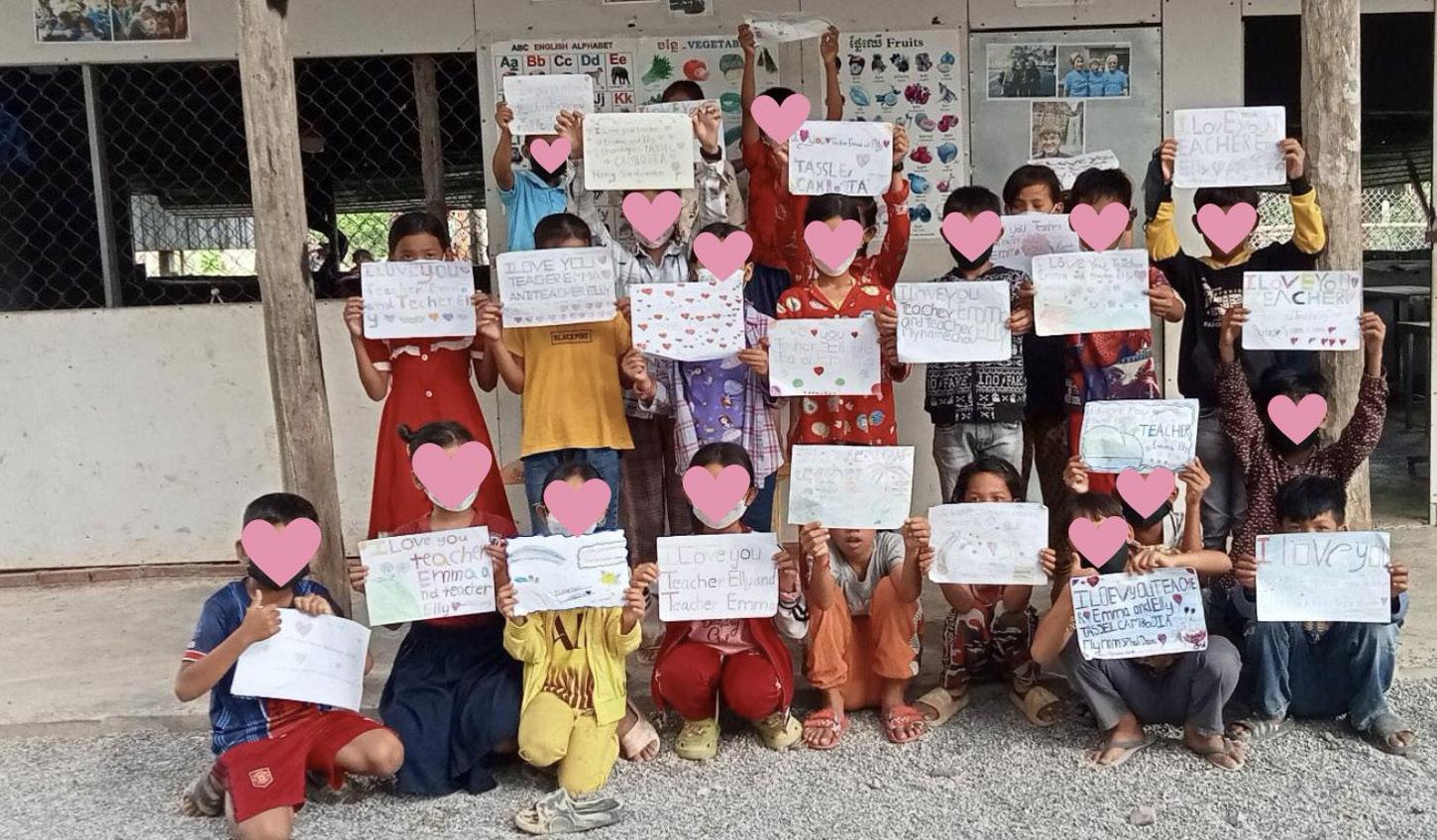
Now we’re opening a new chapter. While TASSEL connected us globally, we’ve also realized the importance of creating impact closer to home. That’s how Play it Forward was born. The name captures our ethos of applying the mindset and attitude we developed through TASSEL and “playing it forward” here in Shenzhen, China. We have taken the first steps with a visit to the Minai Special Children’s Welfare Institute, a local organization that supports children with special needs. While we don’t yet know exactly what form this partnership will take in the long run, we’re approaching it the same way we did with TASSEL: by listening, observing, and adapting to different circumstances. With Play it Forward, we will be face-to-face, present in the moment, and directly engaging with children who have different needs, abilities, and ways of communicating.
Our school community has already shown meaningful connections with the organization. Last year’s Talent Show team raised over 6,000 RMB, which went directly to supporting the children. More recently, some grades visited local centers as part of their service activities, spending time with children and building those face-to-face connections. At its heart, Play it Forward will focus on three things:
1. Interacting, playing, and teaching in creative and accessible ways.
2. Fostering a playful, supportive, and safe environment where children feel encouraged to learn and express themselves.
3. Building consistent connections through regular visits and creating a legacy of service by involving younger students to continue our initiative in the future.
Looking ahead, our vision for Play it Forward is grounded and realistic. We hope to establish a consistent and reliable presence where SIS students can contribute in ways that play to their strengths, whether it’s teaching, playing music, storytelling, or simply playing.
In many ways, Play it Forward reflects who we are as students. We’ve dedicated ourselves to TASSEL, learned from it, and now we’re reshaping those lessons into something new. It’s not about leaving TASSEL behind, but about carrying its spirit into a different context. As we await our first visit to the center, we realize that it is just the beginning: one visit, one chance to interact, one step forward. However, if TASSEL has taught us anything, it’s that small beginnings can grow into lasting traditions. That’s the hope we’re carrying as we turn the page and step into this next chapter of service.
Cambodian students showing their handwritten letters to the SIS VSee teachers

Embedding Purpose: How Service Learning is Transforming Our Sixth Form
By Michael Browning Head of Sixth Form, Garden International School
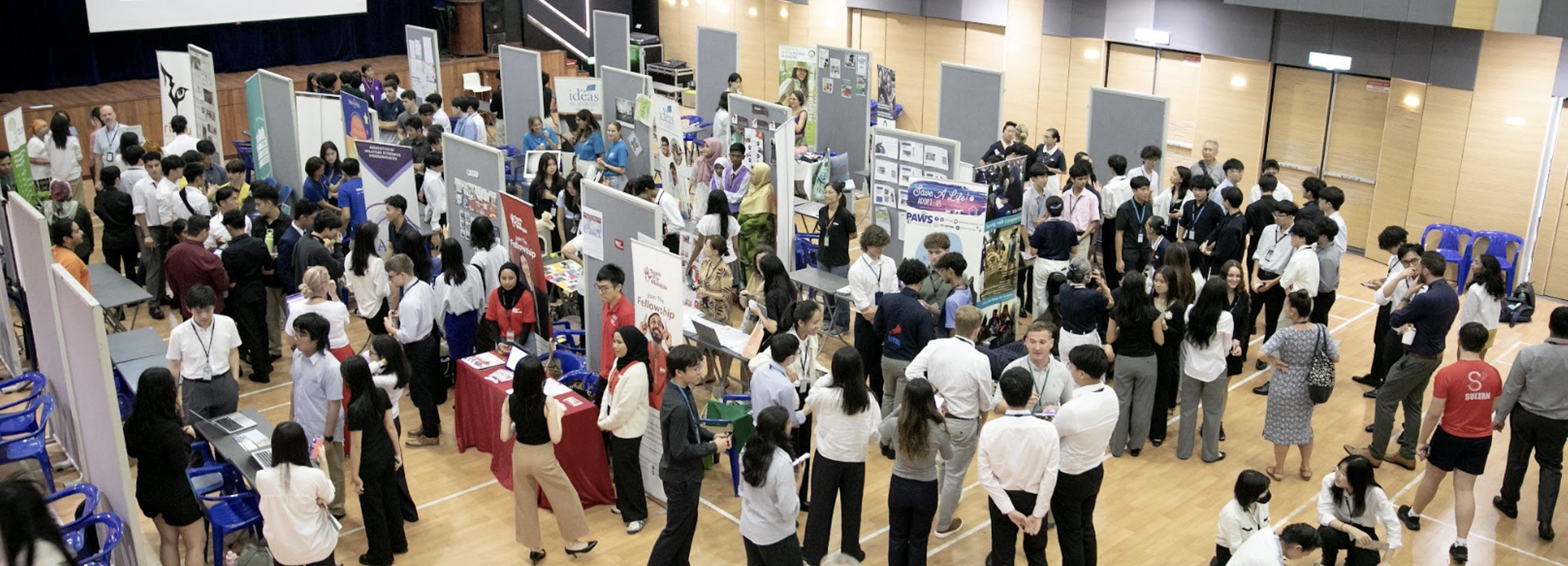
As Head of Sixth Form at a school with an exceptional track record in academic achievement and university admissions, I am always evaluating how we can further enhance the educational experience we offer. While the vast majority of our students gain places at their first-choice universities, I’ve long felt there’s a common shortfall across A-level programmes: the lack of structured service learning.
Some students go to great lengths to give back to their communities, yet many still access top institutions around the world with only tokenistic contributions to service. As we continue to remind our students that grades alone are not enough, we must also create the conditions for authentic connection to the wider world - opportunities to engage with the community, develop empathy, and understand the value of giving back.
A Diploma with Purpose
At Garden International School, all sixth form students work toward our Sixth Form Diploma. To achieve this recognition upon graduation, students must meet an academic standard, complete meaningful work experience, and actively contribute to a non-profit or NGO through our service learning programme, called Cultivate.
This final component is a more recent development which builds upon the strength of school wide approach to service learning. The Cultivate programme further supports our goal of giving students purposeful experiences that foster a deeper understanding of their place in the world. We believe that meaningful service supports holistic development, nurtures a sense of global citizenship, and sets students on a lifelong trajectory of purpose-driven action.
Student-Driven Partnerships
When students enter Year 12, they are expected to reach an academic benchmark while also co-creating an action plan to support a chosen organisation. To launch the Cultivate programme in September, we hosted an in-school expo where representatives from local NGOs and non-profits presented their missions. The enthusiasm among students was infectious, and each student selected an organisation to support for the year.
By October, we had timetabled opportunities for representatives to return and collaborate directly with students. These early interactions were powerful: some groups focused on fundraising, others on awareness campaigns, volunteering time, or enhancing the organisation’s digital presence. I encouraged our partner organisations to offer students ownership - to allow them to identify how they could add value. While ambitious, this goal inspired many students to stretch themselves, think creatively, and act with initiative.
A highlight of the programme was the site visits. Students spent a full day immersed in the work of their chosen organisation, meeting stakeholders and gaining first-hand insight into the challenges and rewards of service.
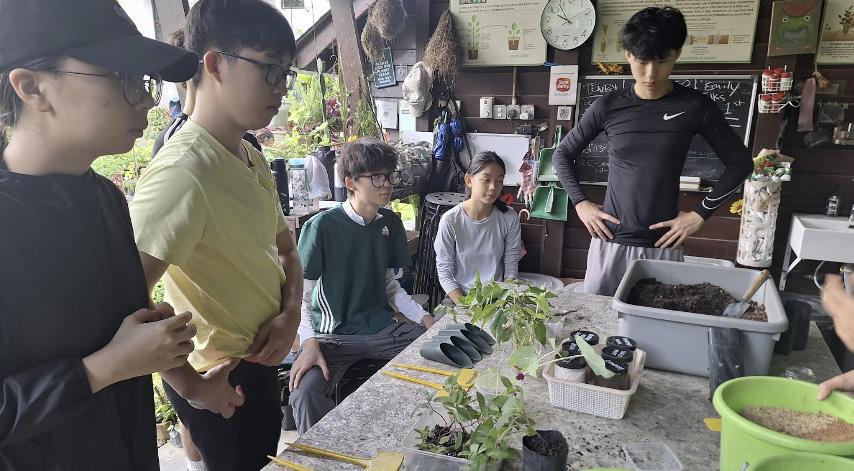
Cultivate launch - meeting organisations at the Expo.
Students learning about sustainability at the Free Tree Society

Collecting ideas to raise awareness at Greater Action
Maintaining Momentum
To ensure service learning remained a priority amidst academic and extracurricular demands, we integrated regular opportunities into our tutor time programme. Students met in small groups to evaluate their projects and were informally interviewed by members of the senior leadership team to reflect on their personal growth and the impact they were having.
Throughout the year, we encouraged students to use existing awareness events and school fundraisers as platforms to support their causes. They took the lead in organising auctions, open mic nights, and advocacy events - each one embedding the service programme more deeply into the school culture.
Growing Ambitions and Next Steps
Every student is on a personal journey when it comes to understanding the power of service. While some students made remarkable contributions, others were just beginning to discover what service means to them. This natural differentiation is not a flaw - it’s part of the growth process.
As we look to next year, we aim to strengthen our partnerships with local organisations and introduce online courses to broaden students’ understanding of global issues. We also plan to explicitly teach elements of entrepreneurialism to support student-led innovation within their service work. Our experience has shown that when organisations see the genuine value students bring, they become more open to entrusting them with greater responsibility - boosting both the students' confidence and the quality of their contributions.
Recognising Impact and Leadership
We believe in celebrating the standout successes. The EARCOS Global Citizenship Award has been an excellent way to acknowledge our most committed student changemakers. Unsurprisingly, those most engaged in service made the strongest applications for this recognition. This year we presented the EARCOS Global Citizenship Award to Thomas Lee in recognition of his exemplary work over recent years. For Cultivate, Thomas worked with the Art for Rare Programme and amongst a number of initiatives to raise awareness, Thomas and a team of students led an Art auction in school which raised over MYR40K!
Next year, we are encouraging these passionate students to take on greater leadership by guiding the next cohort. Our vision is for the service learning programme to become increasingly student-led, with Year 13 students mentoring and inspiring those in Year 12. We’re already excited to have a team ready to pitch the programme to our incoming cohort - students driving the programme forward with energy and vision.
Connecting with students at Ideas Academy

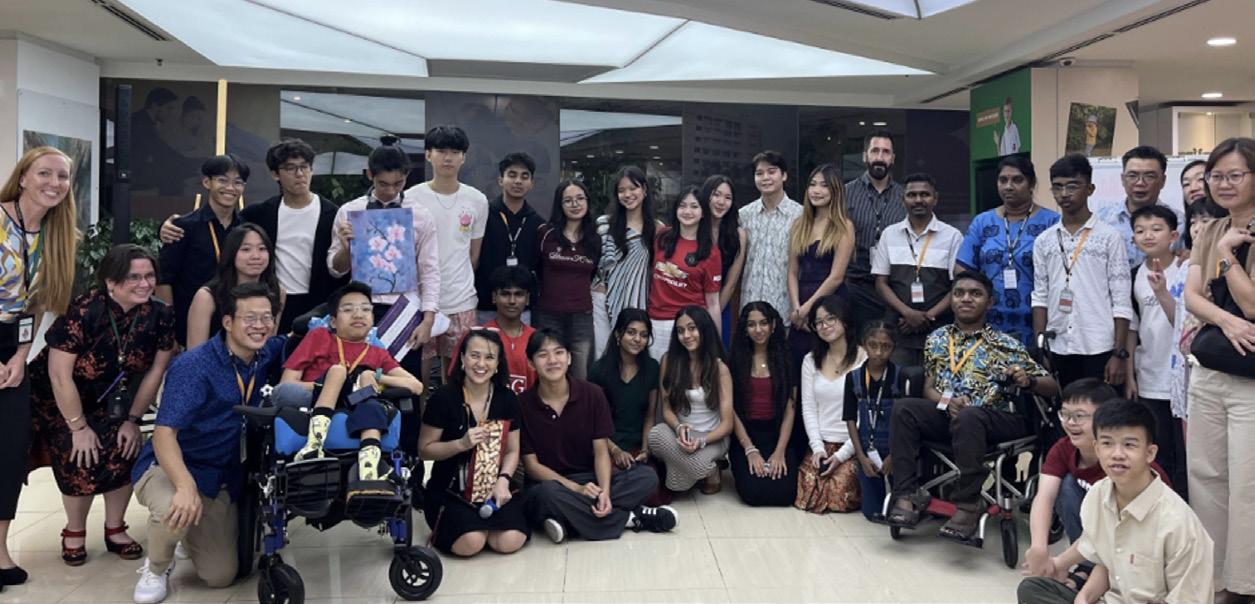
The hugely successful Art for Rare Auction
A Personal Reflection
A few years ago, I found myself with limited time for community work - juggling family life and professional responsibilities. But now, I am in the privileged position to help hundreds of capable and willing students make meaningful contributions to their communities. Even the smallest acts of service can compound into something significant - for others and for the students themselves. A huge well done to all of the students who have embraced the challenge this year - and a massive thank you to the teachers that have supported the Cultivate programme and of course, to our partner organisations that have afforded such meaningful experiences for the students.
Of all the initiatives I’ve been part of in my career, this is one that I am particularly proud of. I look forward to seeing how the Cultivate programme continues to grow, not only as a distinctive element of our Sixth Form experience, but as a powerful force for developing compassionate, purposeful, and communityminded young people.


Timely Choices: Modeling Sustainability for Lifelong Learners
By Mr. Anshu Verma Technology Director, The International School Yangon
Guided by our mission to be compassionate global citizens and our vision to nurture lifelong learners who create positive change, sustainability is woven into daily life at the International School Yangon (ISY). At ISY, we believe that sustainability is both universal and personal. It can be practiced anywhere, including classrooms, across campus, and within the wider community. Recent initiatives, such as the installation of solar panels, becoming a meatless campus, reusing old turf for community football grounds, and composting food waste, demonstrate how our school values are translated into action. These are more than practical solutions; they provide powerful models for our students, opening the door for them to be inspired and actively participate.
Student Learning Through Sustainability
Sustainability at ISY is a mindset that influences how students learn and act every day. By seeing how their choices connect to the broader picture, students develop a strong understanding that even a single design decision or material can have a significant impact on the entire community.
The Makerspace is one area where this mindset comes to life. Here, students experiment with discarded plastics, wood, and metal to test new creations, learning to design with both purpose and responsibility. One project has involved melting down plastics to press into coasters. What makes this initiative especially meaningful is the way it has been passed from one student to another over the years. Each new group learns the process, refines it, and then teaches it forward, often describing the experience as inheriting the project from others and preparing to pass it along again. This ongoing “handing over” builds a tradition in which sustainable habits are not only practiced but also strengthened and reimagined as the learning continues to grow. Projects like this highlight how sustainability is not only about innovation in the moment but also about building lasting habits of care for resources and for one another. The act of reusing materials becomes more than a single project; it becomes part of a shared culture, where responsibility and creativity are passed along as naturally as the objects students create.
ISY Inspiring Innovation: The Wall Clock Initiative
For many years, analogue clocks kept time across the ISY campus. While functional, they often showed different times in different rooms, created confusion, required constant battery replacements, and offered limited visibility. At the same time, a number of Chromebooks with broken screens and hinges could no longer be used for teaching and learning.
Rather than discard these devices, the ISY Technology Office saw an opportunity to turn them into something useful and worked to repurpose them into digital wall clocks. The frames for these


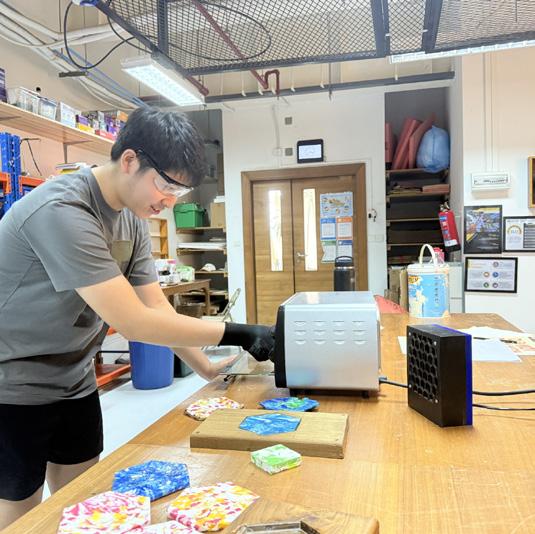

new wall clocks were built in the ISY Makerspace, alongside students using leftover wood, making the initiative almost entirely based on reused materials.
Today, digital wall clocks offer functions far beyond simply marking the hour: They play the national anthem each morning and broadcast alarms in the event of emergencies, such as earthquakes, fires, or intruder alerts. The first time the anthem rang out through the new system was a proud moment, showing how something once considered electronic waste could become central to daily life at ISY. What began as a functional upgrade soon revealed a much deeper impact on our school community.
The wall clock initiative did more than solve a timekeeping problem; it also addressed a broader issue. It reduced waste, avoided sending dozens of devices to landfill, saved costs, improved safety, and most importantly, modeled for our students how creativity and responsibility can transform challenges into opportunities.
By giving outdated technology a lasting purpose, the Technology Office provided an inspiring living lesson, showing our students that a sustainable future is built moment by moment, not only through major projects but also through small, timely choices. This same spirit is seen in student-led sustainable projects at ISY, from repurposing discarded plastics into new designs in the Makerspace to exploring ways to reduce waste and conserve resources. Together, these experiences demonstrate to our learners that every choice matters and that every second counts as we work to shape a better world.
Makerspace in Action Student learning through sustainability.
Inspiring Innovation: The Wall Clock Initiative. Makerspace in Action
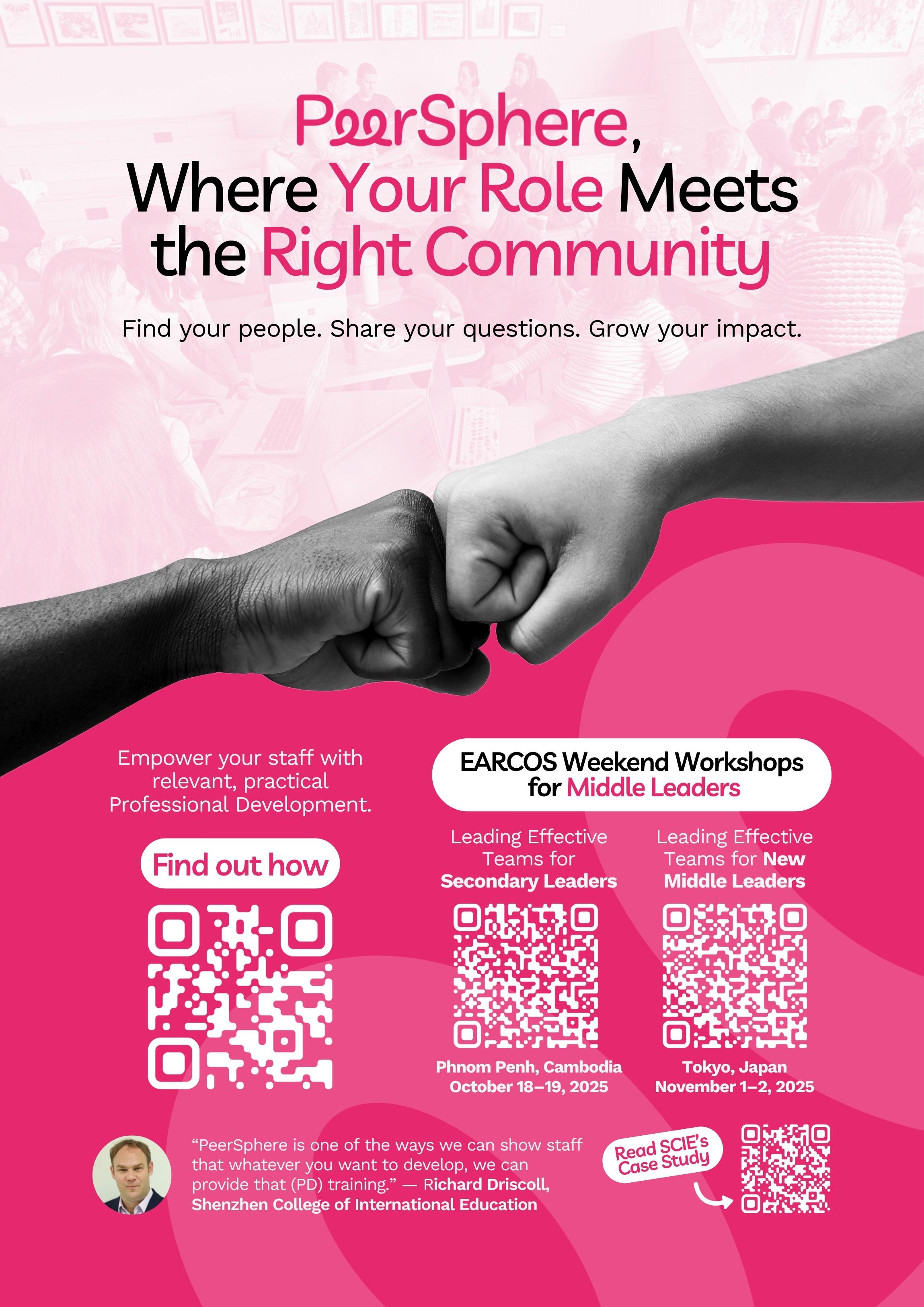
Green & Sustainable Sustainability as a Transformative Practice: Connecting Art and Environmental Awareness
By Catherine Traicos International School of Western Australia
This article explores how applying sustainability in the art classroom can become an embedded practice, more than a way to reduce waste, but a lifelong creative and critical mindset. Through focussing upon method and practice, arts educators can guide students towards an artistic approach of transformation that is in alignment with the IB Visual Arts frameworks and the UNESCO sustainability goals.
I arrived at the 2025 EARCOS conference in Kuala Lumpur keen to share my presentation on commitment to sustainability in the art room, and to connect with like-minded educators in the arts and other subjects. My workshop, Sustainability as a Transformative Practice, explores how environmentally aware practices in art education can go beyond reducing waste by utilising an approach that naturally aligns itself with an artistic practice. The Teaching for Artistic Behaviour (TAB) pre-conference was an encouraging first day and I was heartened to learn that encouraging student agency, process-based learning and treating students as artists is already a functioning practice for many art educators.
Sustainability in the Art Room: Beyond Reducing Waste
For a lot of young people today, environmental sustainability is less a distant concept and more a deeply personal concern. From a young age, students are critically aware of climate change, pollution, and the negative consequences of overconsumption. Many instinctively reject plastic materials, referencing destruction of beloved creatures in the ocean, and others express anxiety about fast fashion, sweatshops and an uncertain future for us all. There is heightened anxiety as well empathy. Together these form an awareness that is both a blessing and a burden.
By integrating sustainable art practices into the classroom, teachers can shift students from a state of fear to one of agency. Working with recycled materials, reimagining discarded objects, and embracing imperfection, working with that keen awareness, allows students to realise in a very material way that they are not powerless. Art becomes an act of transformation, a way to both creatively utilise waste and at the same time send a strong message about sustainability to their audience. More than being about reusing for artistic purposes, the practice is about reshaping a mindset.
It is an approach that connects with the UNESCO goal SDG 4.7 (Education for Sustainable Development), which emphasises global citizenship and sustainability thinking. It also resonates clearly with SDG 13 (Climate Action) by raising awareness of
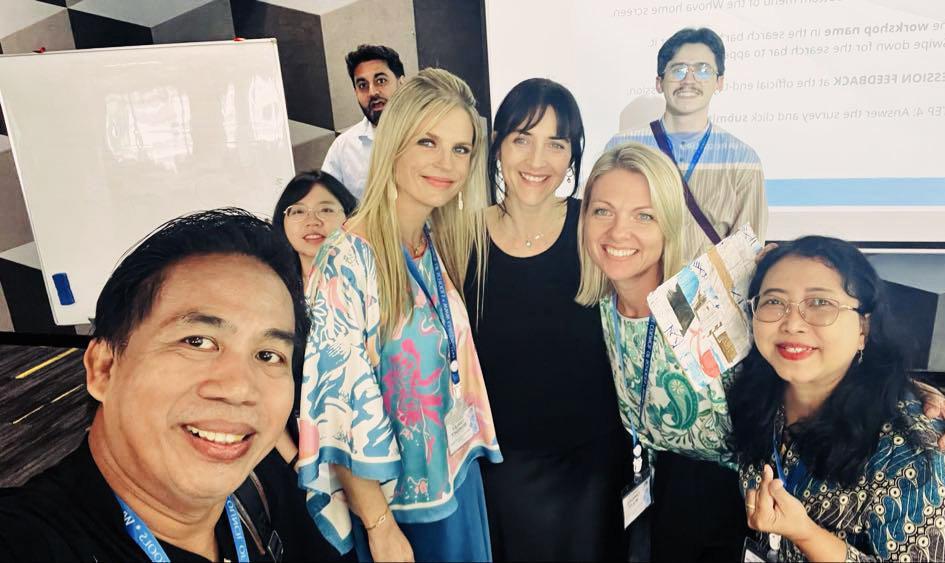


ecological impact through conscious actions and choices. Artists such as El Anatsui, Jody Quackenbush, and Fiona Hall exemplify this approach, using discarded materials such as aluminium cans, plastic waste and found objects to create intricate, evocative works. By studying such artists and experimenting with similar processes, students learn to reframe waste as potential, and begin to understand their role as artists with the potential to affect people’s lives. Old student artworks, test pieces, torn paper, food wrappers and pieces of paint solidified at the bottom of palettes change from being rubbish to becoming curious tools for creating new artworks.
Through the process of choosing materials from a range of “waste” products, students come to understand that artistic value lies as much in the process of creating and crafting as in the finished product. The ephemeral nature of certain sustainable artworks reinforces this idea, and invites students to reflect on impermanence, impact, and intentionality.
The work also connects with the IB Visual Arts programme through artistic enquiry linking to MYP Global Contexts, a reflective and documented practice with a strong conceptual component linking to the DP, and ongoing critical thinking, reflection and awareness of intent and impact.
The Three Principles of a Sustainable Art Practice
The following three principles form the foundation of a strong art practice and align naturally with a mindset of sustainability.
1. Letting Go: Creation as Destruction
Letting go is a fundamental component of any creative act. An artwork cannot exist while the artist is still working, perfecting or hanging onto it. This concept mirrors the respect for impermanence as it appears in Buddhist philosophy. Here, the transient nature of reality is a core principle, exemplified in the colourful and carefully created Tibetan sand mandalas, which are destroyed once completed. This destruction becomes a symbol of freedom from attachment and can be explored as a potent example in the art room where many students struggle with perfectionism.
It also emulates the Japanese process of wabi-sabi, where the aesthetic relies upon the concepts of transience and imperfection. Encouraging students to embrace imperfection within art making as an ongoing process of experimentation, cultivates resilience and deeper engagement.
2. Limitations: Necessity Drives Invention
Originality often comes through resourcefulness and limitations, whether these are material, time or space based, or other means. Limitations can be an artist’s best friend, serving to inspire through need. Restricting students to only using recycled materials, pushes them to naturally become more inventive and intuitive. Again, students learn to value what is unexpected and imperfect.
3. Awareness: From Consumers to Conscious Creators
At the heart of this practice of sustainability is the heightened awareness mentioned earlier, which many students are already hold and which can be redirected from a place of anxiety to one of empowerment. Students can learn adjust their consciousness by focussing upon on how waste materials are resources for creativity rather than something to be disposed of. The art room shifts from a place of creation and consumption to one of continual and conscious creation.
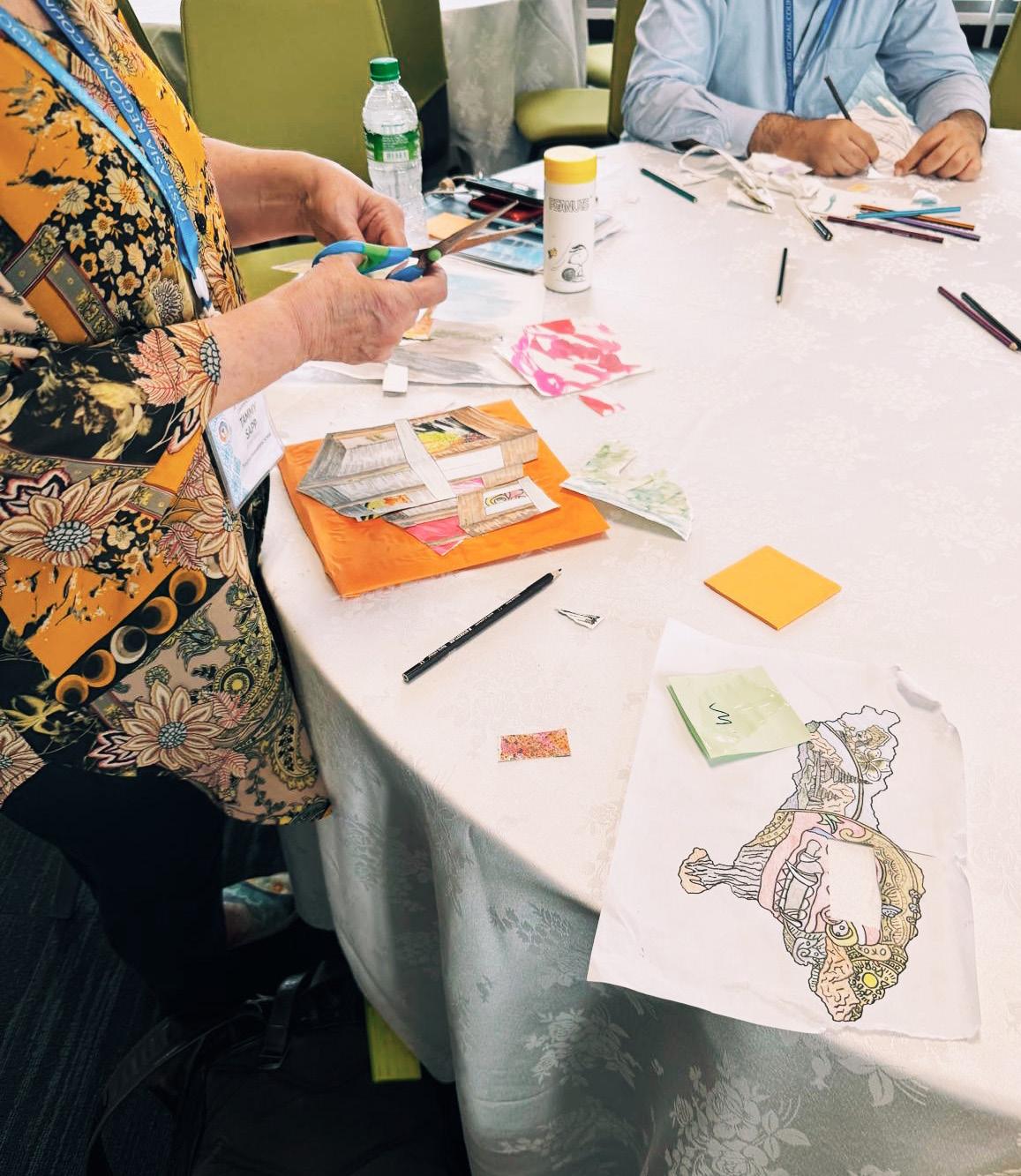
Some Practical Applications in the Classroom
Sustainable art doesn’t require elaborate supplies—it invites creative reuse. A few techniques mentioned are using old paint as collage material, repurposing past student artworks as mixed media pieces, and reworking old canvasses as new paintings or textiles projects. During the workshop, many art teachers shared that they are already implementing some of these strategies. We all shared further ways we can apply sustainability, such as having a large canvas next to the sink for excess paint to be added to, creating a layered collaborative artwork. Such simple shifts allow for new ways of seeing and making, transforming the familiar into the unexpected.
In the practice part of the workshop, educators engaged with these ideas hands-on, creating layered, expressive pieces from rubbish, repurposed materials and discarded student artworks. The results were not only visually engaging, but meaningful, revealing the rich conceptual nature of the practice.
Conclusion: Art with Intention
Embedding sustainability into Visual Arts education transcends responsible material use and fosters new ways of seeing, creating, problem solving and risk taking. It allows for a reflective creative practice, a greater tolerance of imperfection and an understanding of the transient nature of reality. The principles of letting go, embracing limitations, and developing awareness invite students to rethink not only what they make, but how and why they make it. When we empower students to create with intention and responsibility, we do more than cultivate young artists, we shape conscious, adaptive thinkers who understand the power of art to reflect, challenge, and change the world.
About the Author
Catherine Traicos is a Visual Arts Teacher3 specializing in both the Middle Years Programme (MYP) and the Diploma Programme (DP) at the International School of Western Australia.
Moonlight
Looking for a Life-Changing Educational Adventure for Your Students?
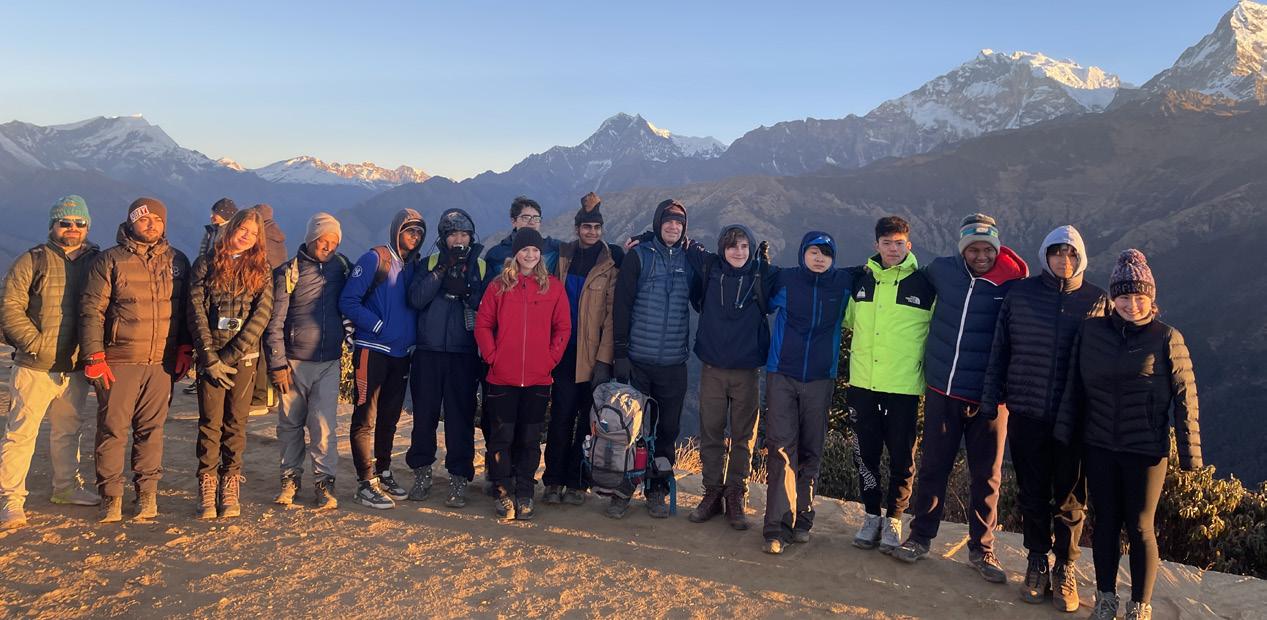
Discover Nepal with Moonlight Nepal Trekking: Cultural Immersion, Service Learning, and Outdoor Exploration Await
Moonlight Nepal Trekking & Adventure provides international schools with a unique and impactful platform to immerse students in experiential learning that combines outdoor adventure, cultural immersion, and purposeful service. These thoughtfully curated programs go far beyond sightseeing—they nurture personal growth, foster empathy, and build global awareness.
A journey with Moonlight is more than just an educational trip; it’s a transformative experience rooted in self-discovery, meaningful connections, and lasting social impact. With an unwavering focus on safety, sustainability, and student development, Moonlight empowers young students to become thoughtful, compassionate, and responsible global citizens.
For international schools seeking a safe, unforgettable, and deeply enriching educational experience—Nepal is the classroom and Moonlight is the trusted guide.
A Unique Educational Journey in the Himalayas
Moonlight Nepal Trekking & Adventure offers international schools customized journeys that blend trekking, cultural immersion, and service learning. Each program is tailored to a school’s curriculum and students’ abilities, ensuring a safe, supportive, and challenging experience.
Moonlight programs focus on:
• Experiential learning that fosters resilience, confidence, and independence
• Cross-cultural engagement built on mutual respect
• Sustainable travel and strong local partnerships
• Uncompromising safety, with certified guides and a licensed doctor
In Nepal, students explore breathtaking landscapes and vibrant communities, developing leadership, empathy, and a deeper understanding of global issues. These transformative journeys
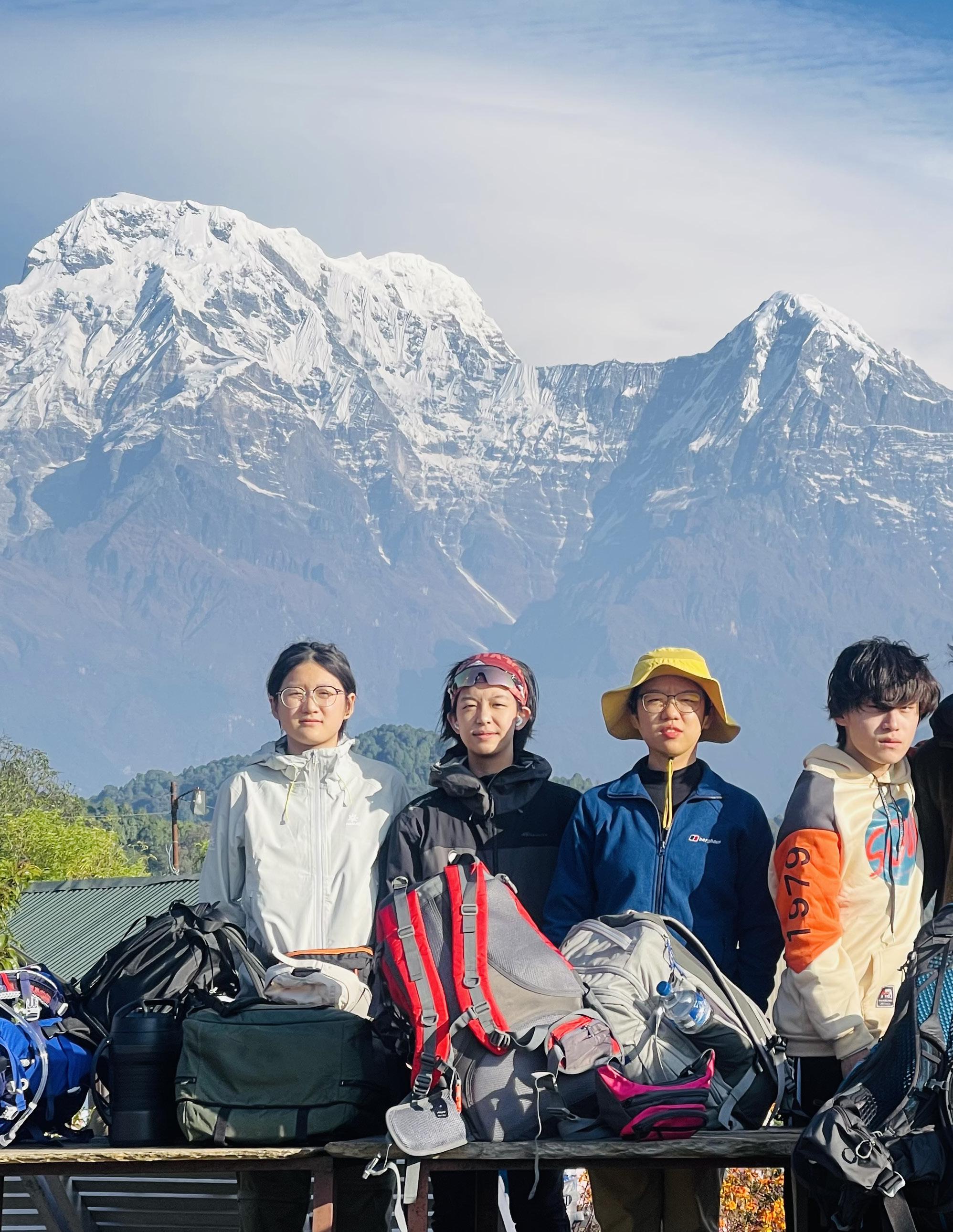
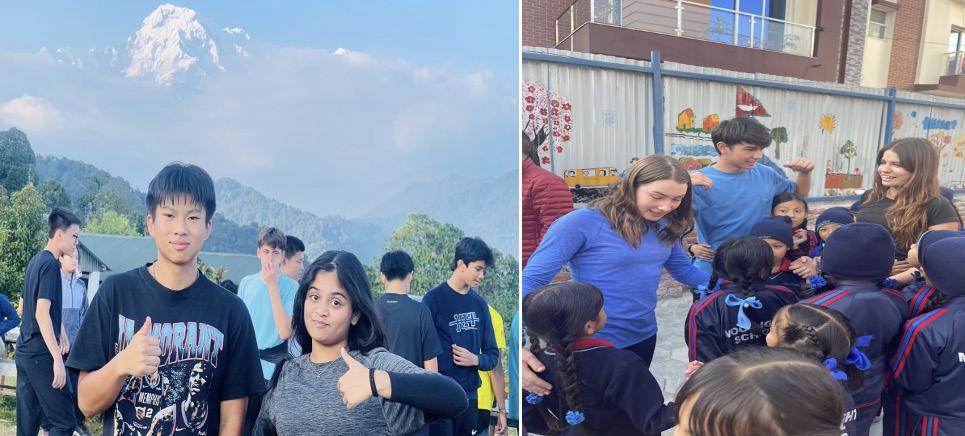
promote personal growth and lasting connections, creating a truly global educational experience.
A Lasting Social Impact
While Moonlight Nepal Trekking & Adventure offers transformative journeys for international students, its mission goes far deeper—driving meaningful social change in Nepal.
Through an innovative and impactful model, 60% of all post-expense profits are reinvested into Moonlight Foundation Nepal School, a nonprofit that provides free, high-quality education to children from underserved communities in Nepal. https://www. moonlight.org.np/
This powerful approach creates a full-circle impact: students from around the world engage in purposeful learning experiences, while their participation directly supports expanded educational opportunities for local children. It’s a compelling example of global citizenship in action—where travel becomes a force for equity, empowerment, and lasting change.
Program Overview
Experience an immersive and enriching school trip with Moonlight Nepal Trekking & Adventure—designed exclusively for international schools. This fully customizable program combines adventure, community service, and cultural immersion, delivering a unique educational journey.
Key features include:
• Duration: Typically 6–7 days
• Trekking: 4–5 days, tailored to accommodate students’ fitness levels and interests
• Community Service: 1–2 days at Moonlight School, supporting local education
• Cultural Immersion: Visits to UNESCO World Heritage Sites in the Kathmandu region
Whether you have a specific plan in mind, wish to add extra activities, or need adjustments, Moonlight will customize the itinerary to seamlessly align with your school's schedule, interests, and goals—ensuring a truly unique and meaningful experience.
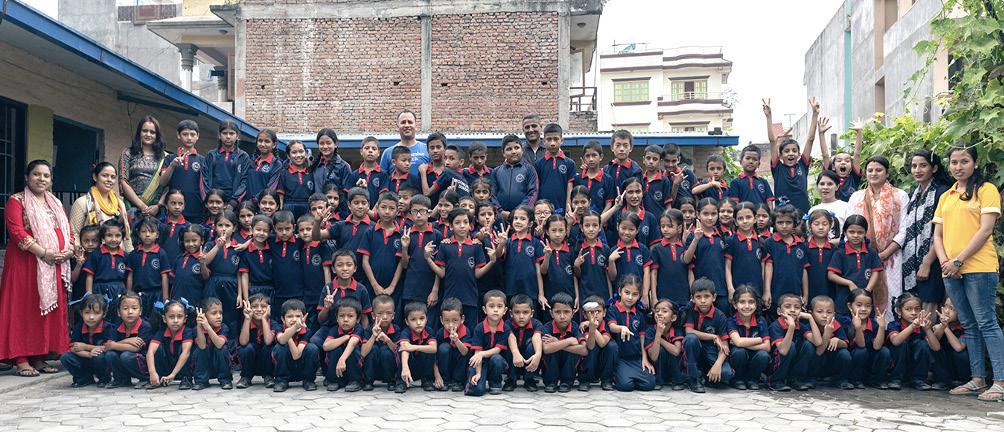
Moonlight Foundation Nepal School: Transforming Lives Through Education
Established in 2009, Moonlight Foundation Nepal School has provided access to education for more than 1,500 children— many of whom would otherwise be unable to attend school. Today, the school supports over 200 actively enrolled students, offering not only academic instruction but also, school uniforms, and comprehensive care to ensure their well-being and success.
What’s truly inspiring is that many of the older Moonlight students are now mentoring others, supporting children from similar backgrounds, and continuing the Moonlight Foundation Nepal School's mission of equity, empowerment, and ensuring that every child has the right to education.
“Moonlight isn’t just a school or a trek—it’s a bridge between worlds,” says Santosh Koirala, founder and director. “Our students and visitors learn from each other, grow together, and build a future rooted in mutual respect.”
Trusted by EARCOS Member Schools and Global Partners
Moonlight Nepal Trekking & Adventure proudly collaborates with leading international schools, including:
1. International School Bangkok (Thailand)
2. American International School Hong Kong
3. NIST International School Bangkok
4. Canadian International School Hong Kong
5. Seoul Foreign School (Korea)
6. Keystone Academy Beijing (China)
7. Seoul International School (Korea)
8. Alice Smith School (Malaysia)
9. Korea International School
10. German Swiss International School Hong Kong
11. Wellington College International Bangkok
12. Cairo American College (Egypt)
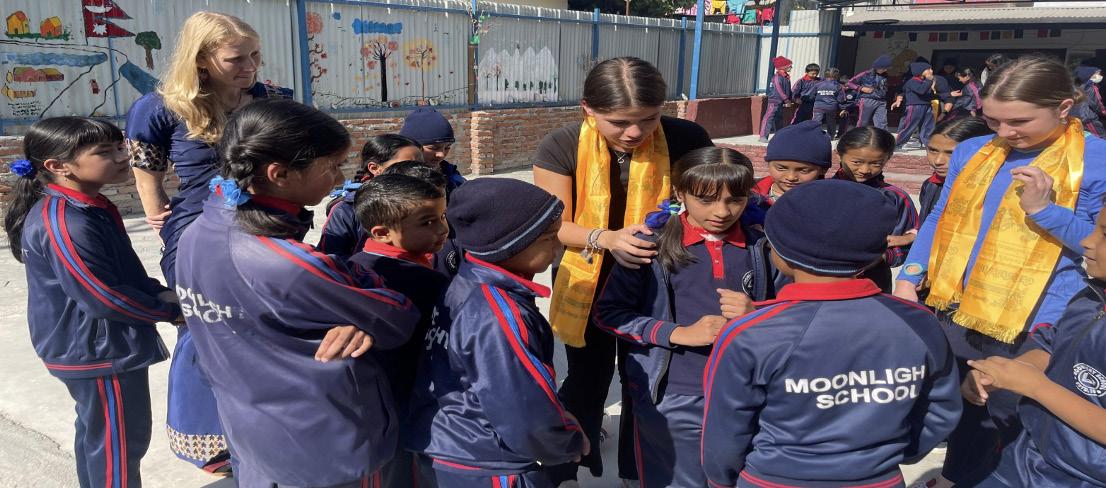
Many of these schools return year after year, recognizing the profound impact these programs have on their students’ personal growth and development. As their network of international schools continues to expand globally, a vibrant community of learners and educators is formed—one that is dedicated to nurturing the leaders of tomorrow.
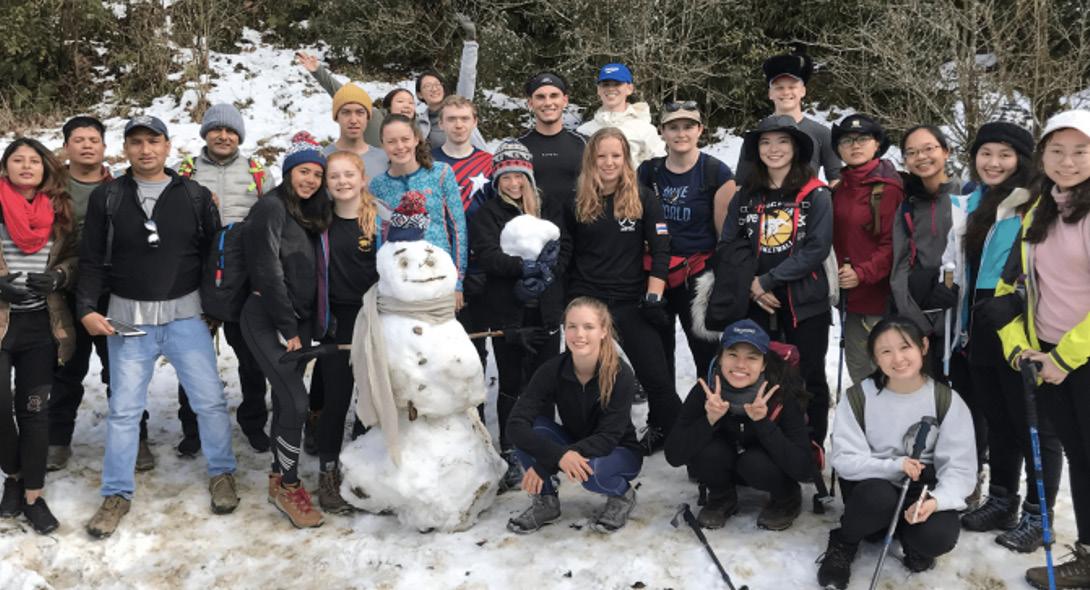
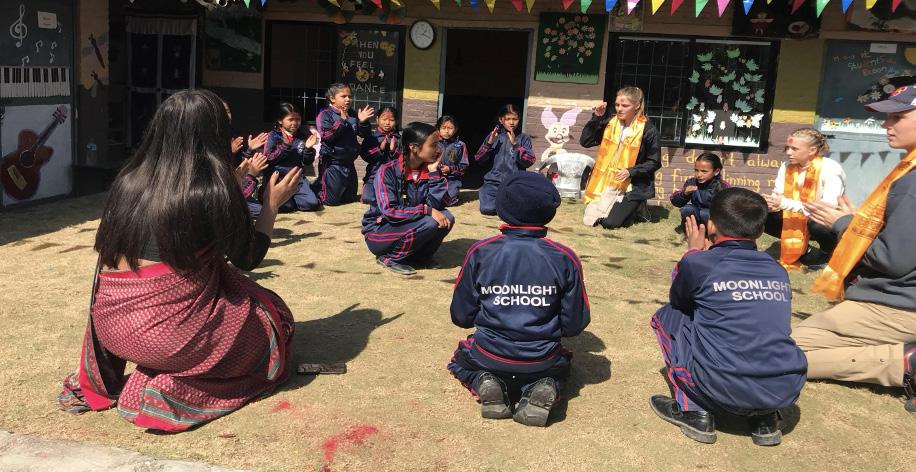
Learn More or Get Involved
For more information about how your school can partner with Moonlight Nepal Trekking & Adventure, please visit:
Phone Number: +977 9841698855
Email: info@moonlighttreks.com, santoshkoirala333@gmail.com
LinkedIn: http://linkedin.com/in/santosh-koirala-438463145
Facebook: https://www.facebook.com/moonlighttreks/ WhatsApp (for quick communication): +977 9841698855


Elementary Art Gallery

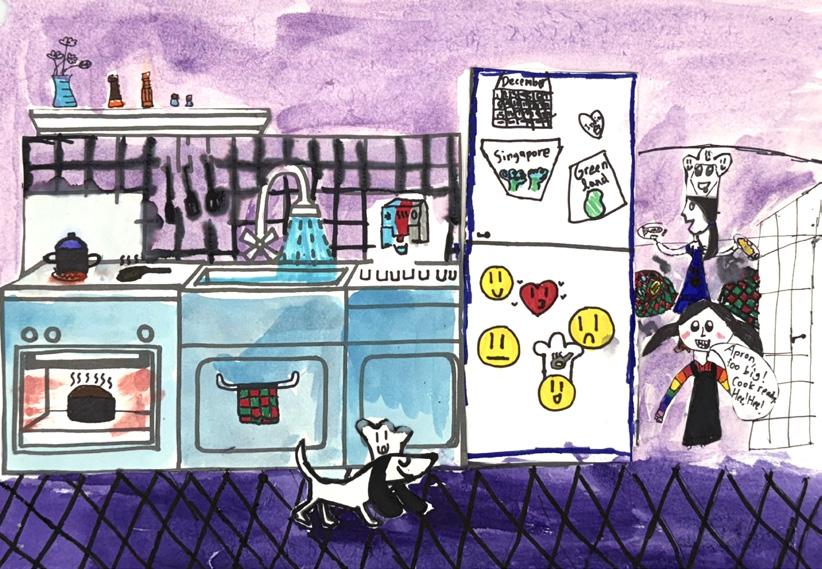
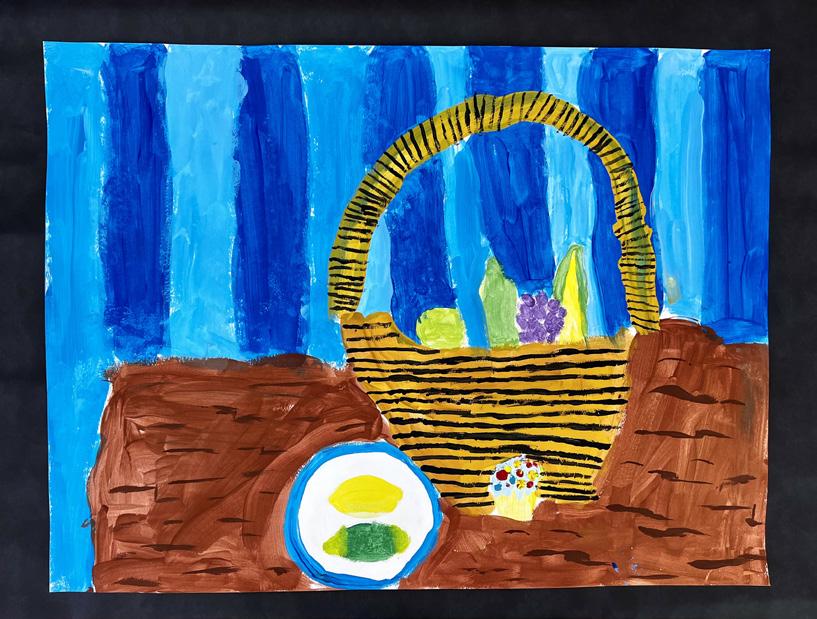
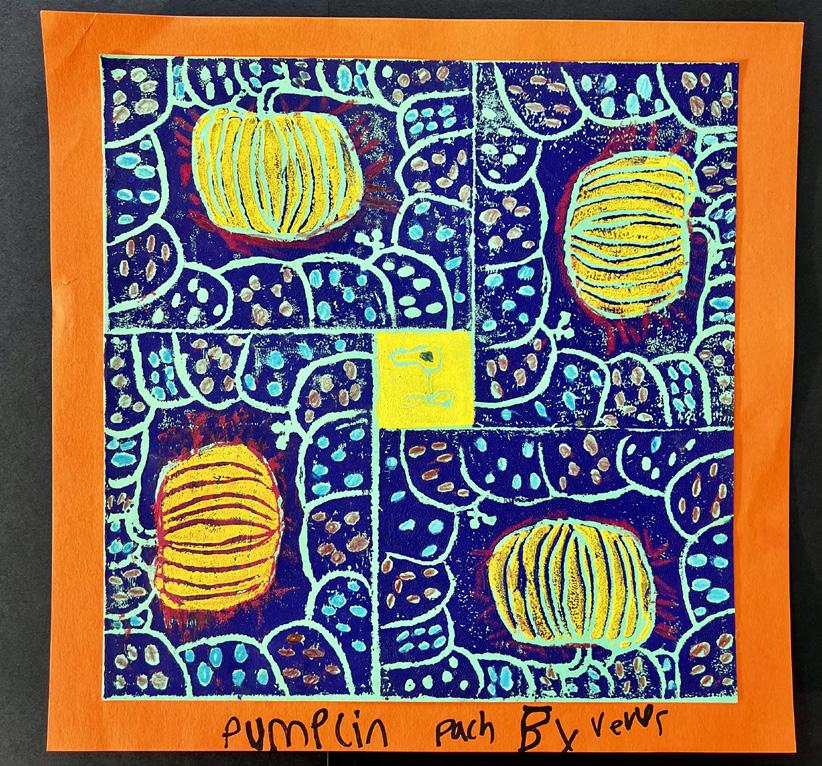
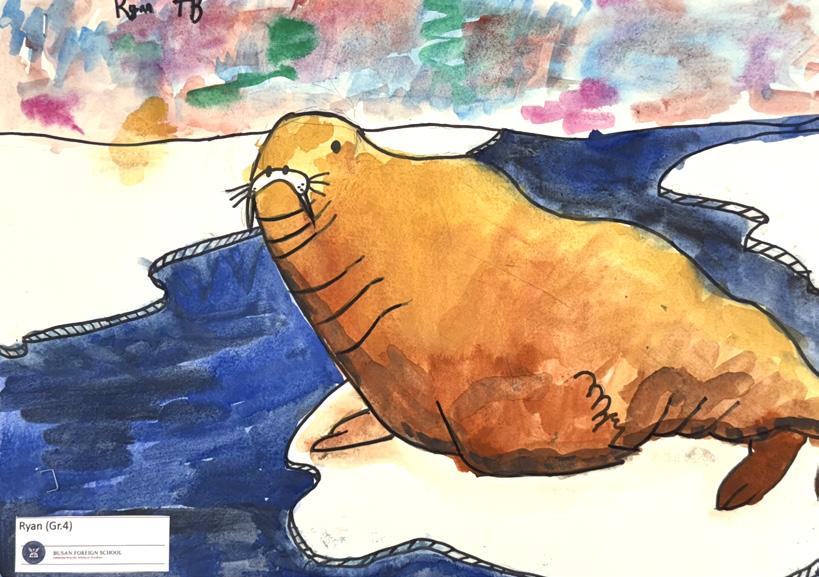


International School Ulaanbaatar
(Left)
Pumpkin Patch
Verus Cao Horta
Grade 4
Print 9 x 9
Busan Foreign School
(Left)
Jihyun Wang, Grade 5
(Right)
Ryan Ratje, Grade 5
(Left)
Jisika Philip, Grade 5
(Right)
Ellie Kim, Grade 4
International School Ulaanbaatar

(Left)
Still LIfe
Boldmaa Moeller
Grade 3
Tempera on paper 17 x 24"
(Right)
Clay TeaPot
Dimitriy Sergeyev Grade 1
Elementary Art Gallery
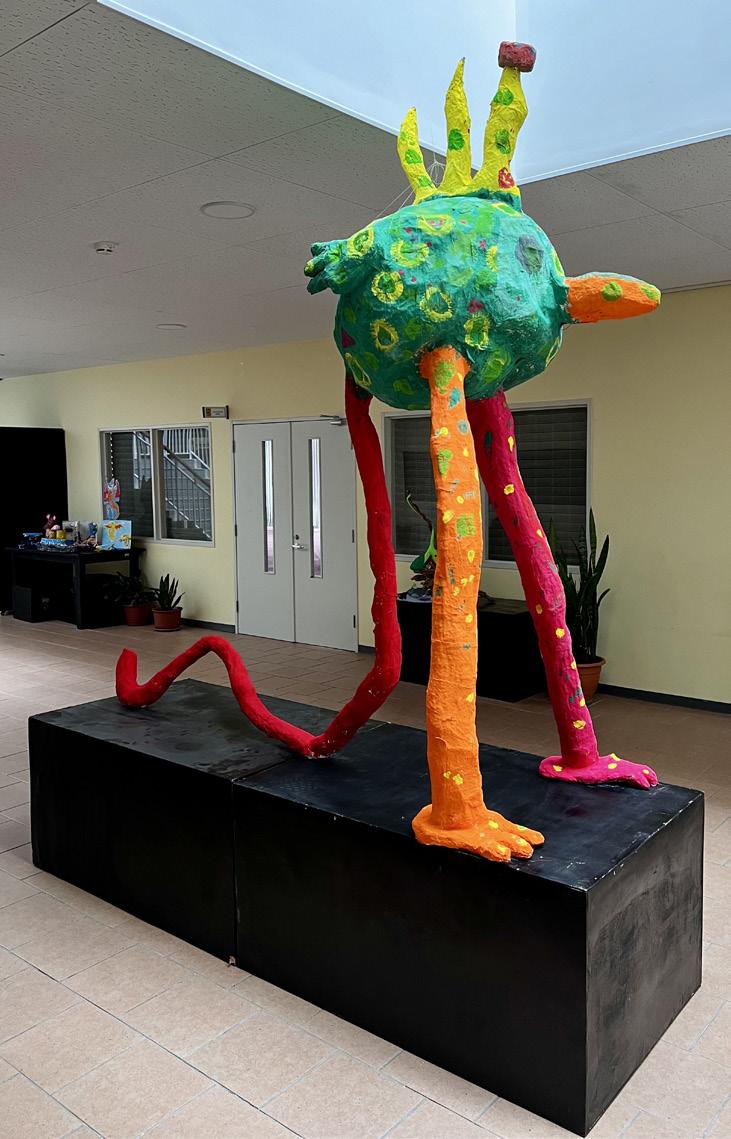


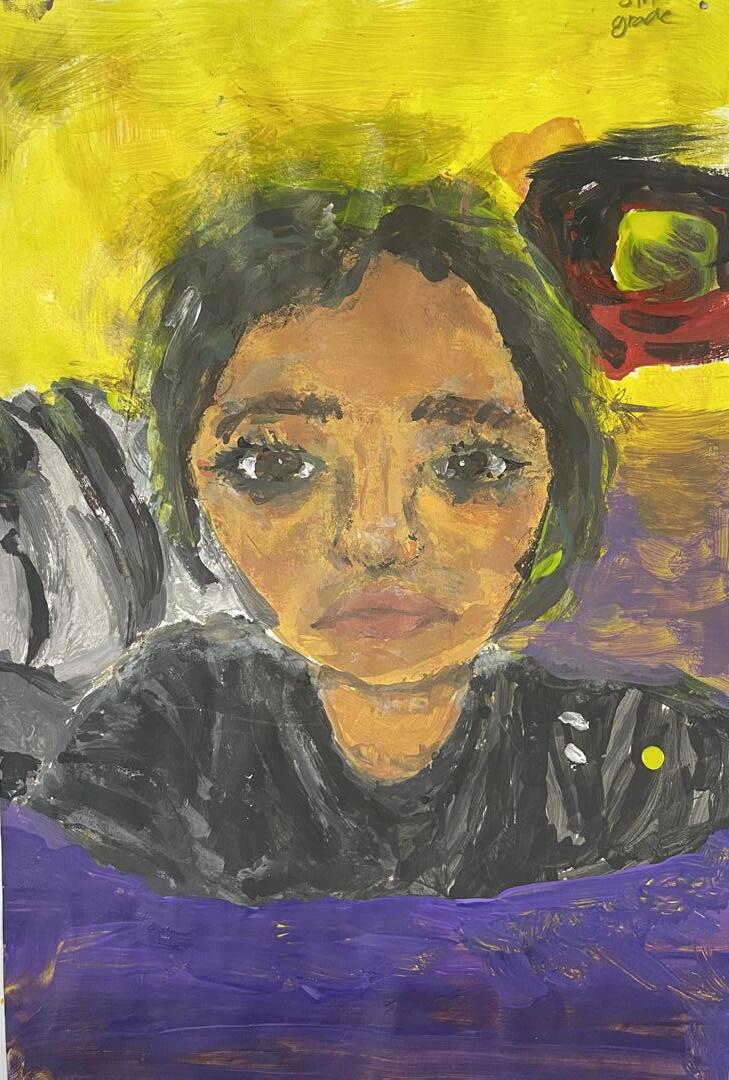

International School Ulaanbaatar
(Left)
Chicken Monster
Yaakov Gerard Guerra Mejia, Yuta Otsuka, Takahito Suzuki
Grade 2
Mixed Media
2 x 3 x 1 m
(Right)
Still Life
Kenneth Zeng (Kenny)
Grade 5
Graphite on Paper
5 x 7

Mt. Zaagkam School
(Left)
Portrait Blanca, Grade 5
(Right)
Giraffe Dana, Grade 1

